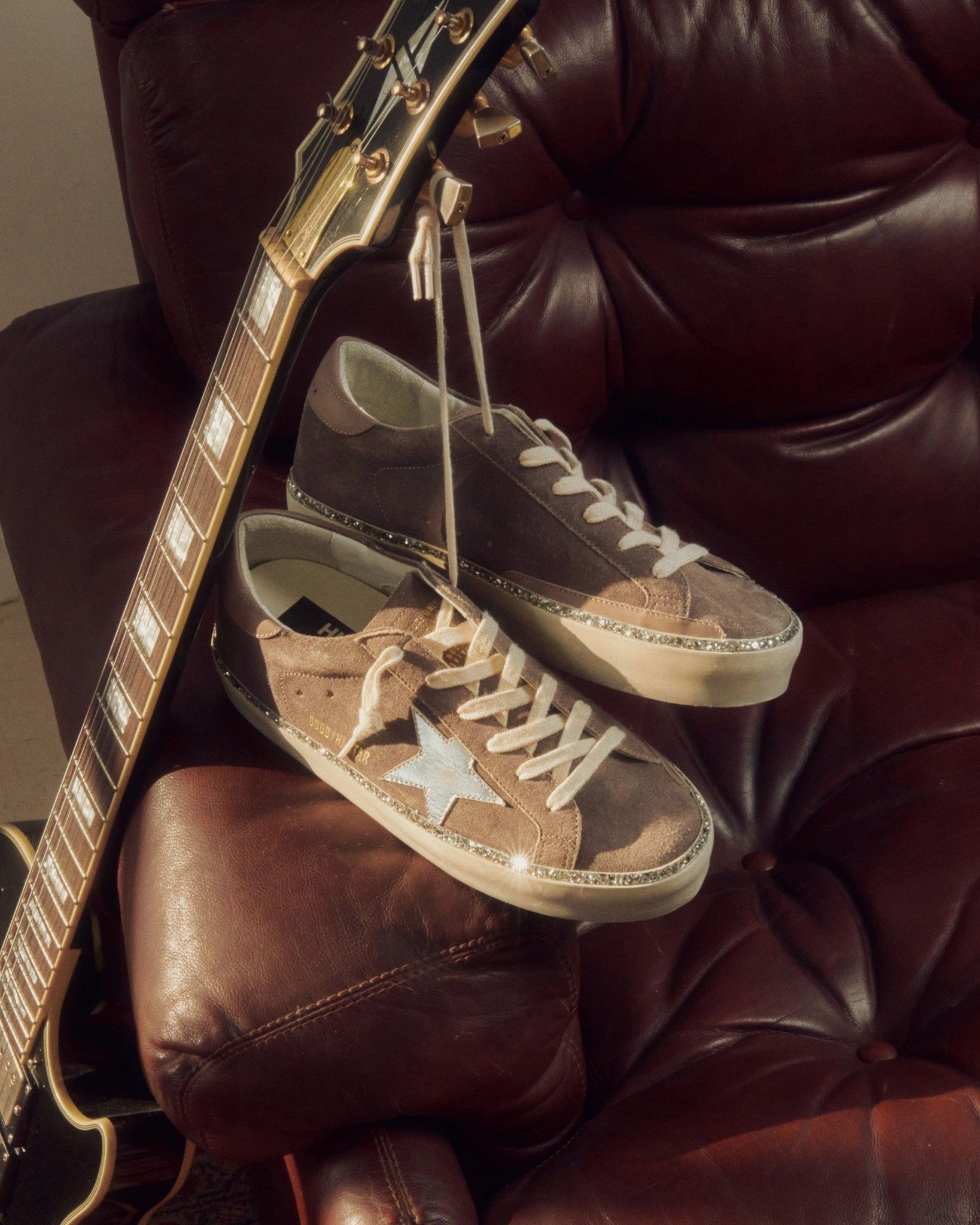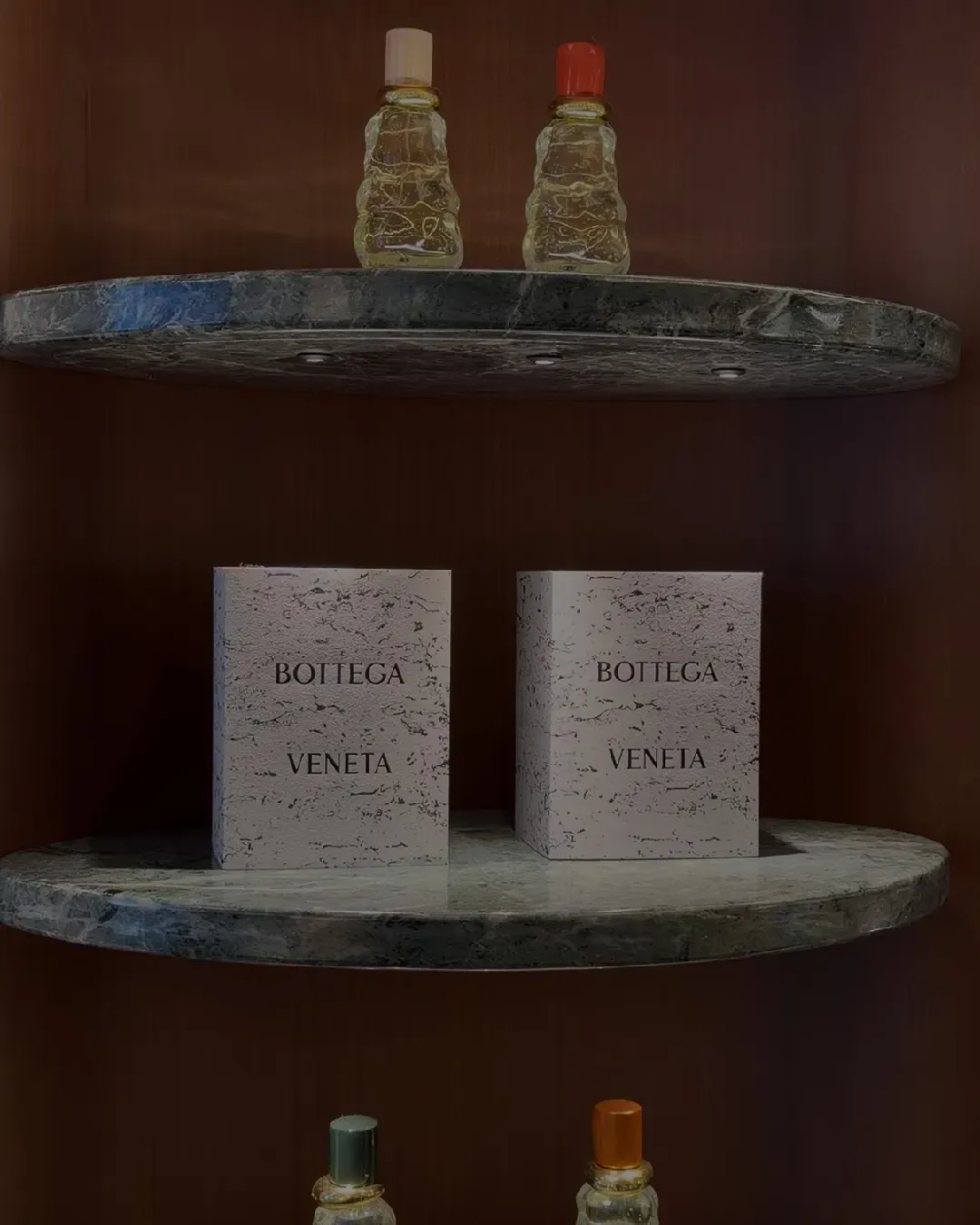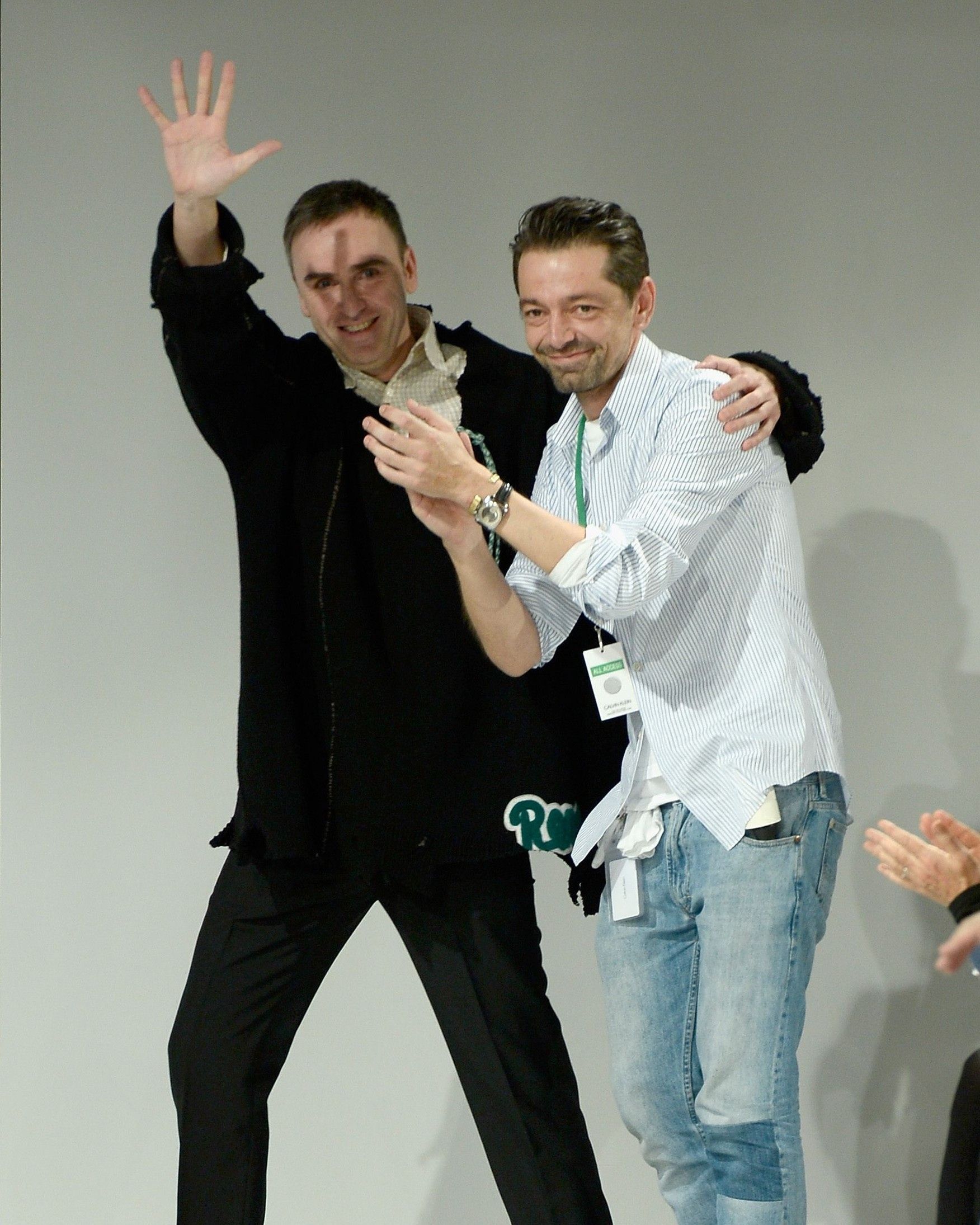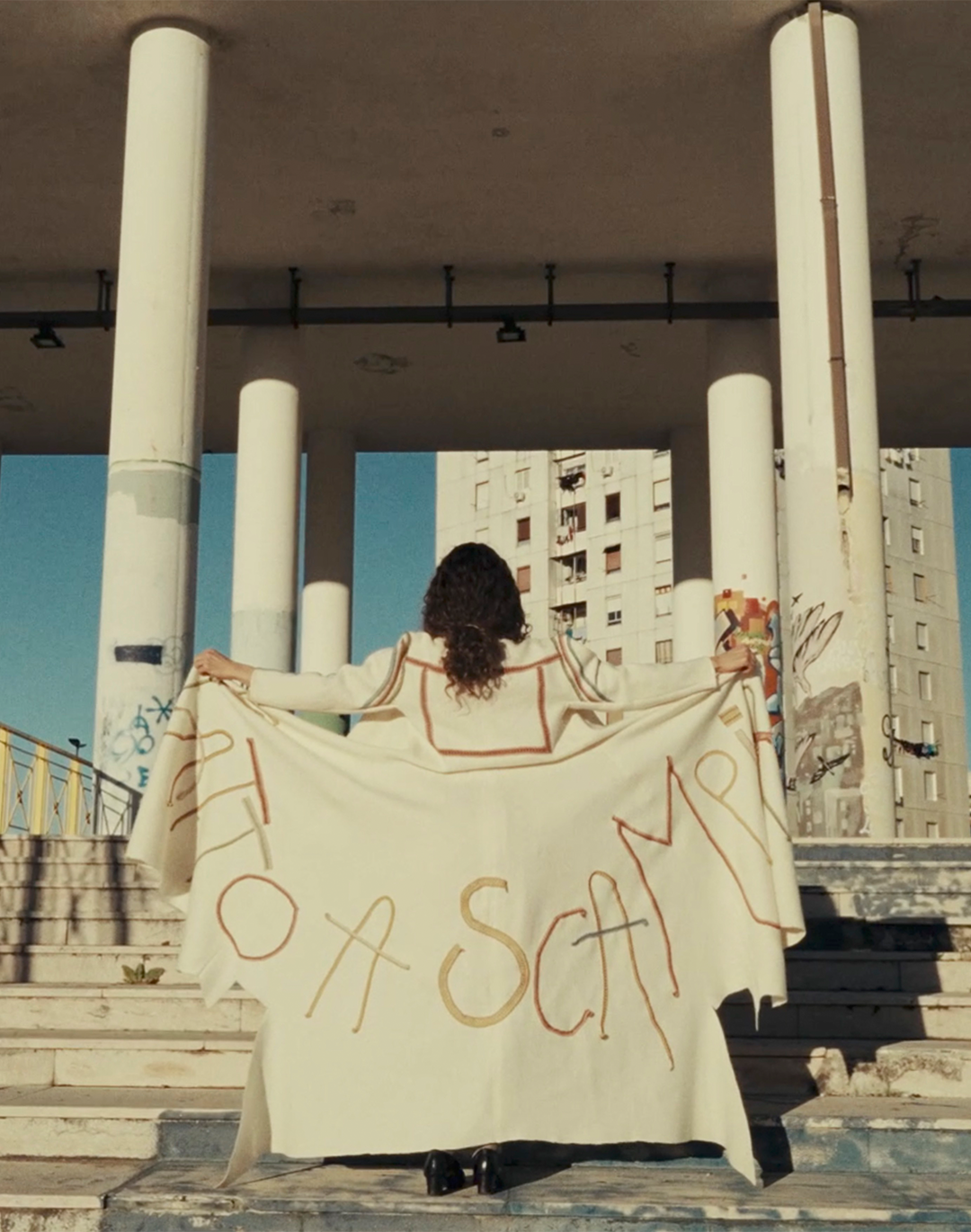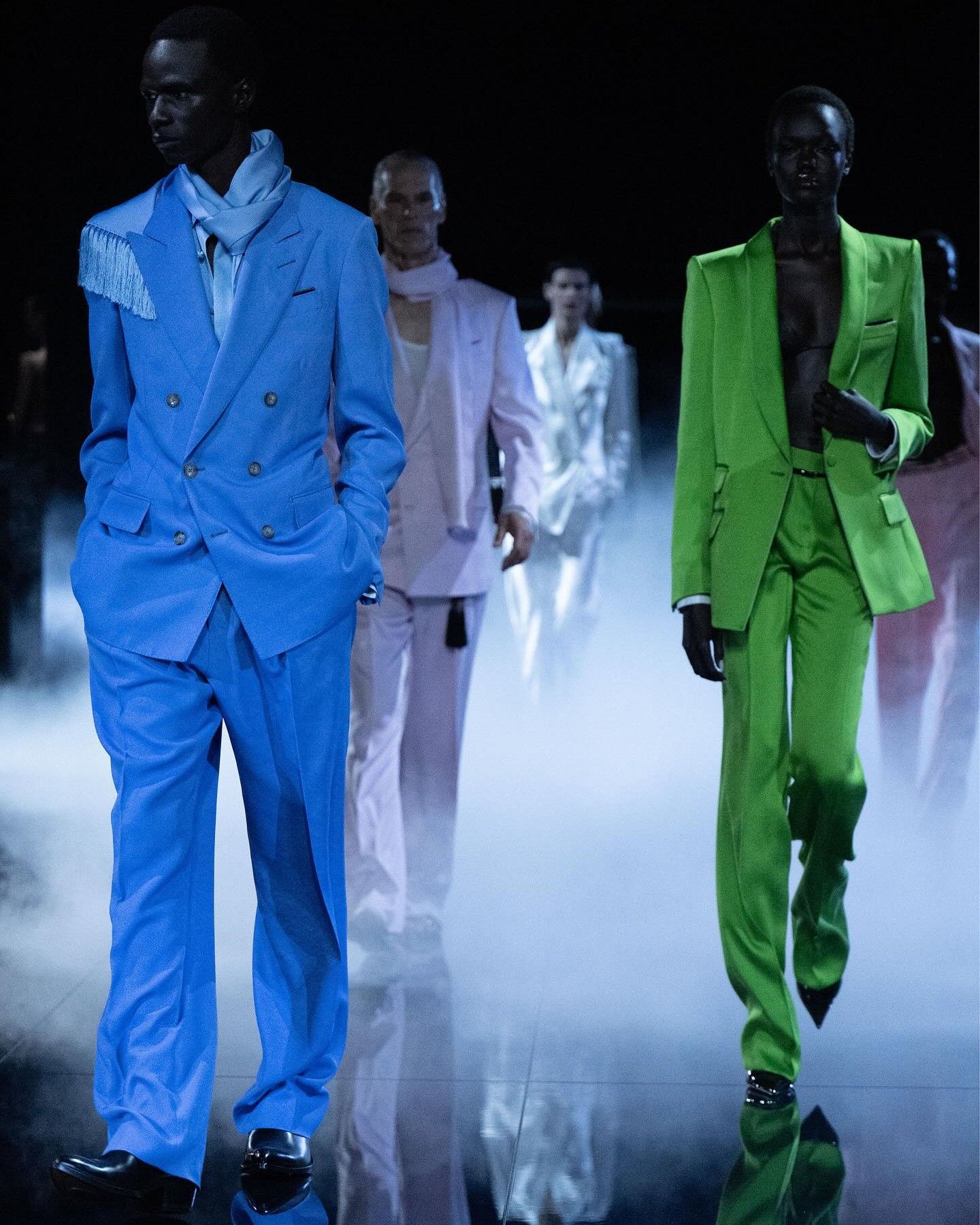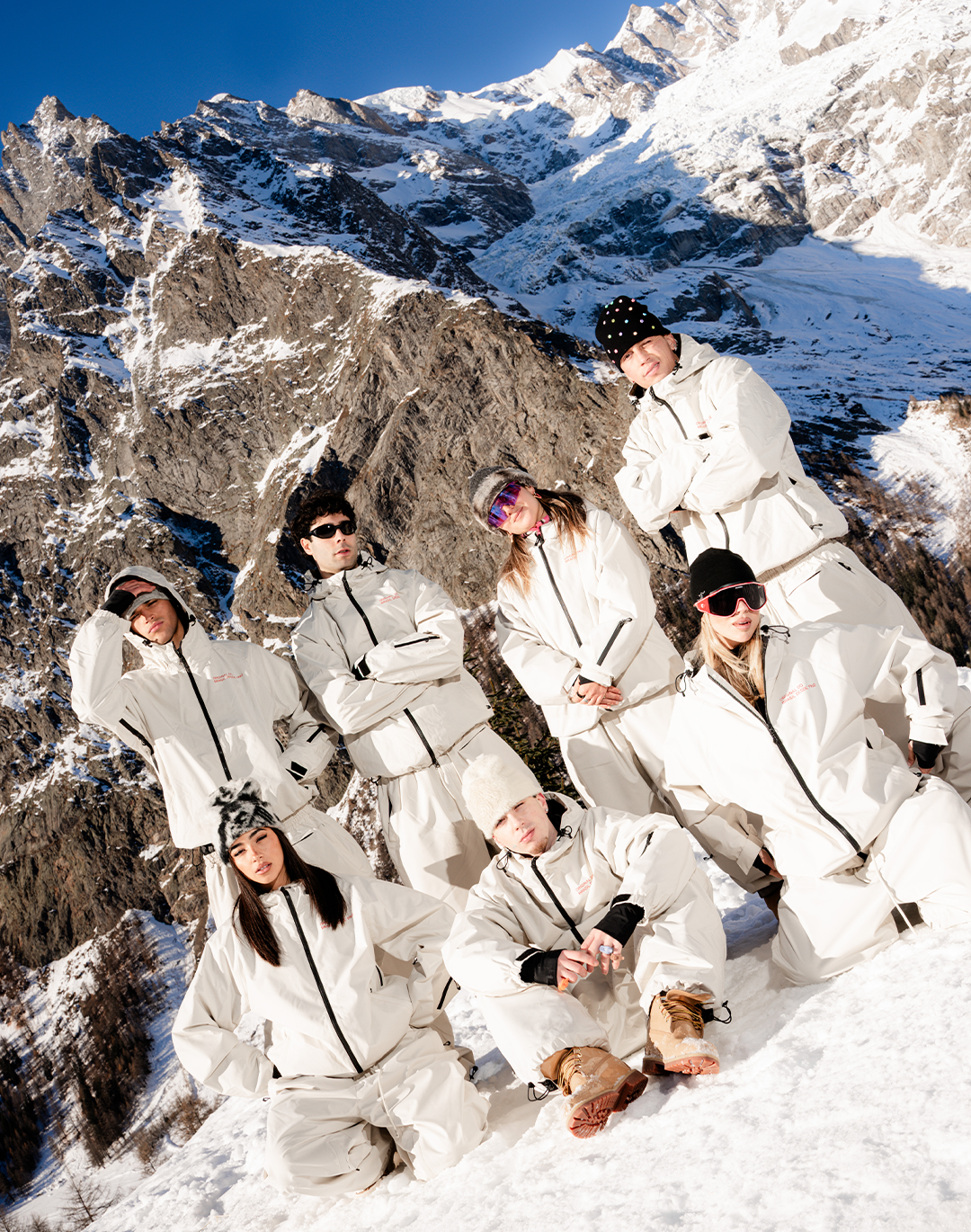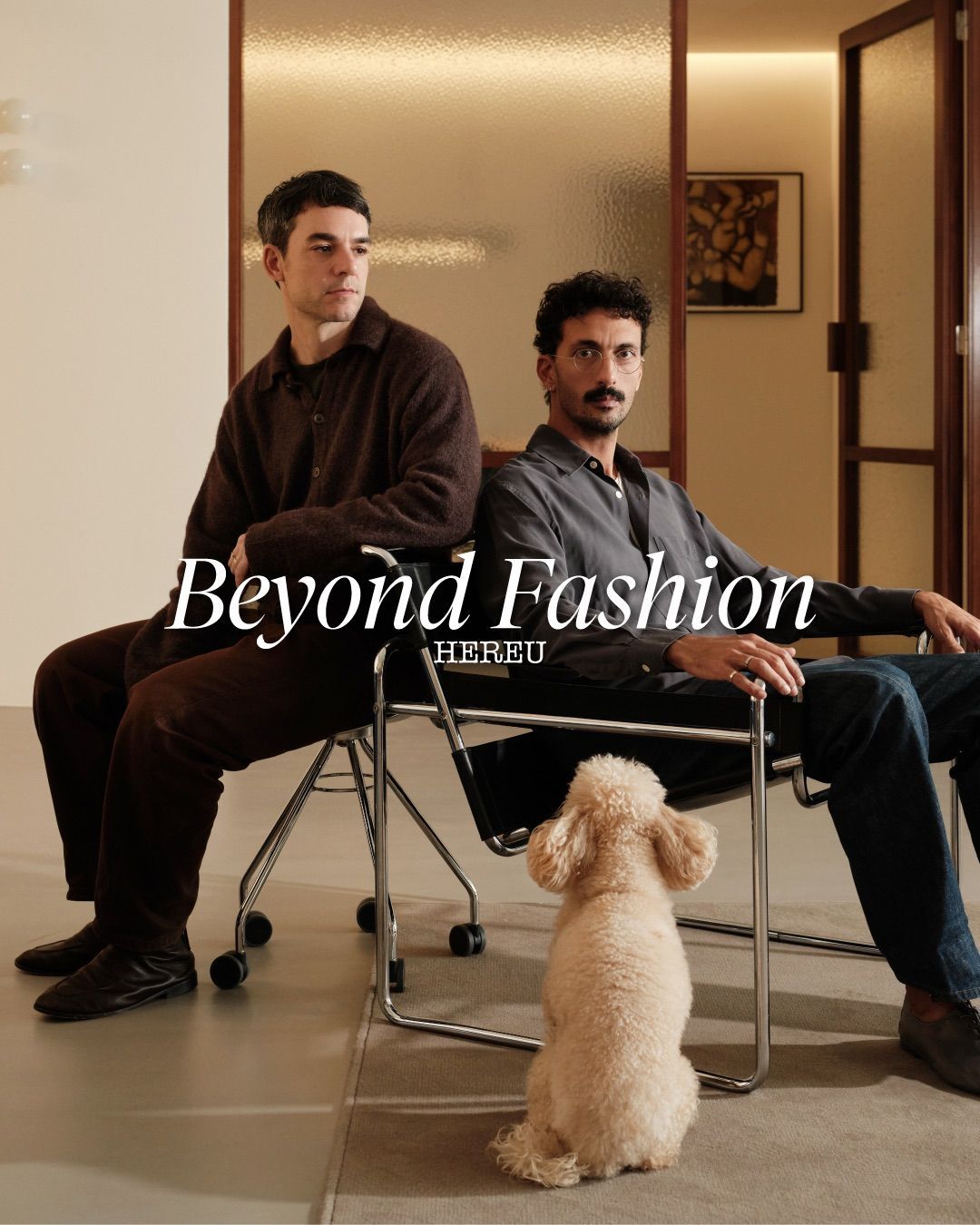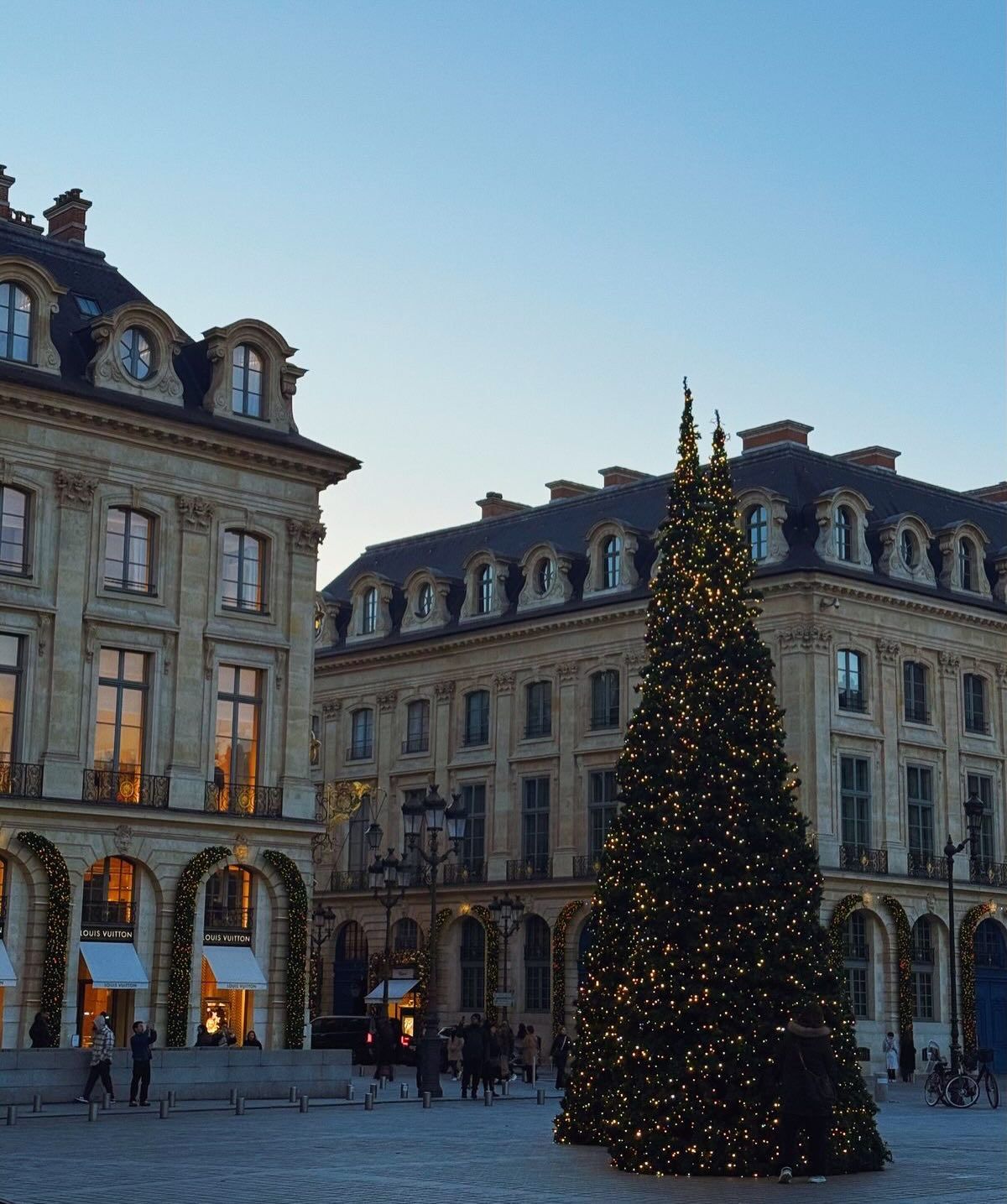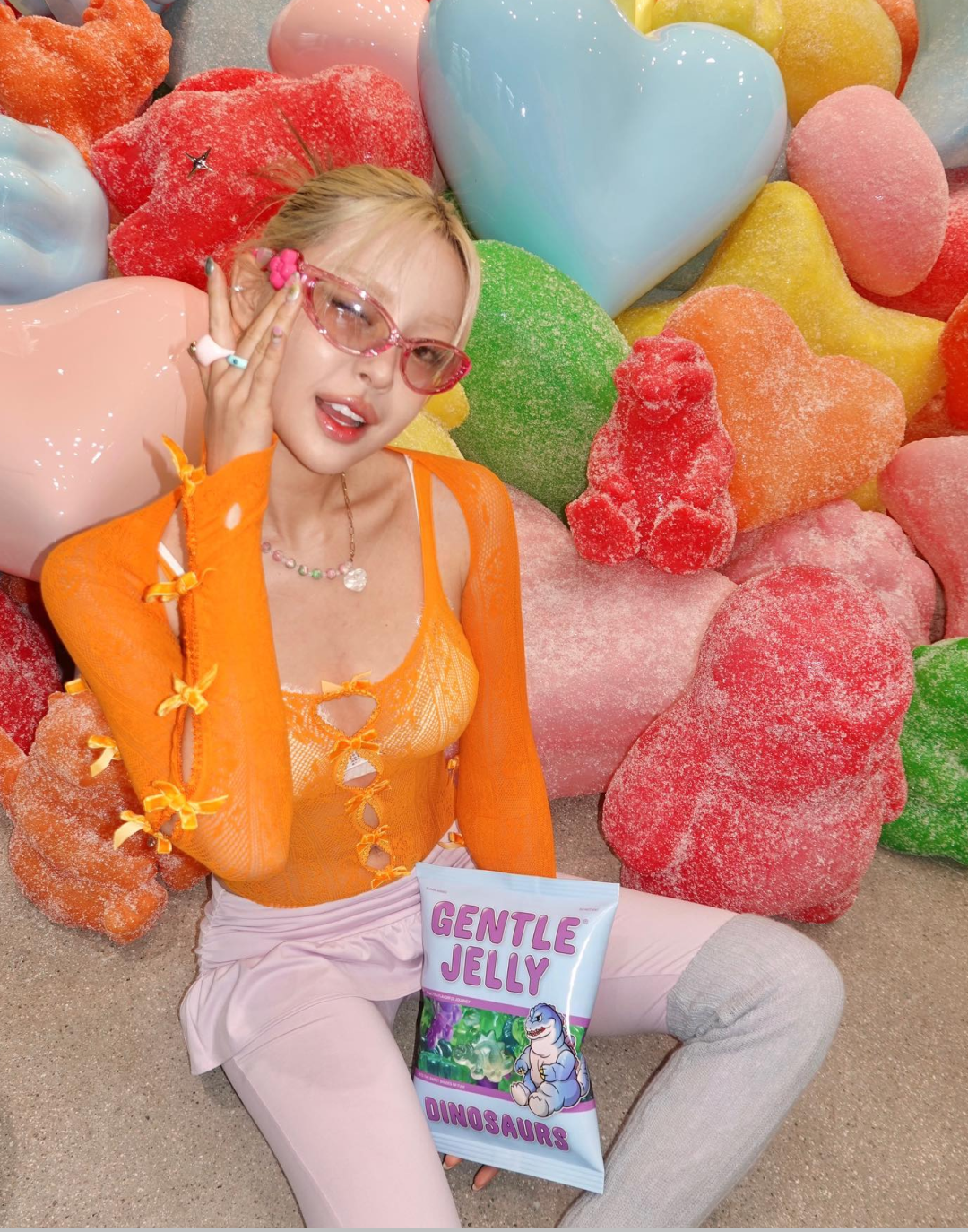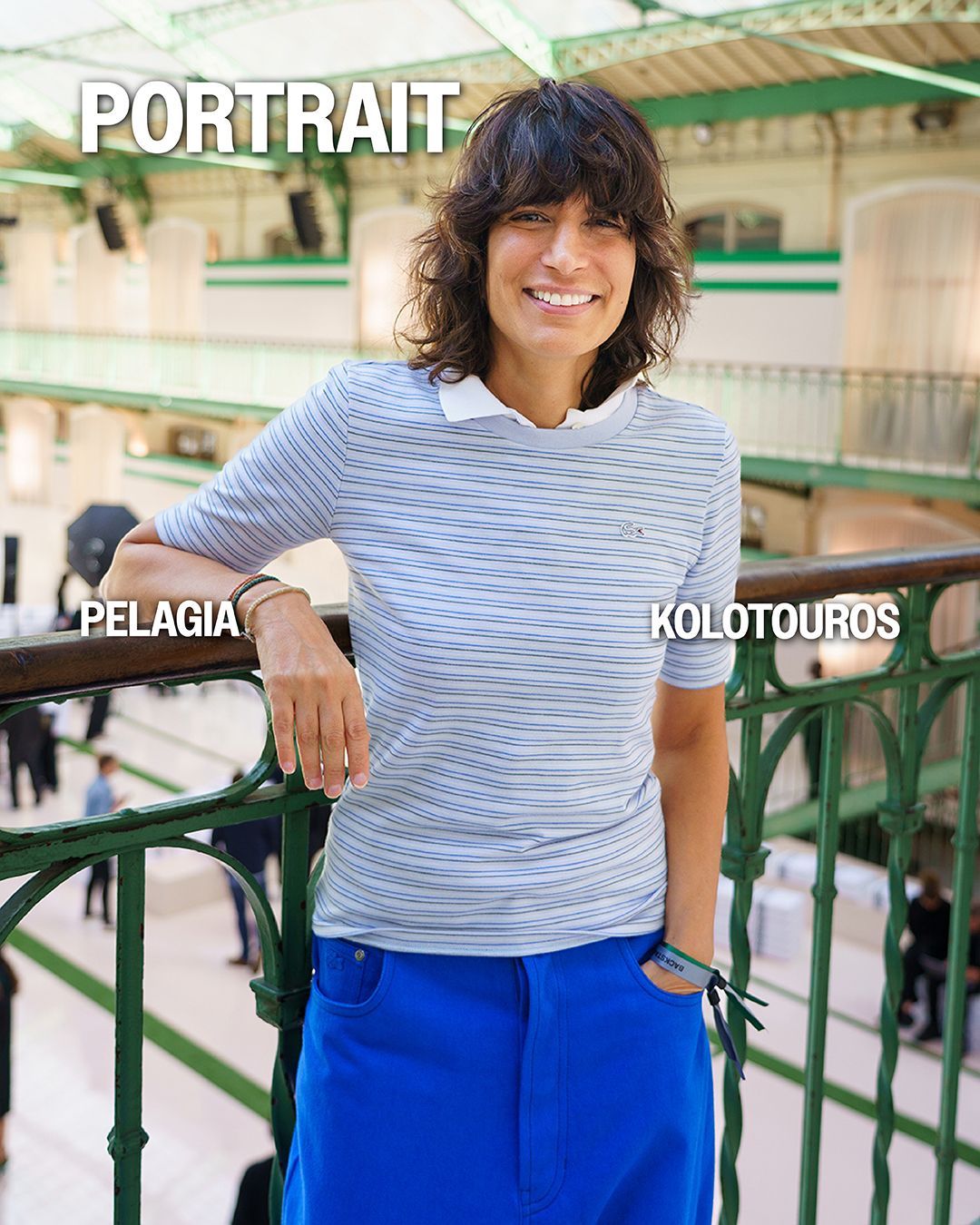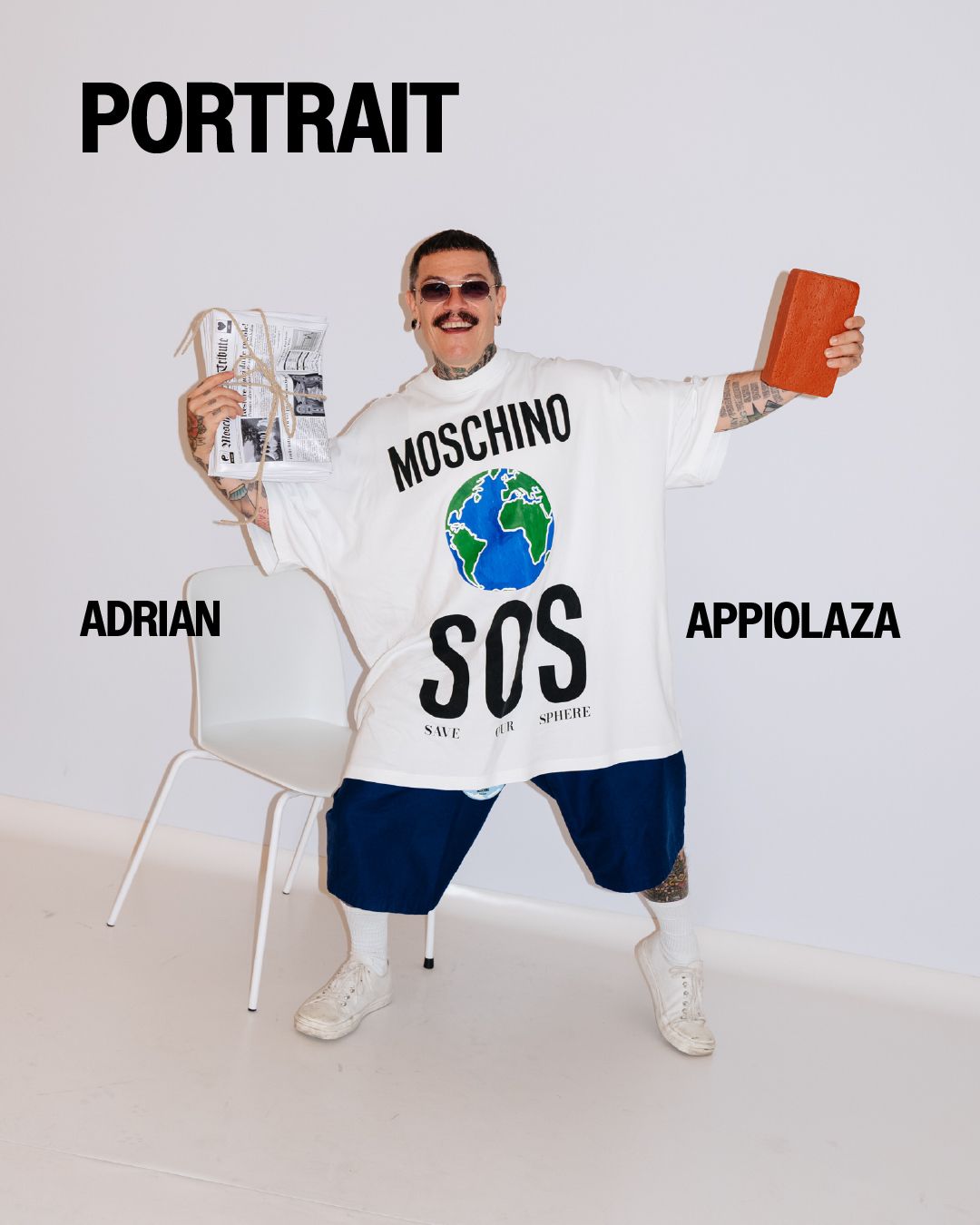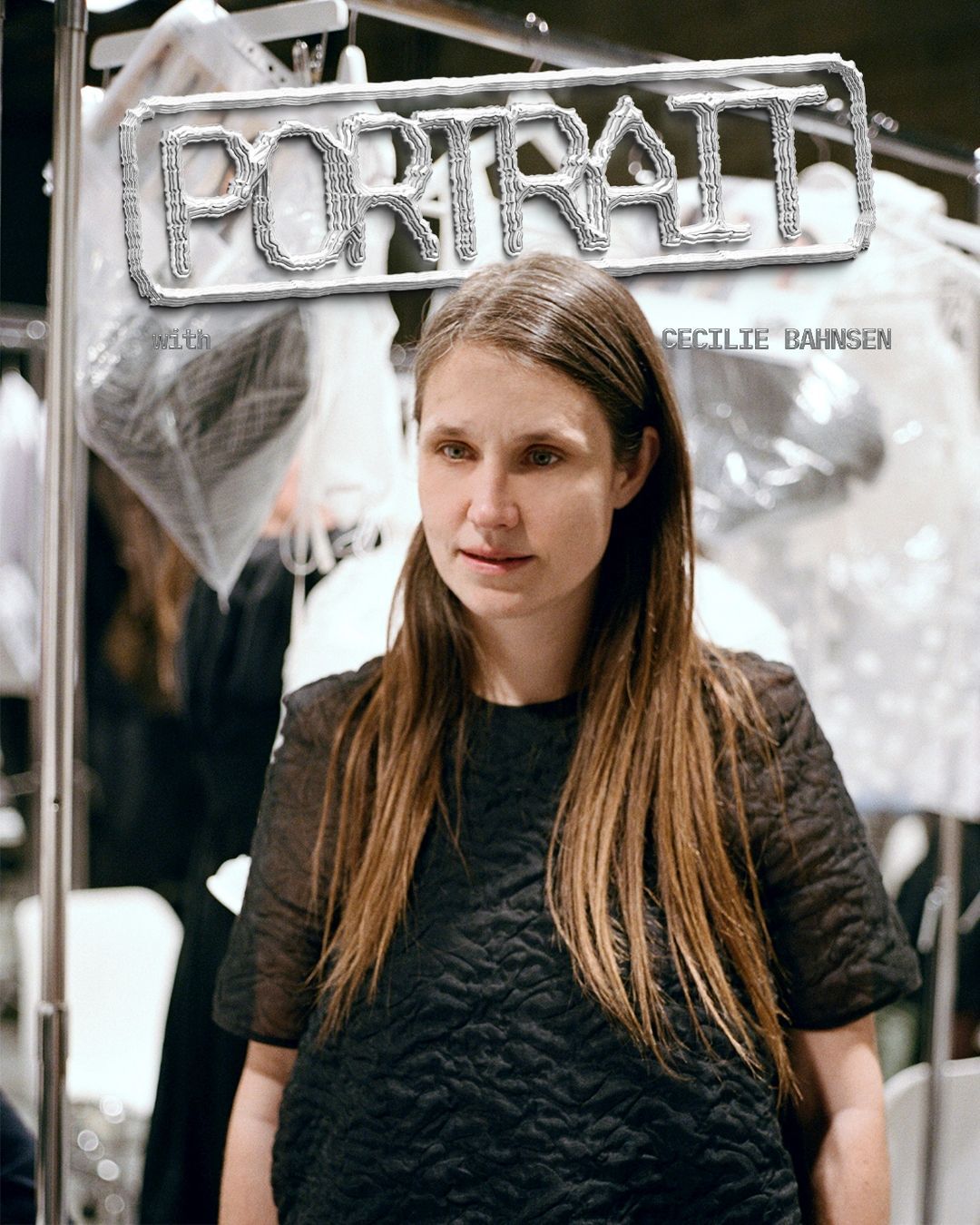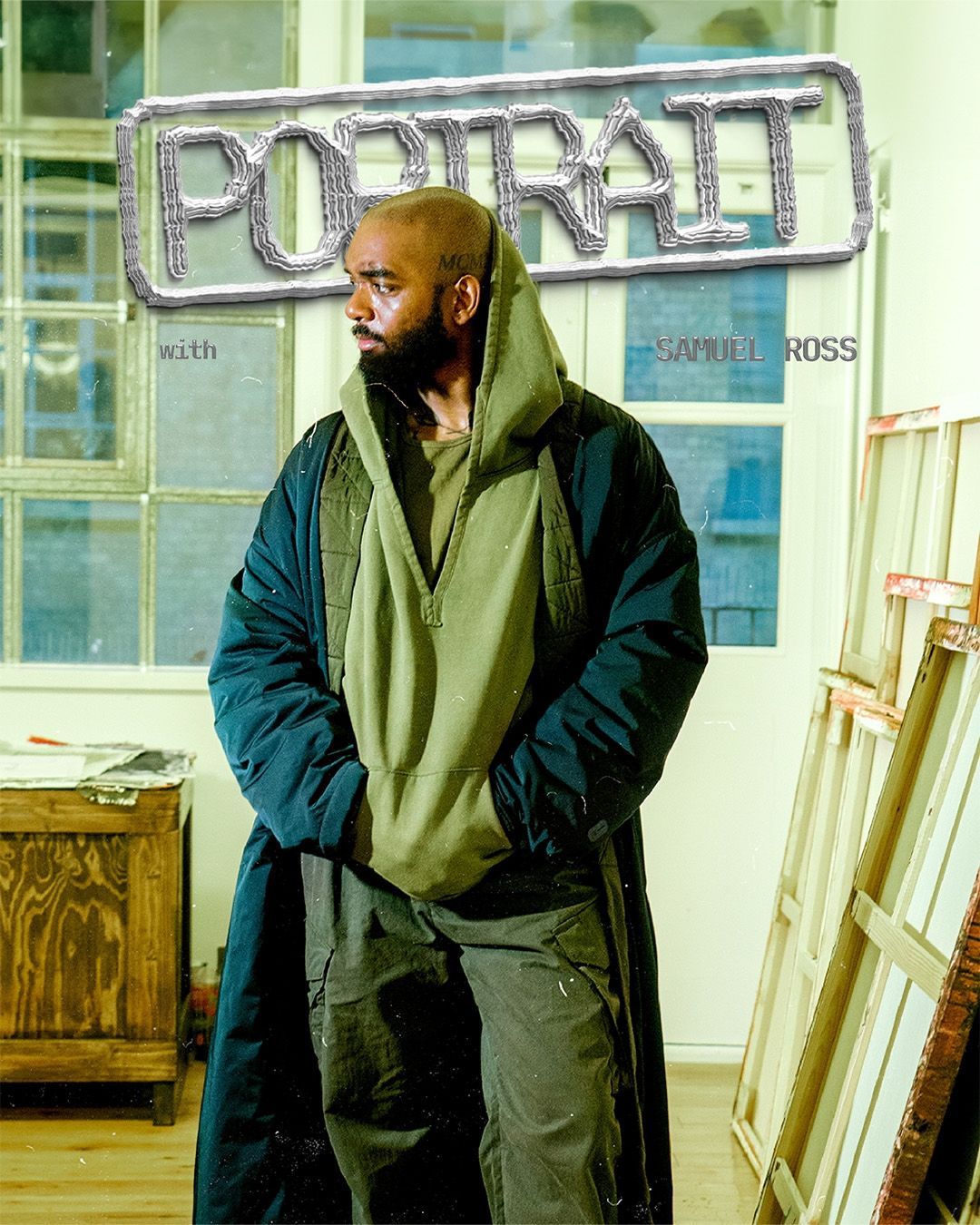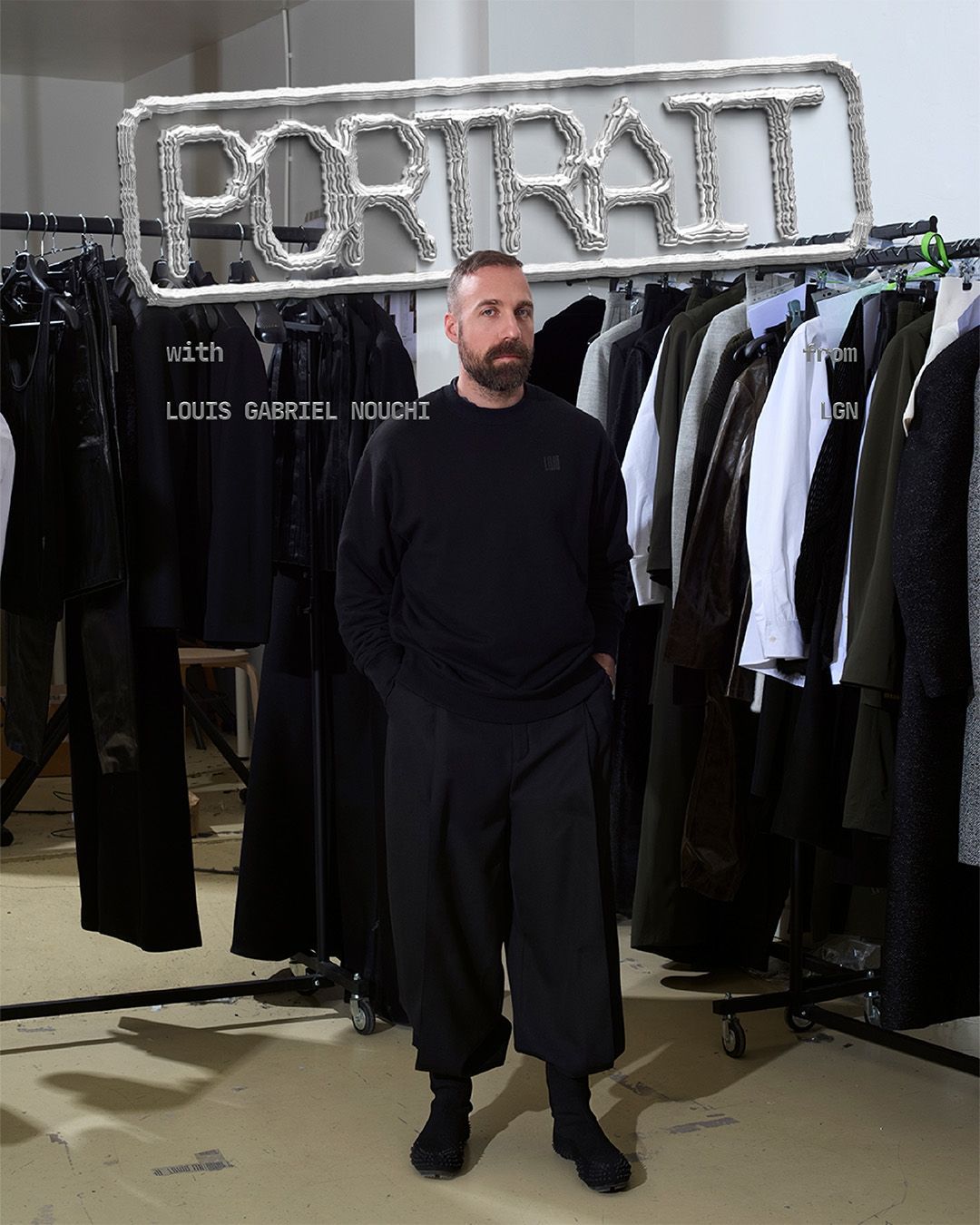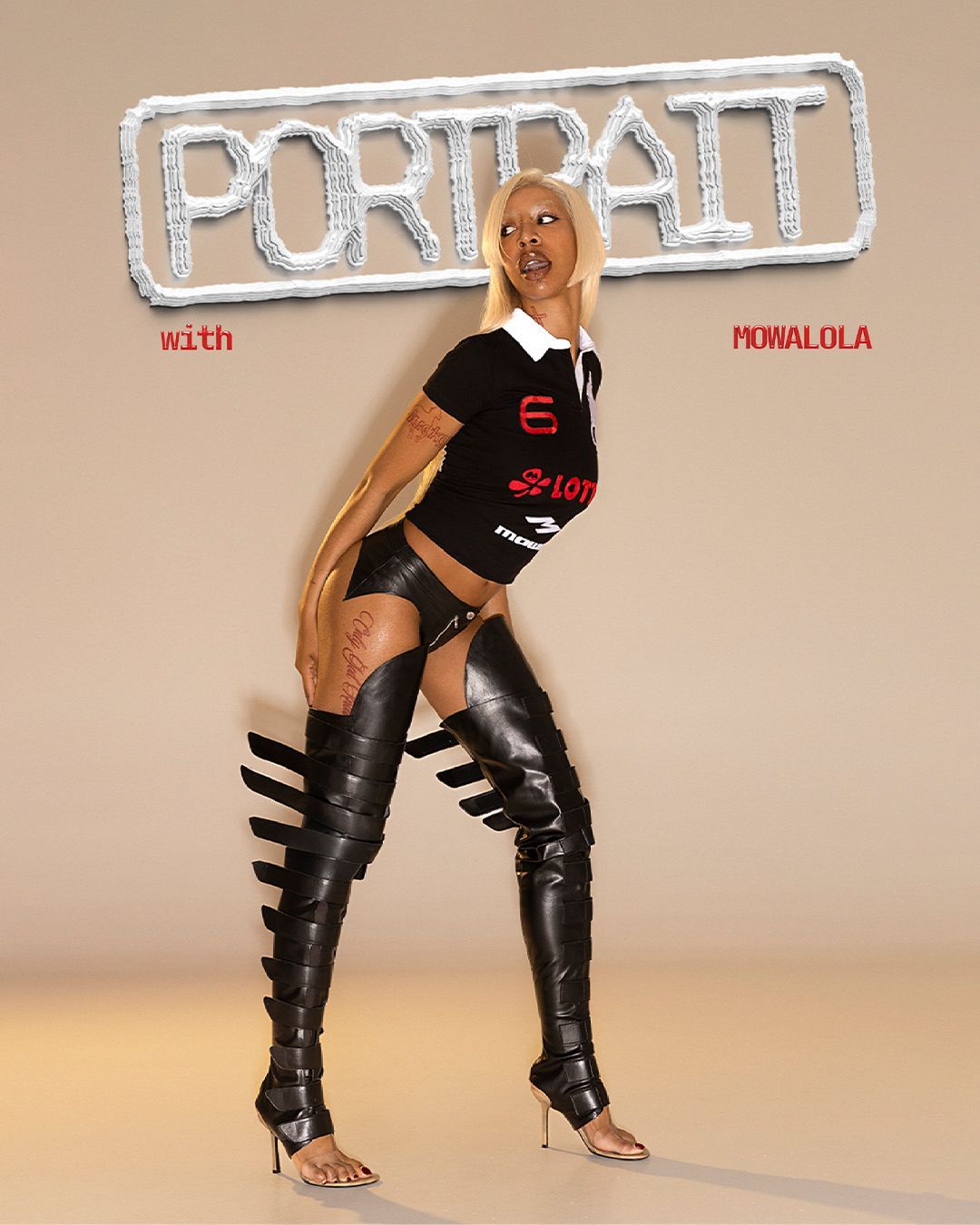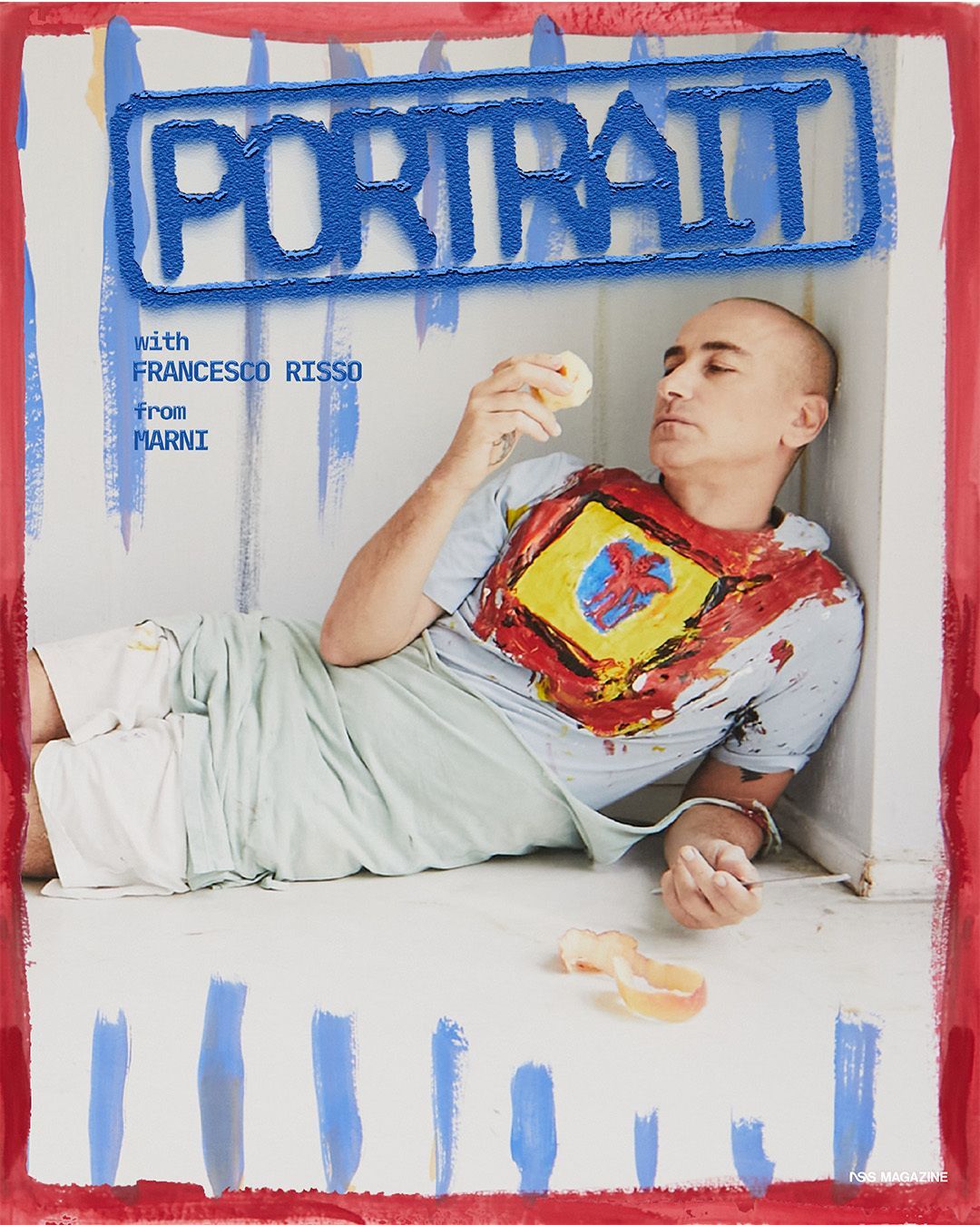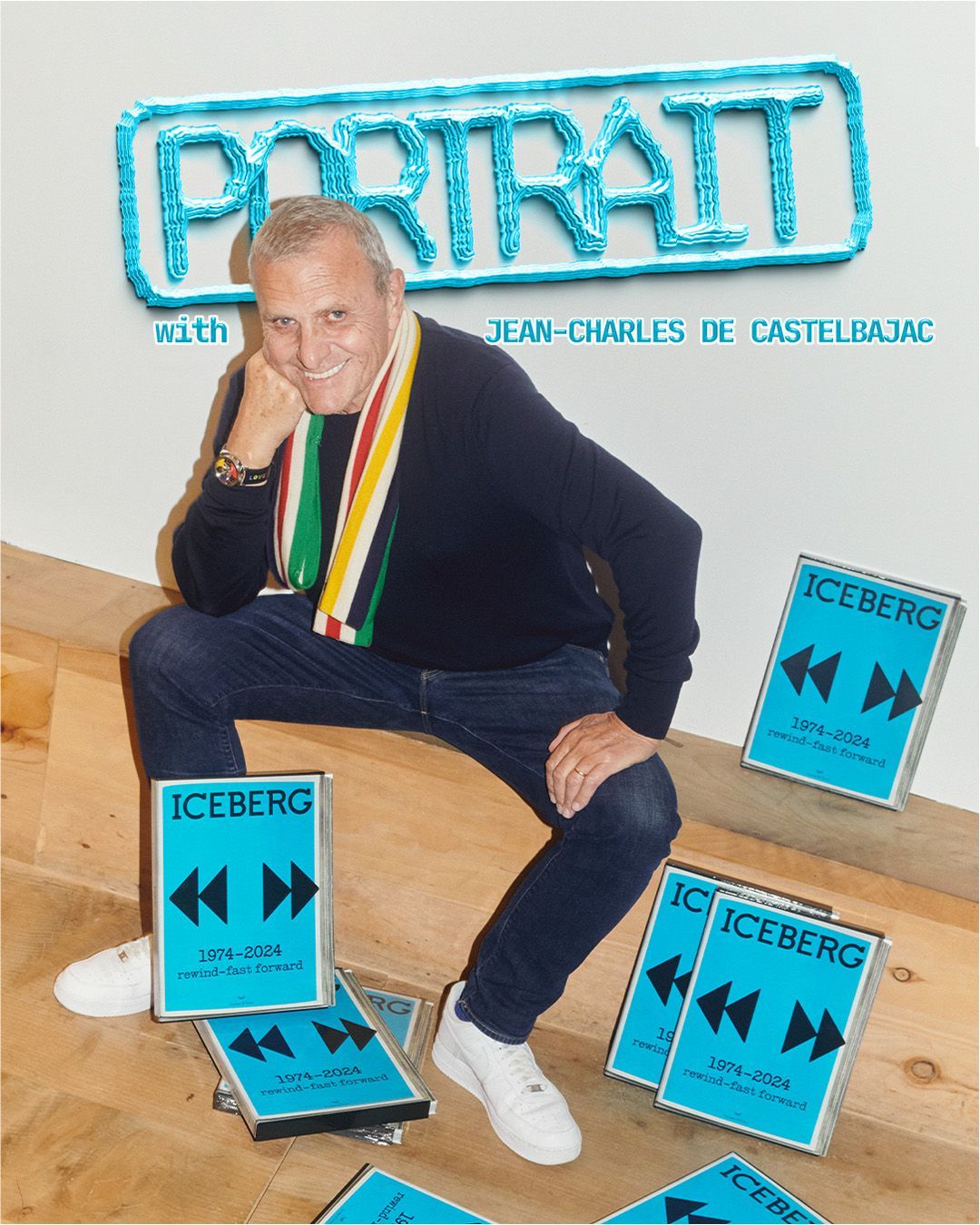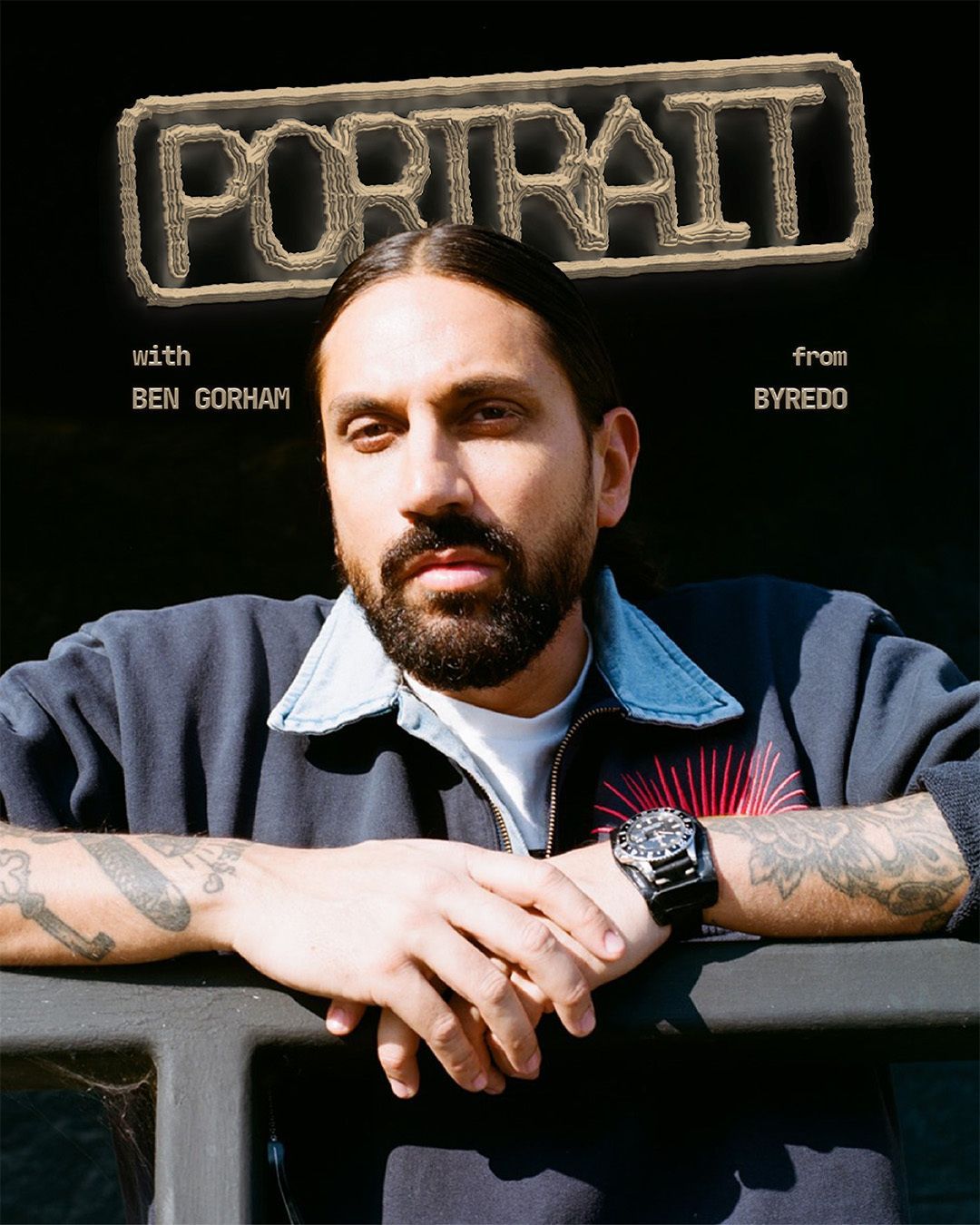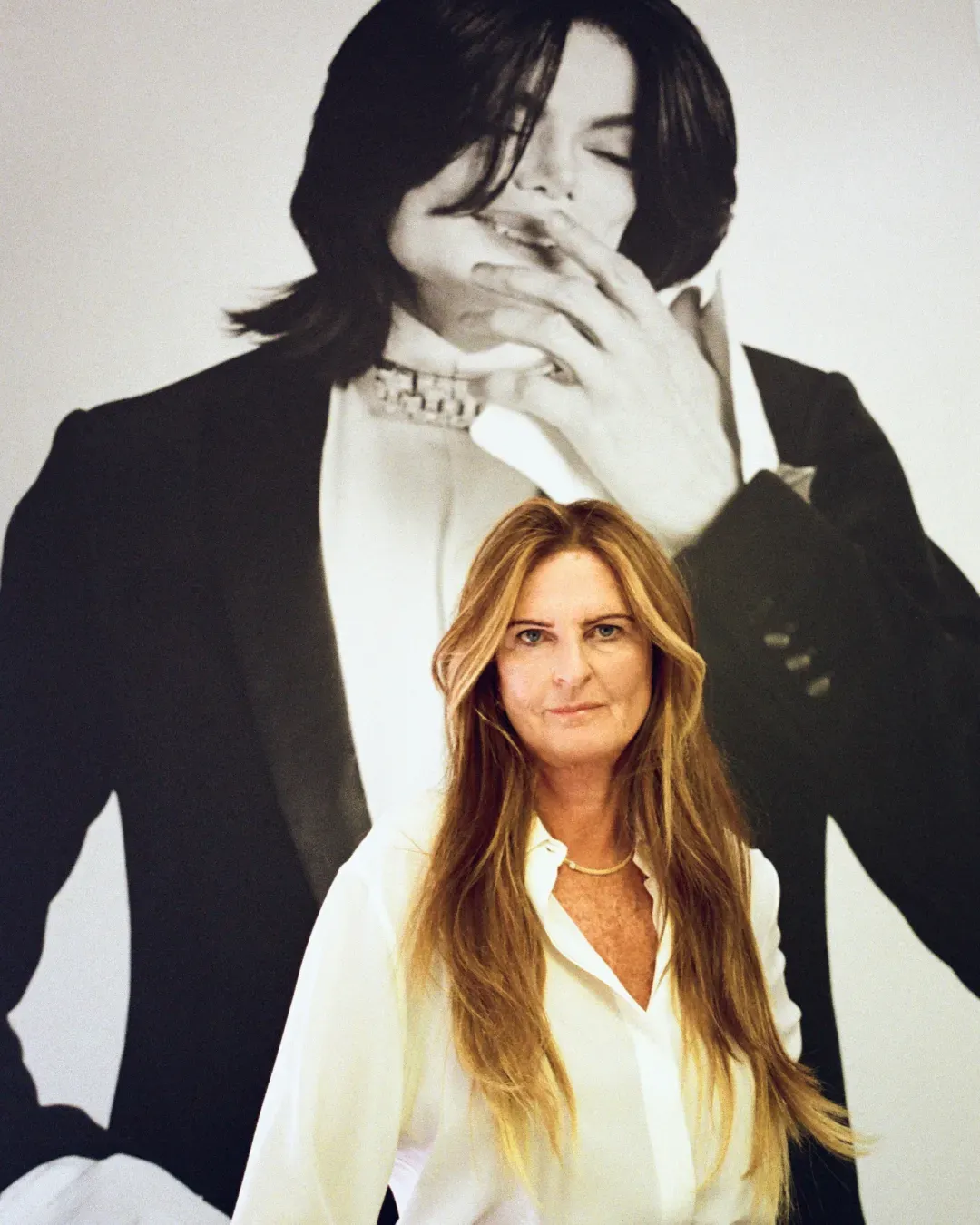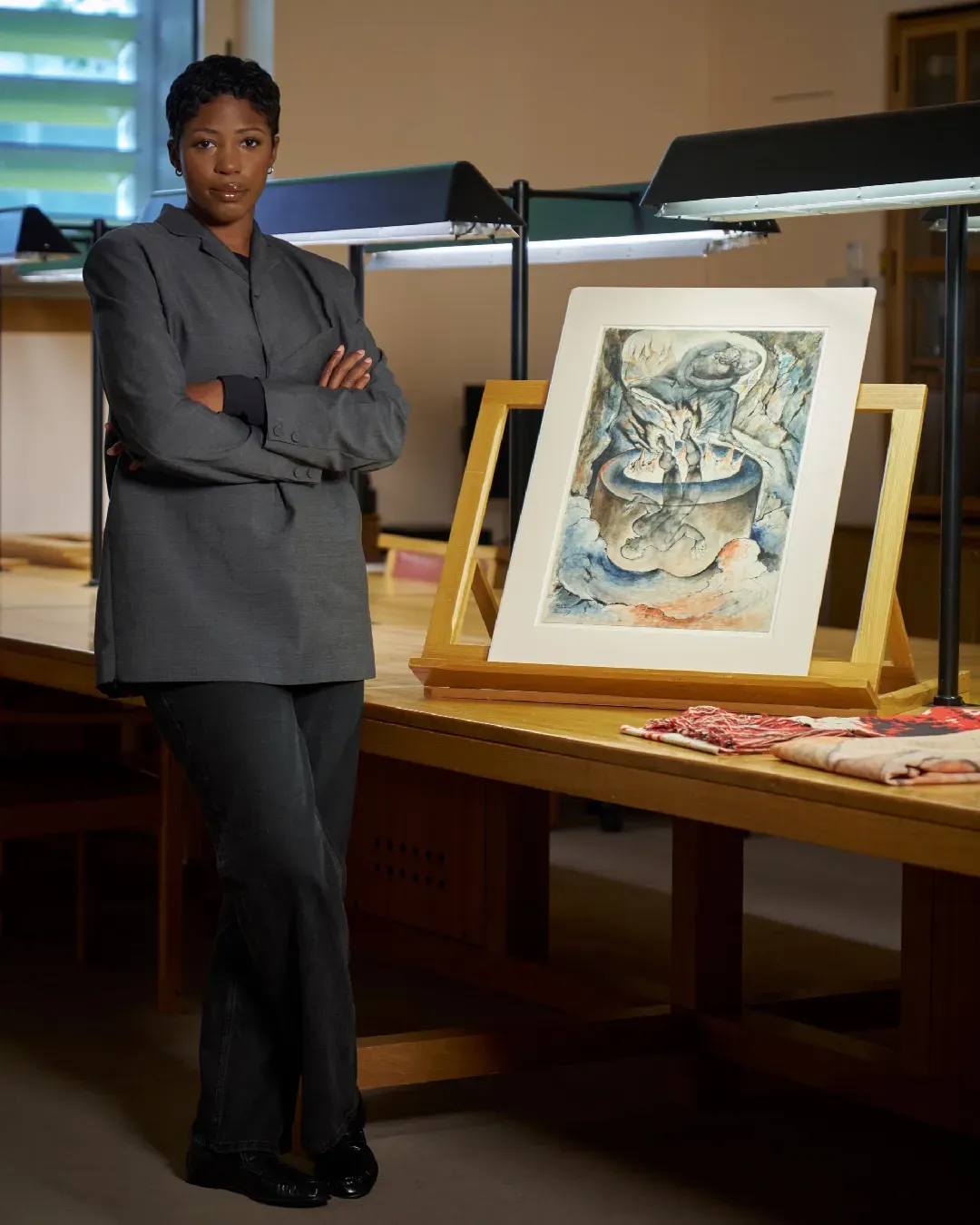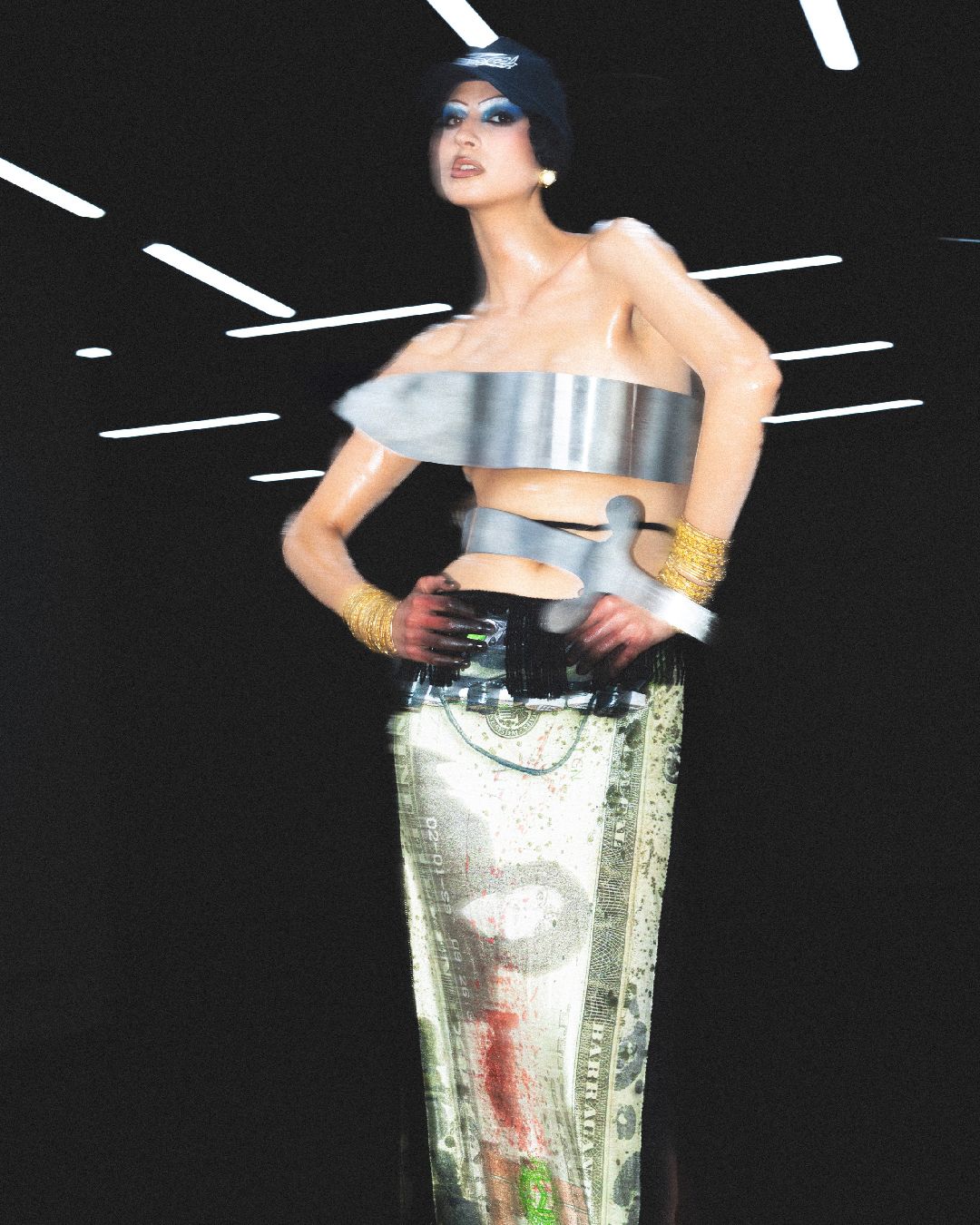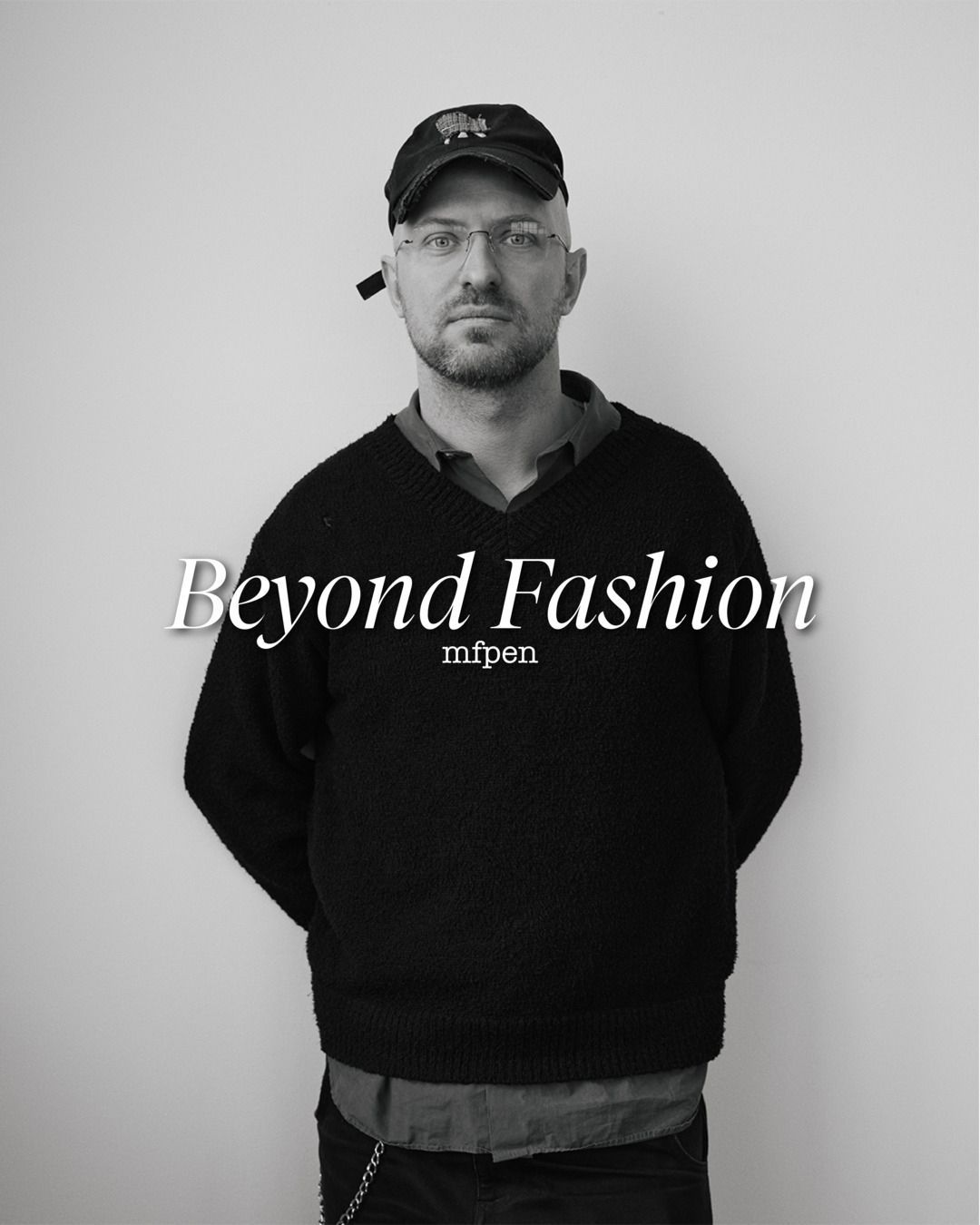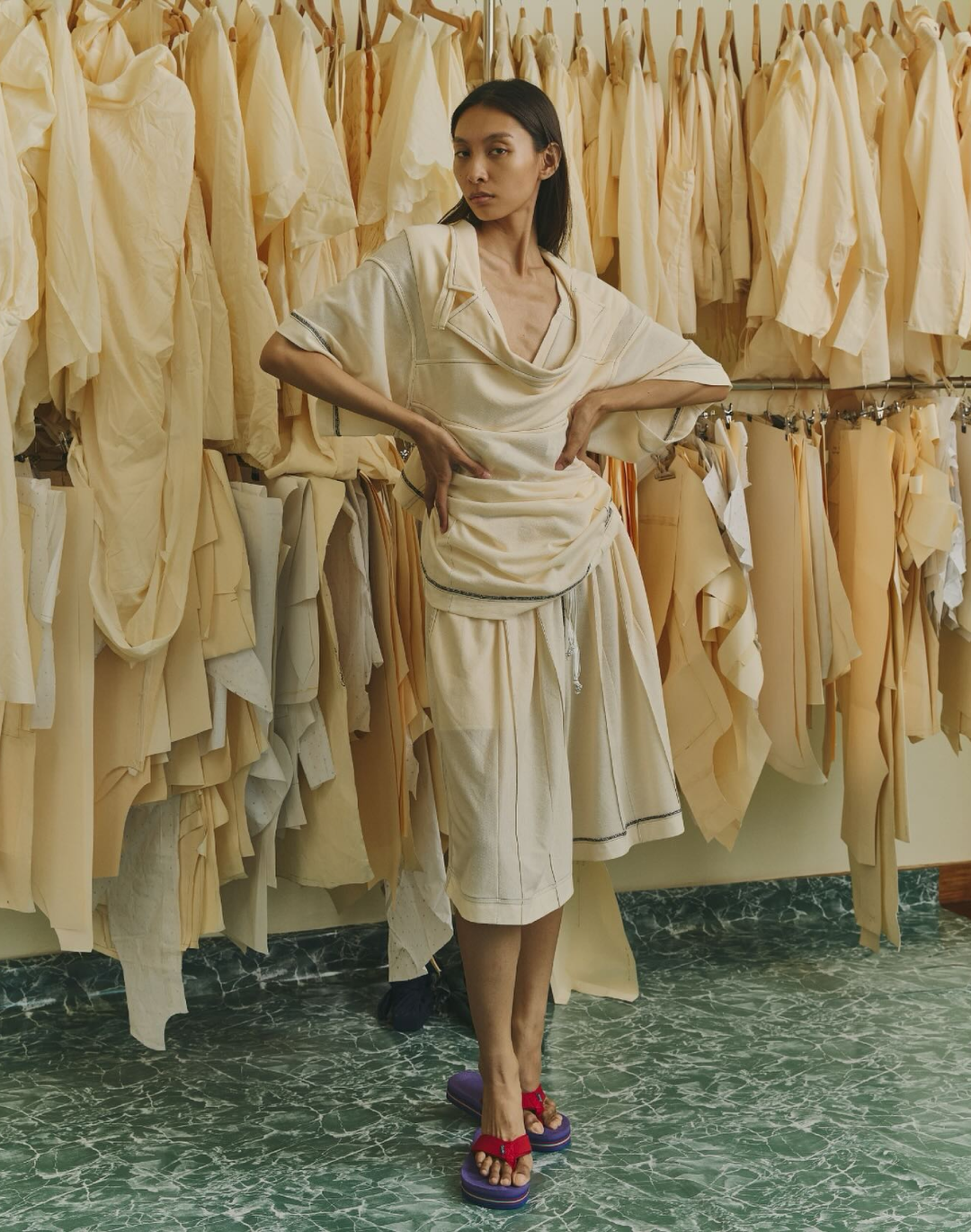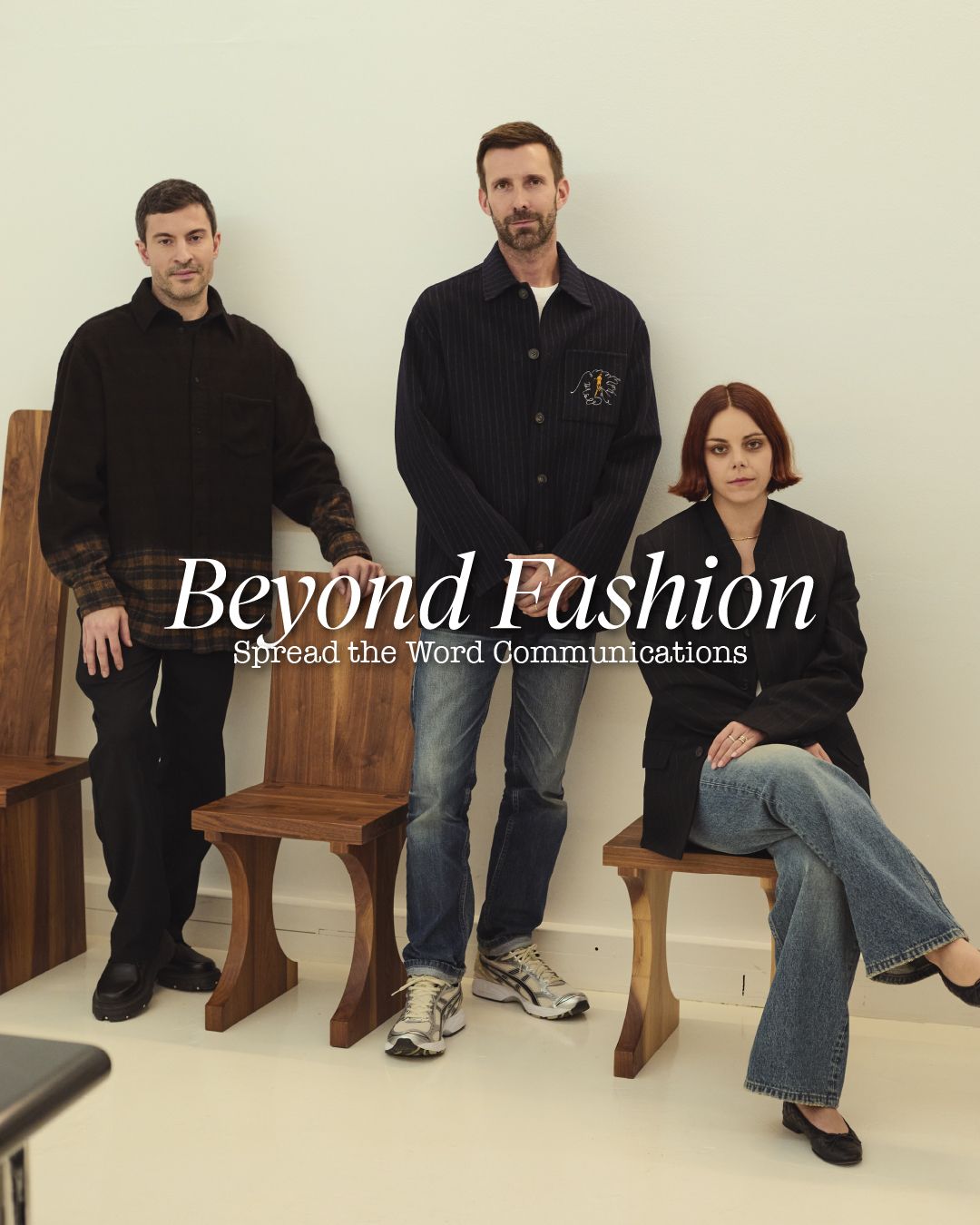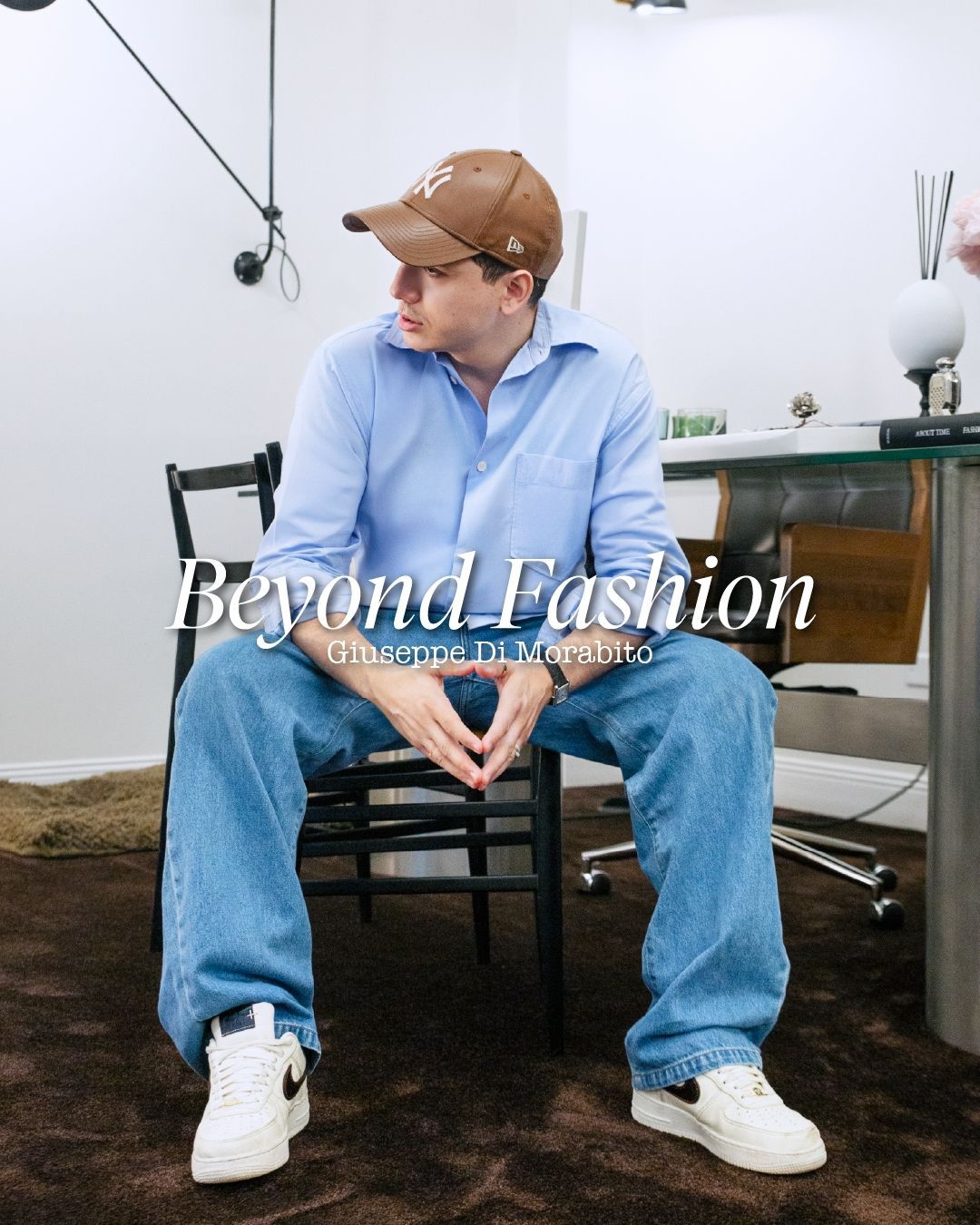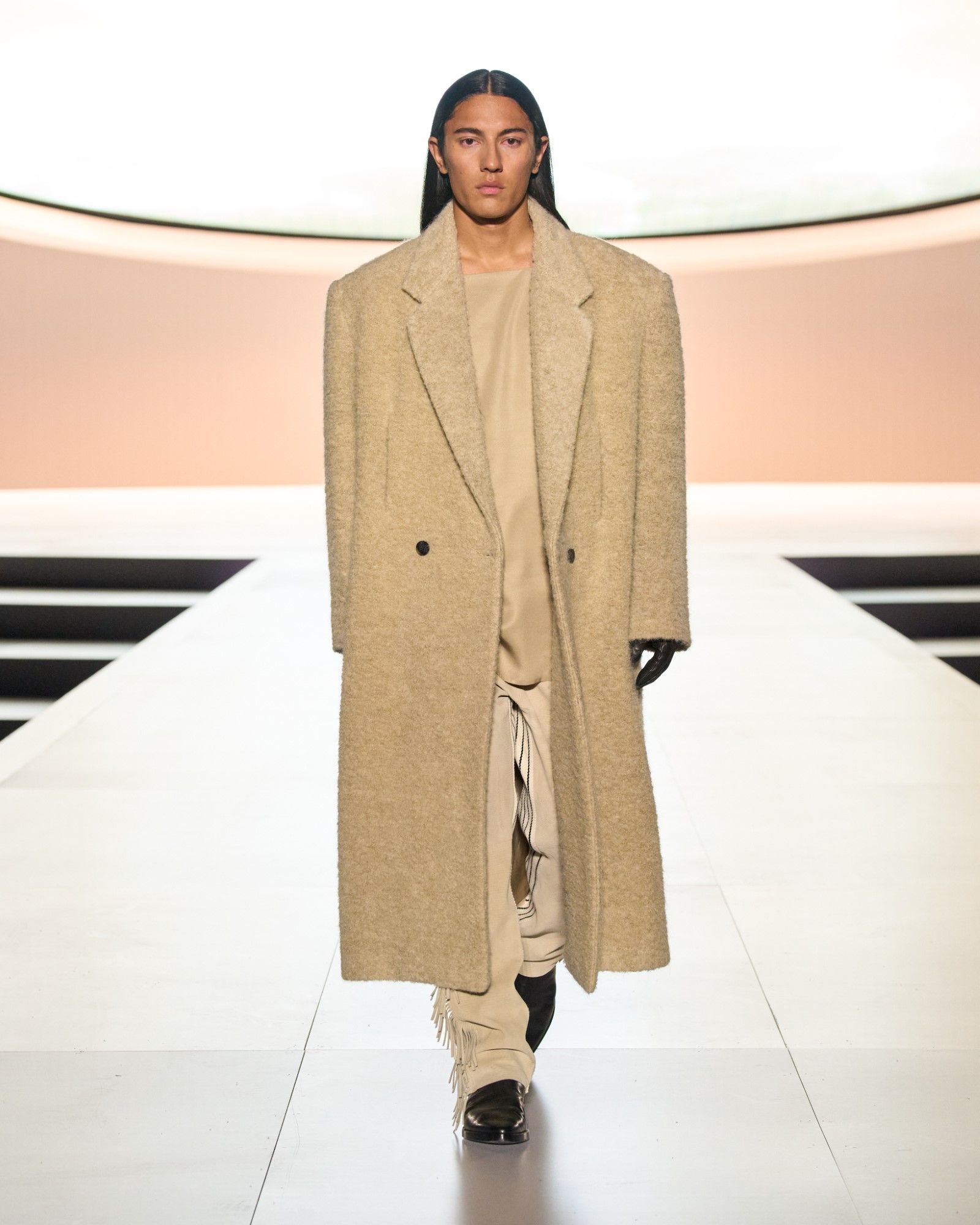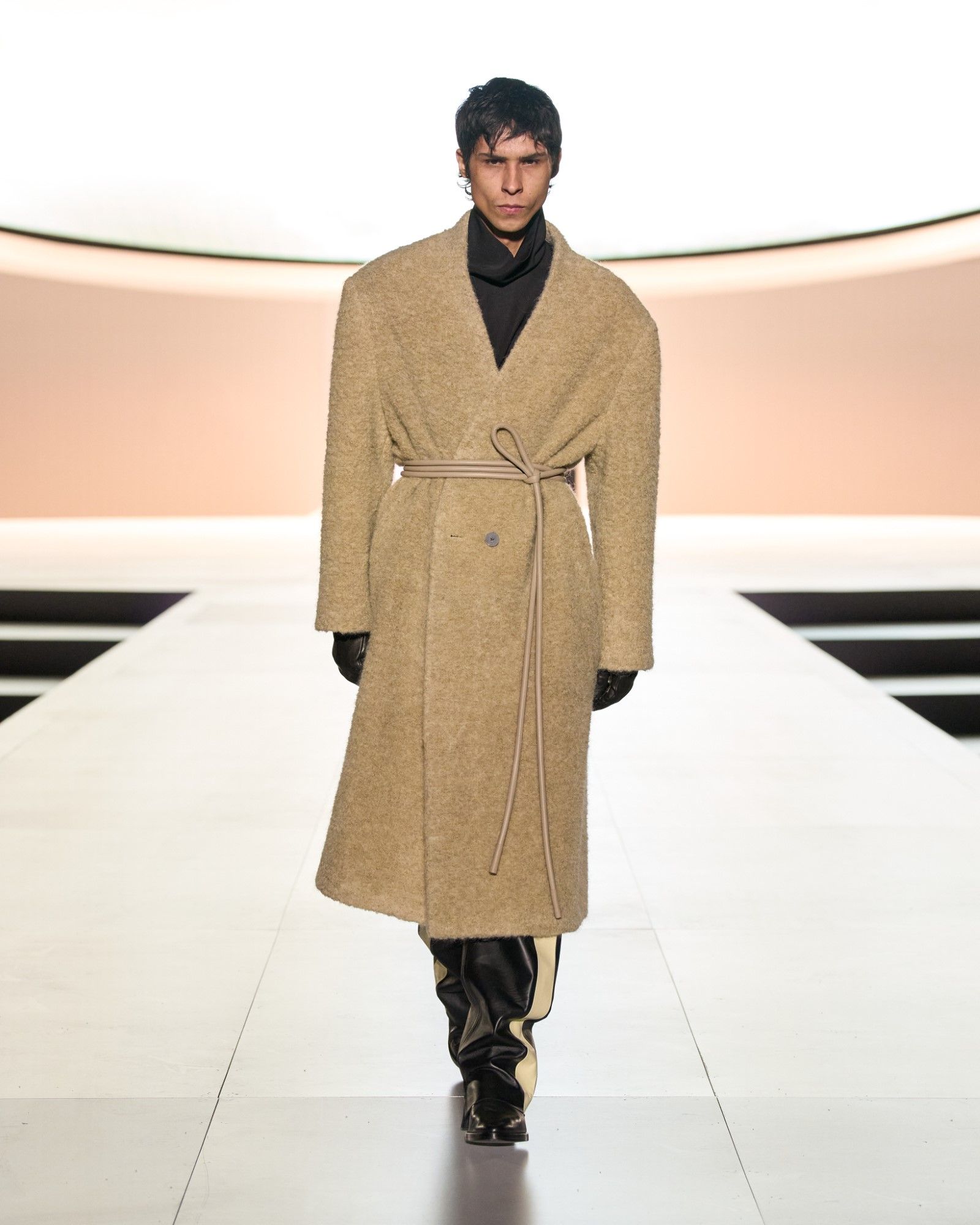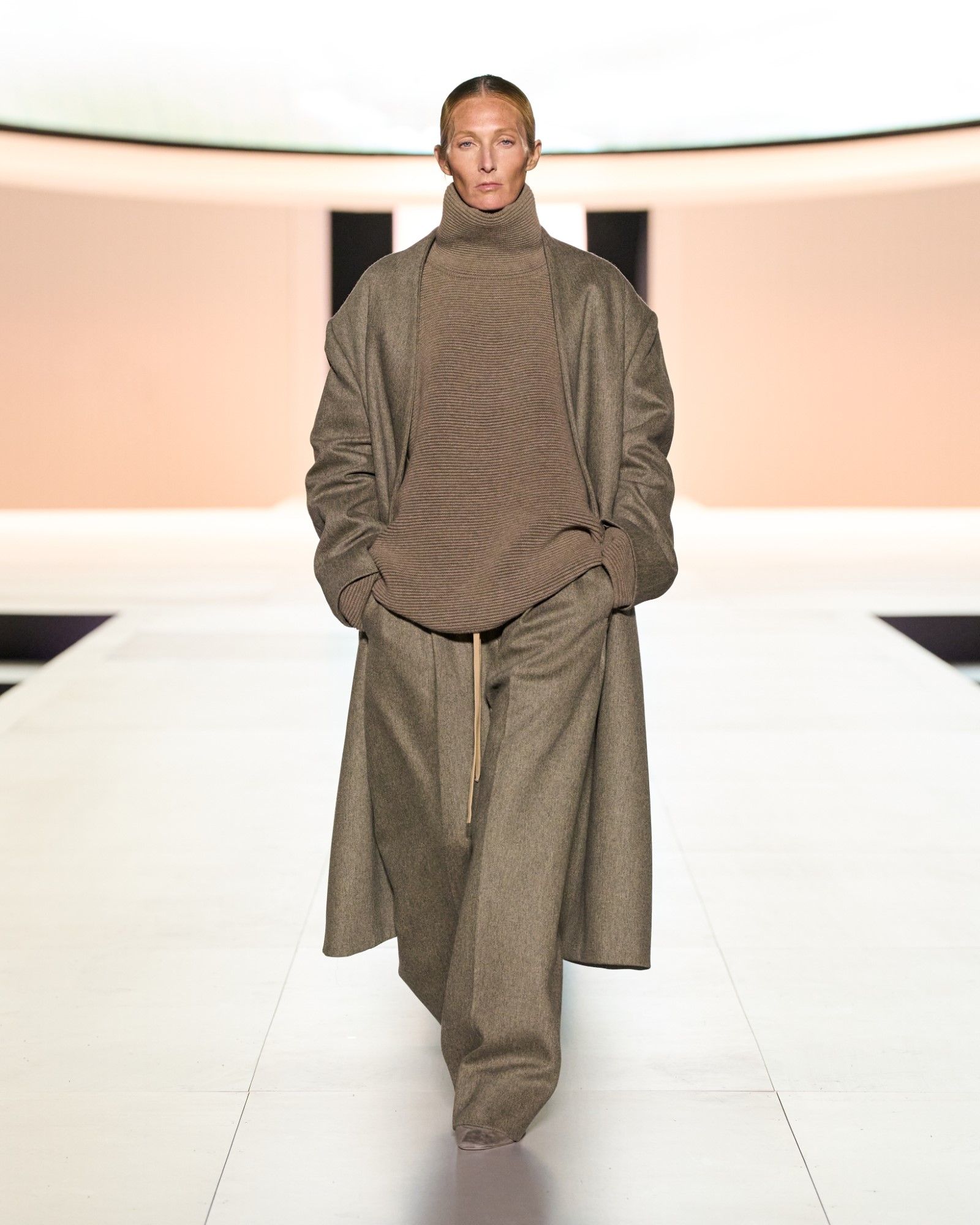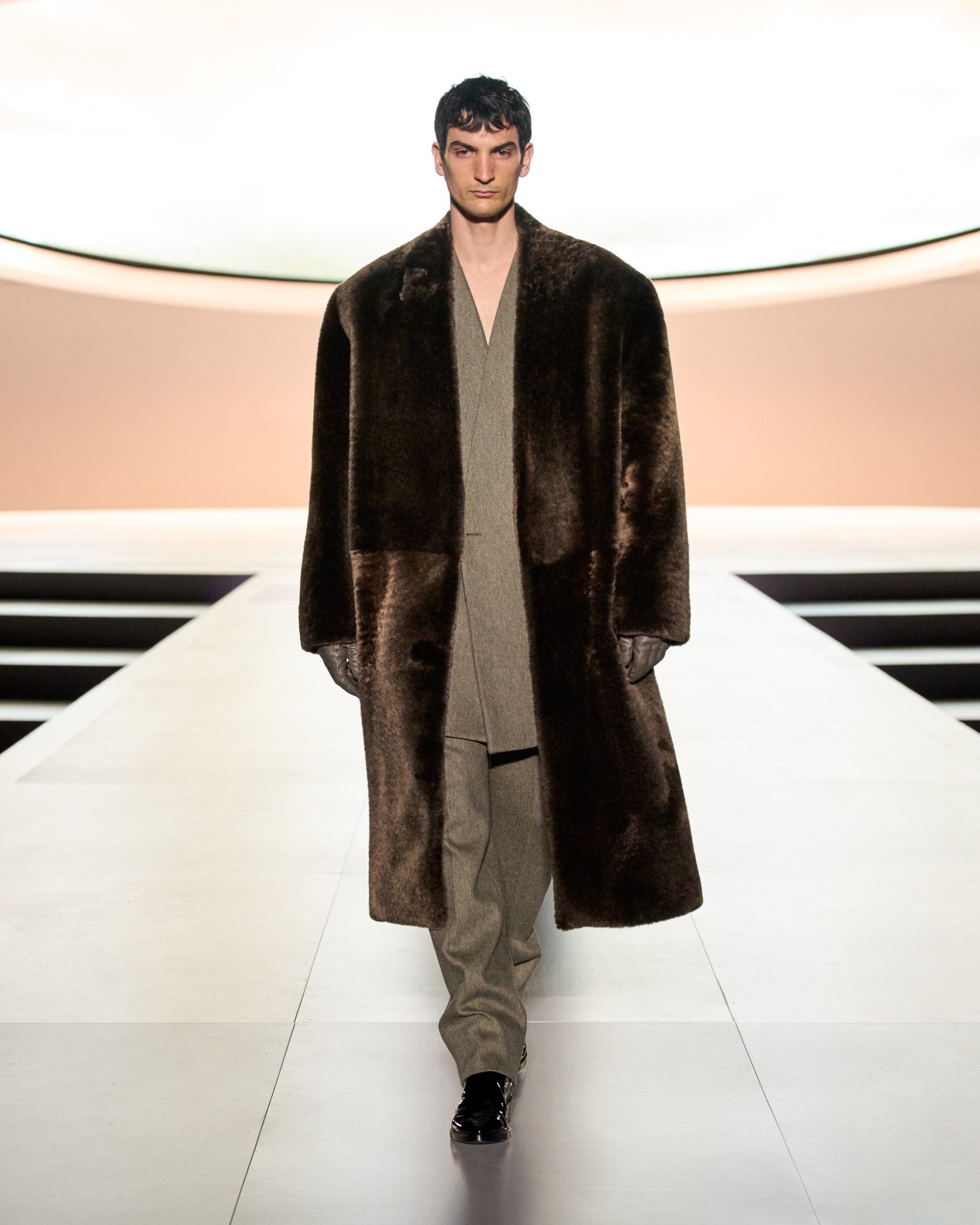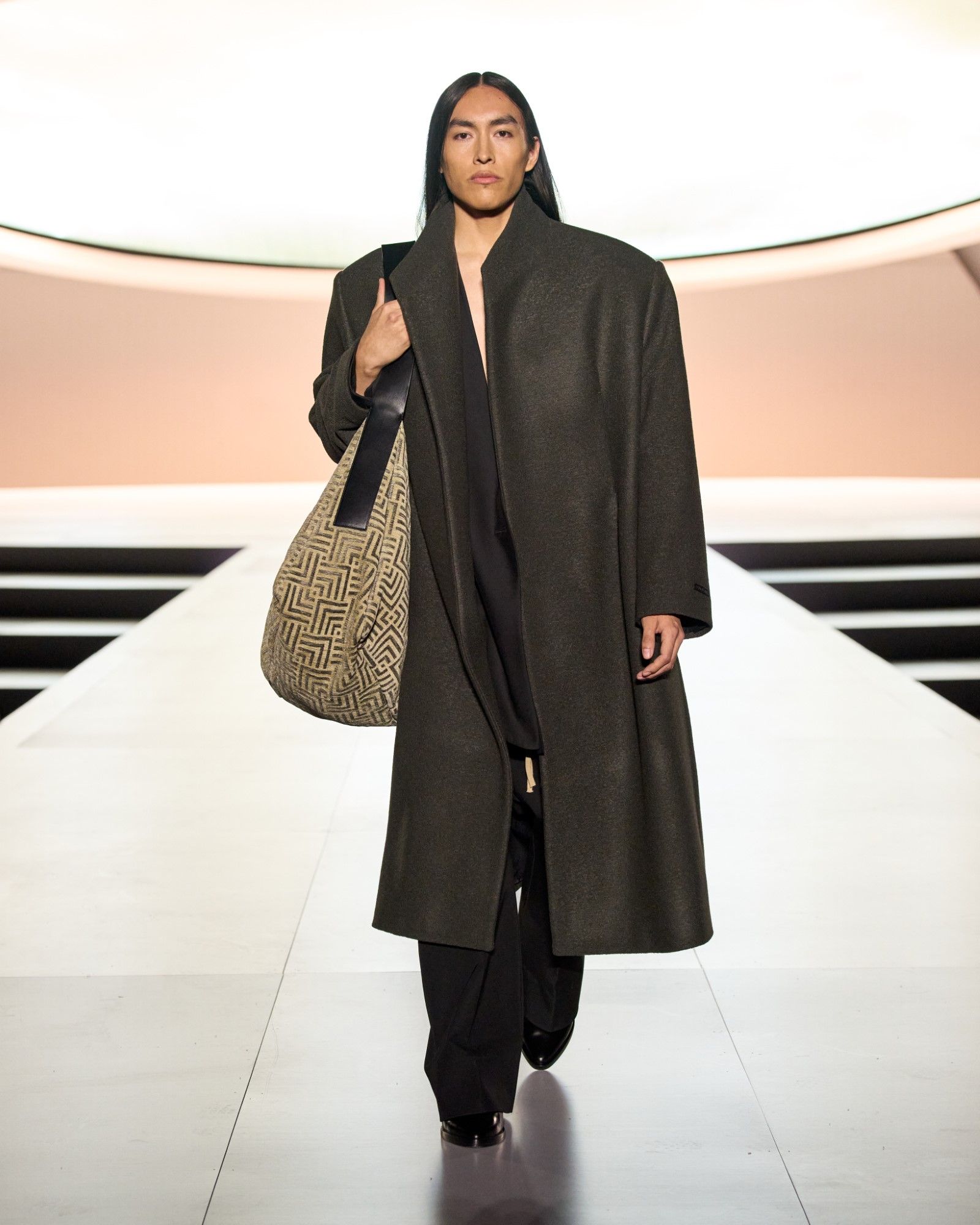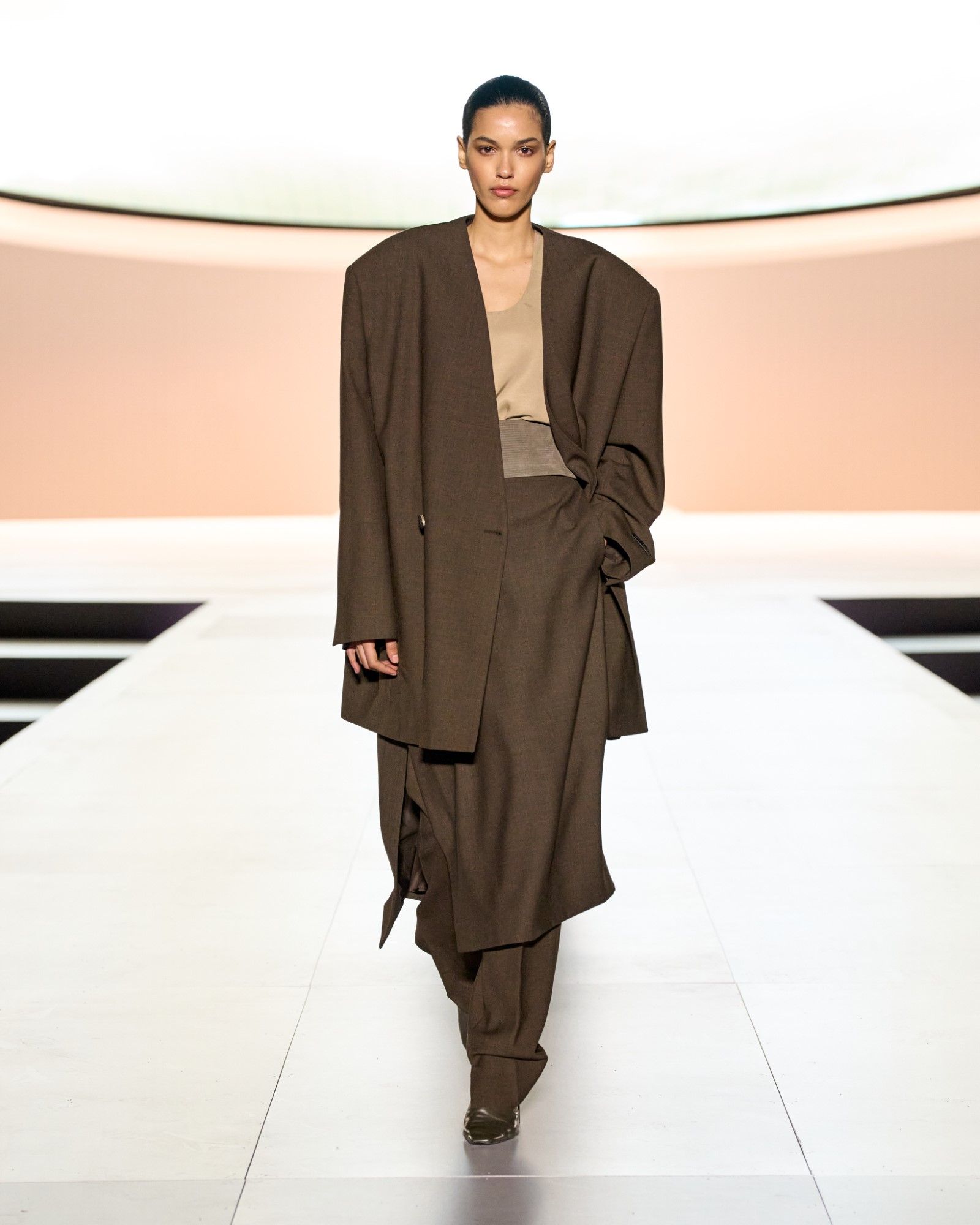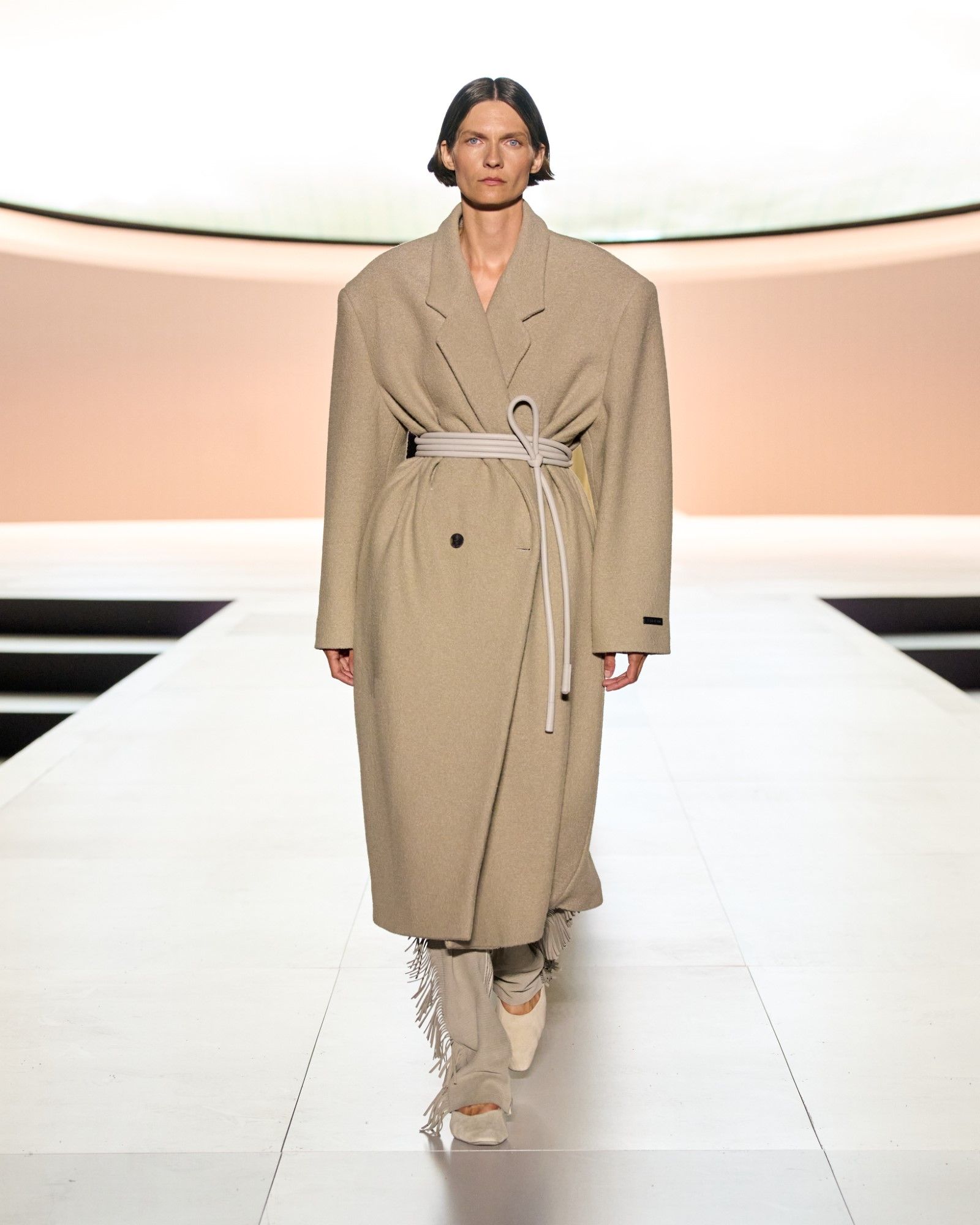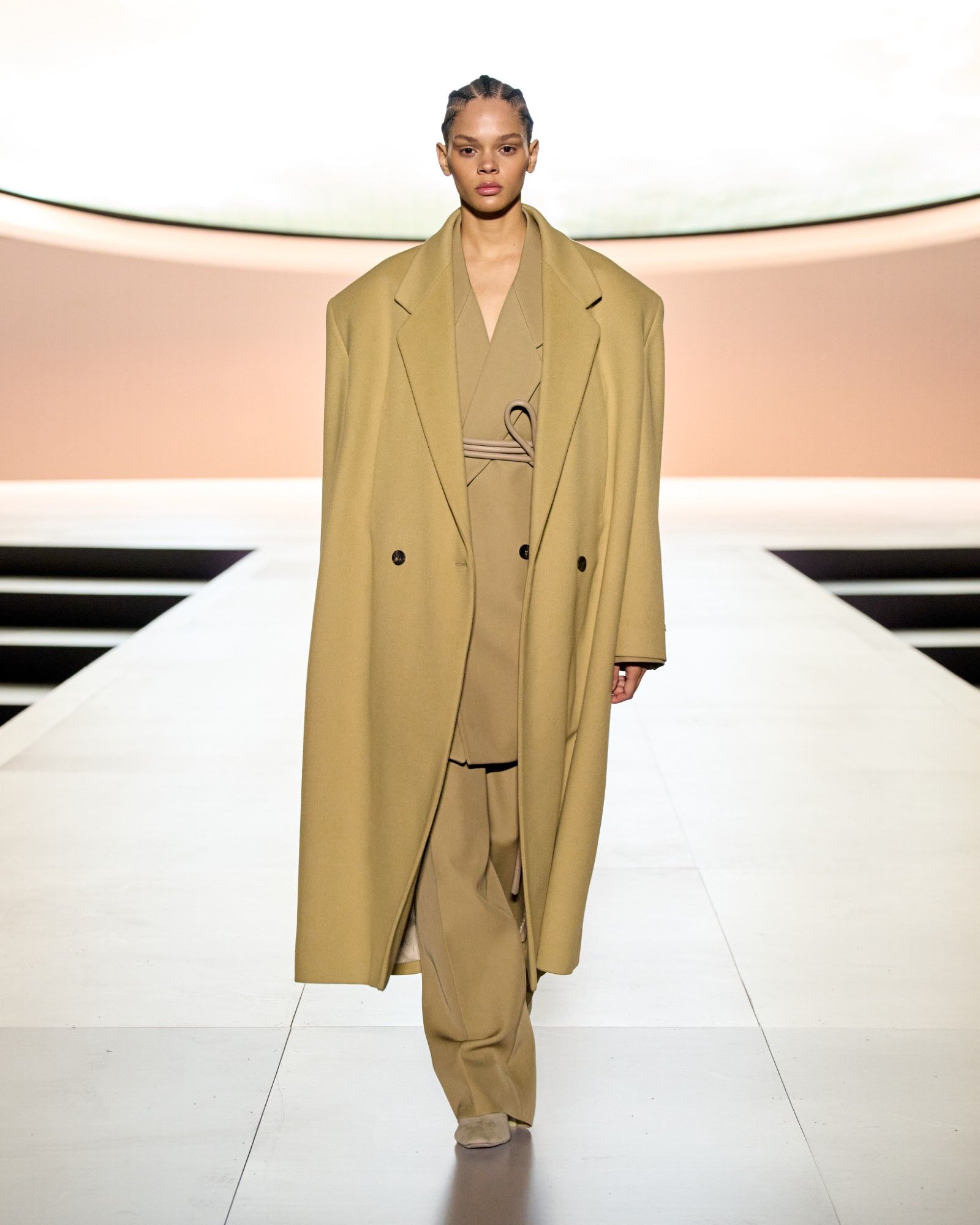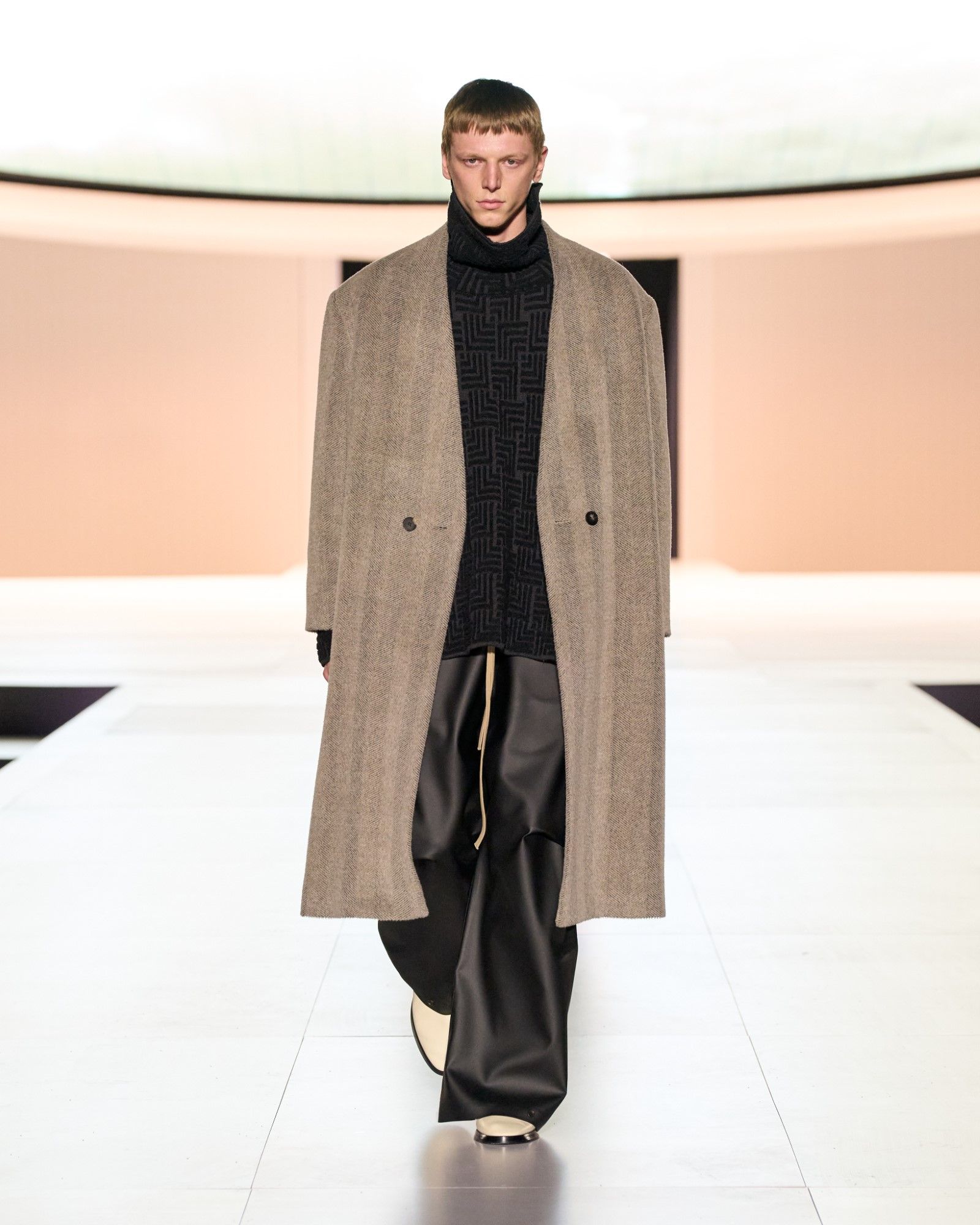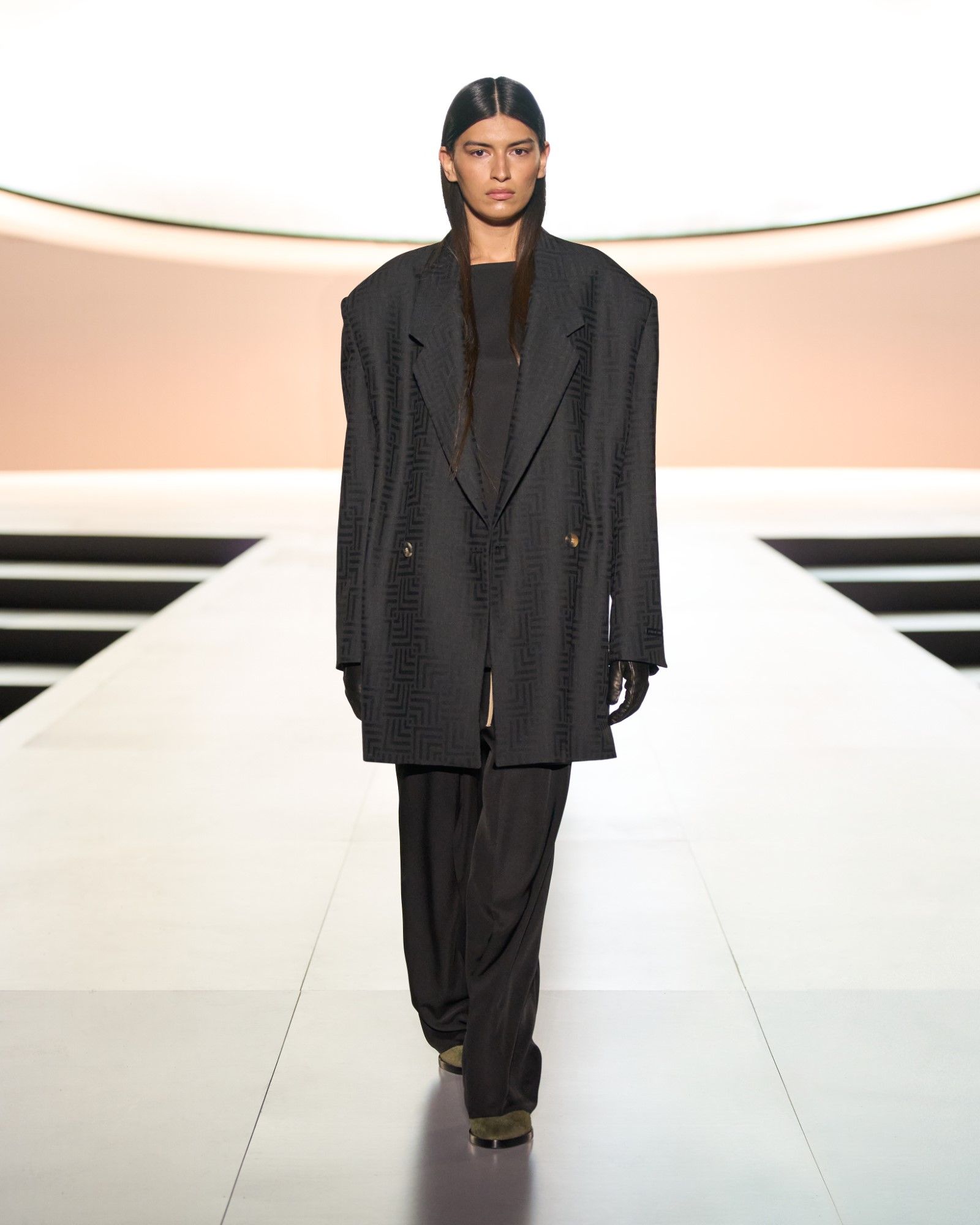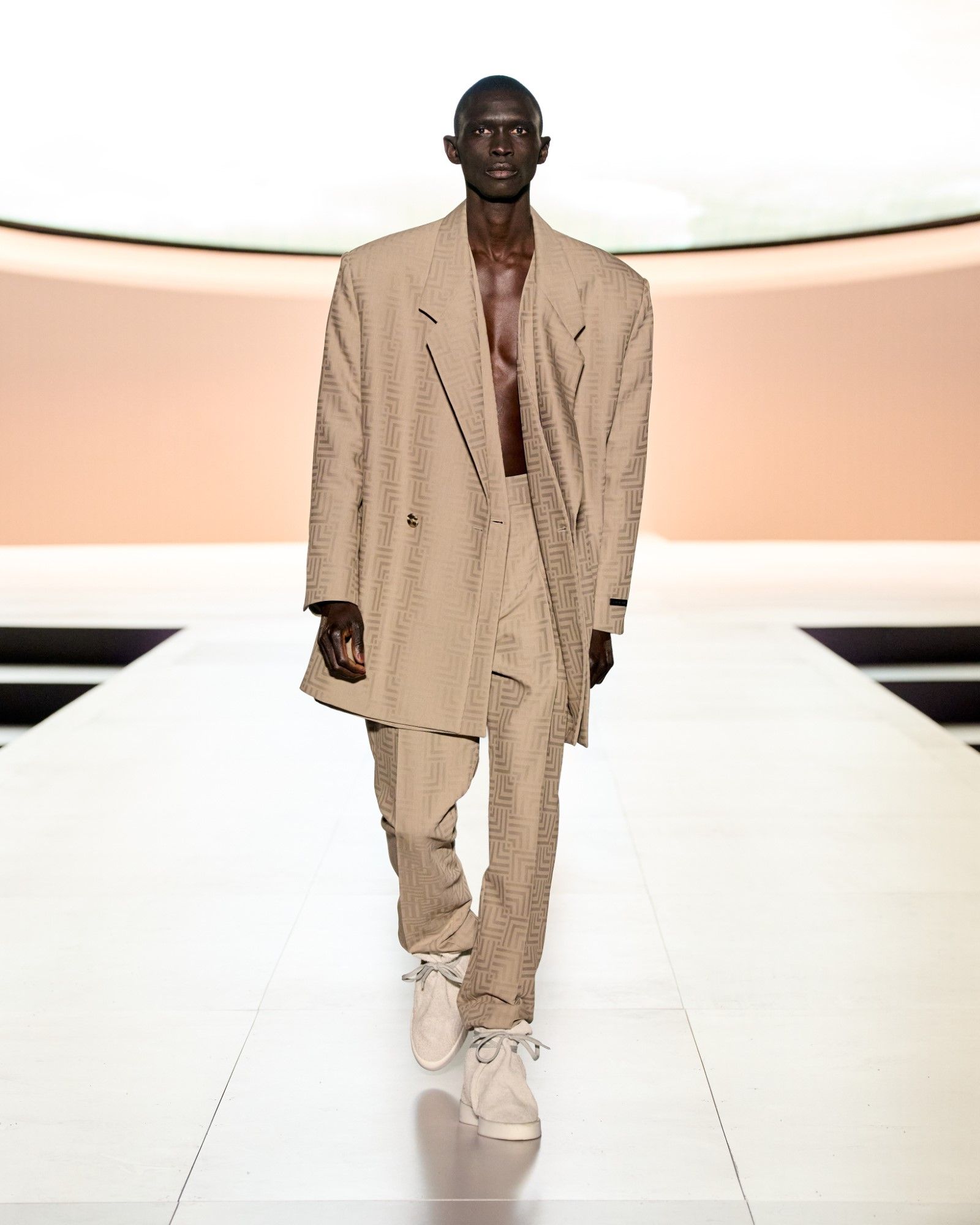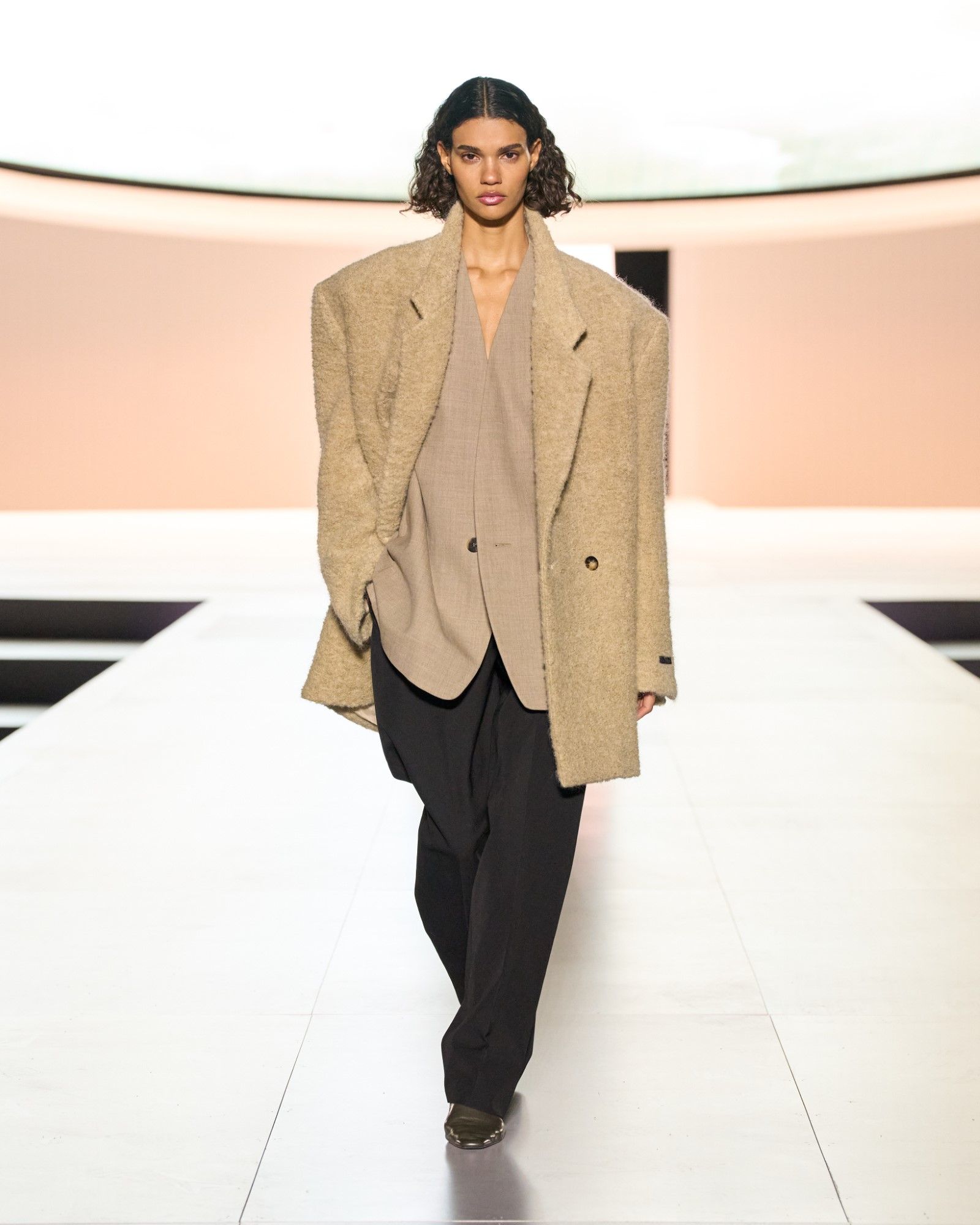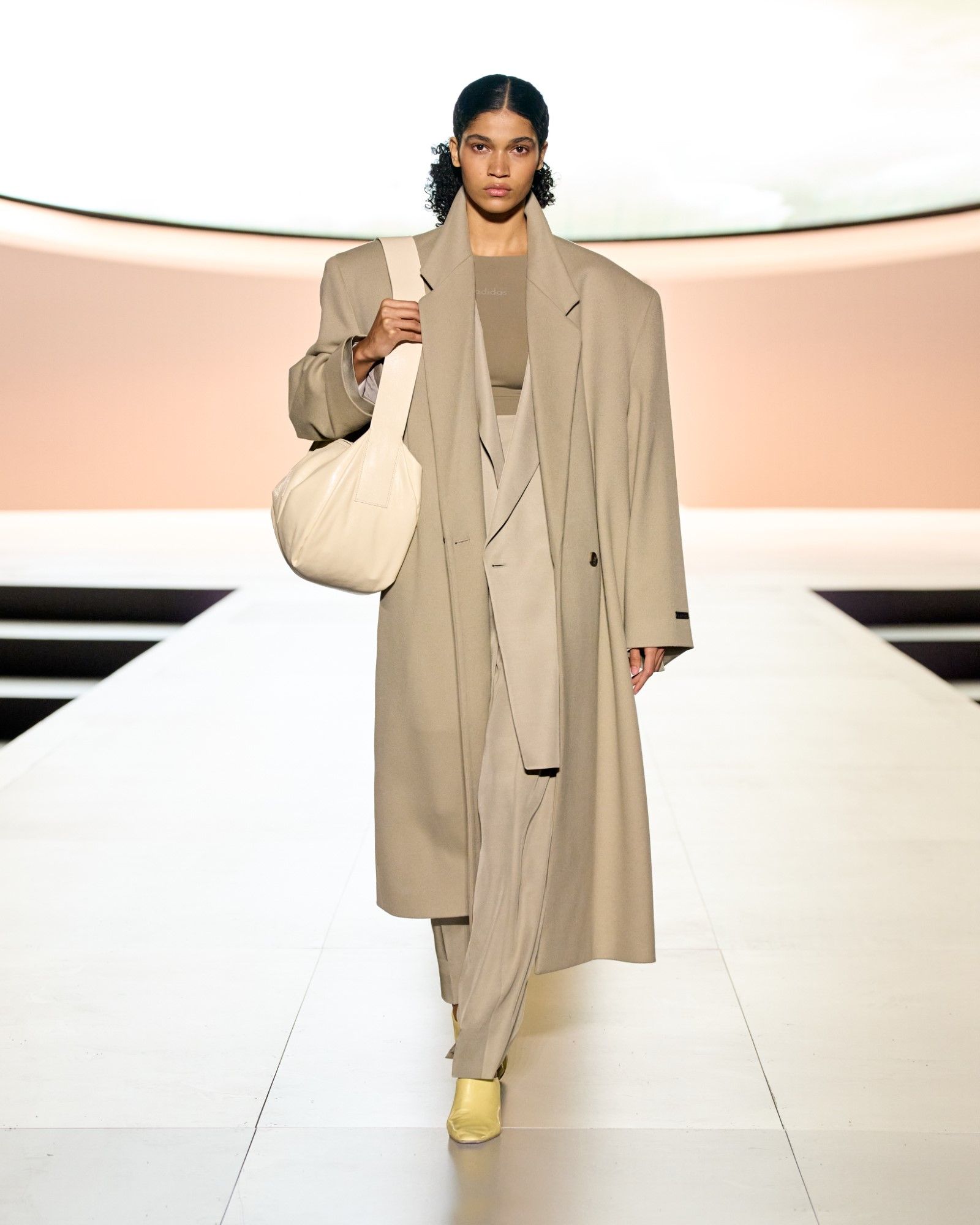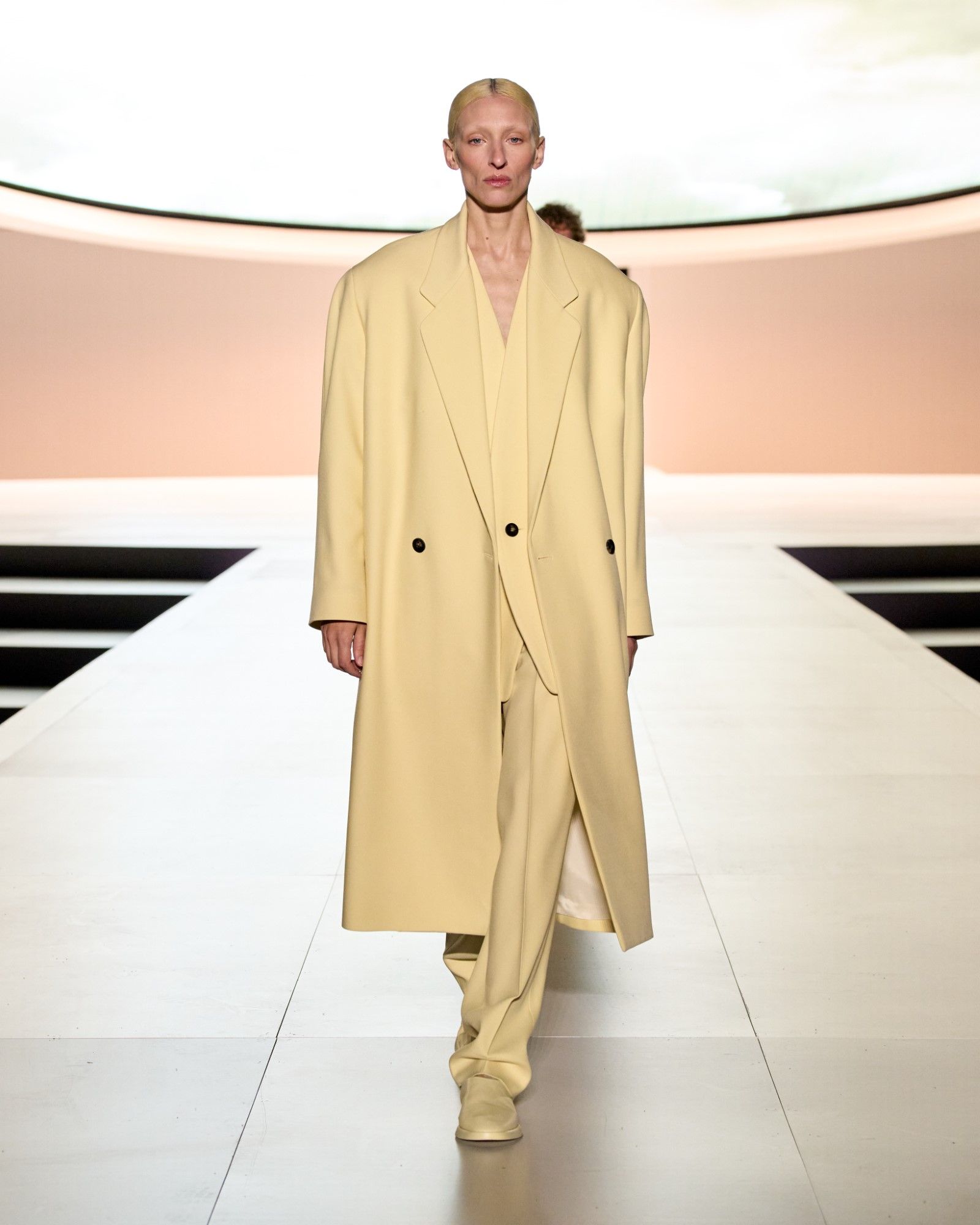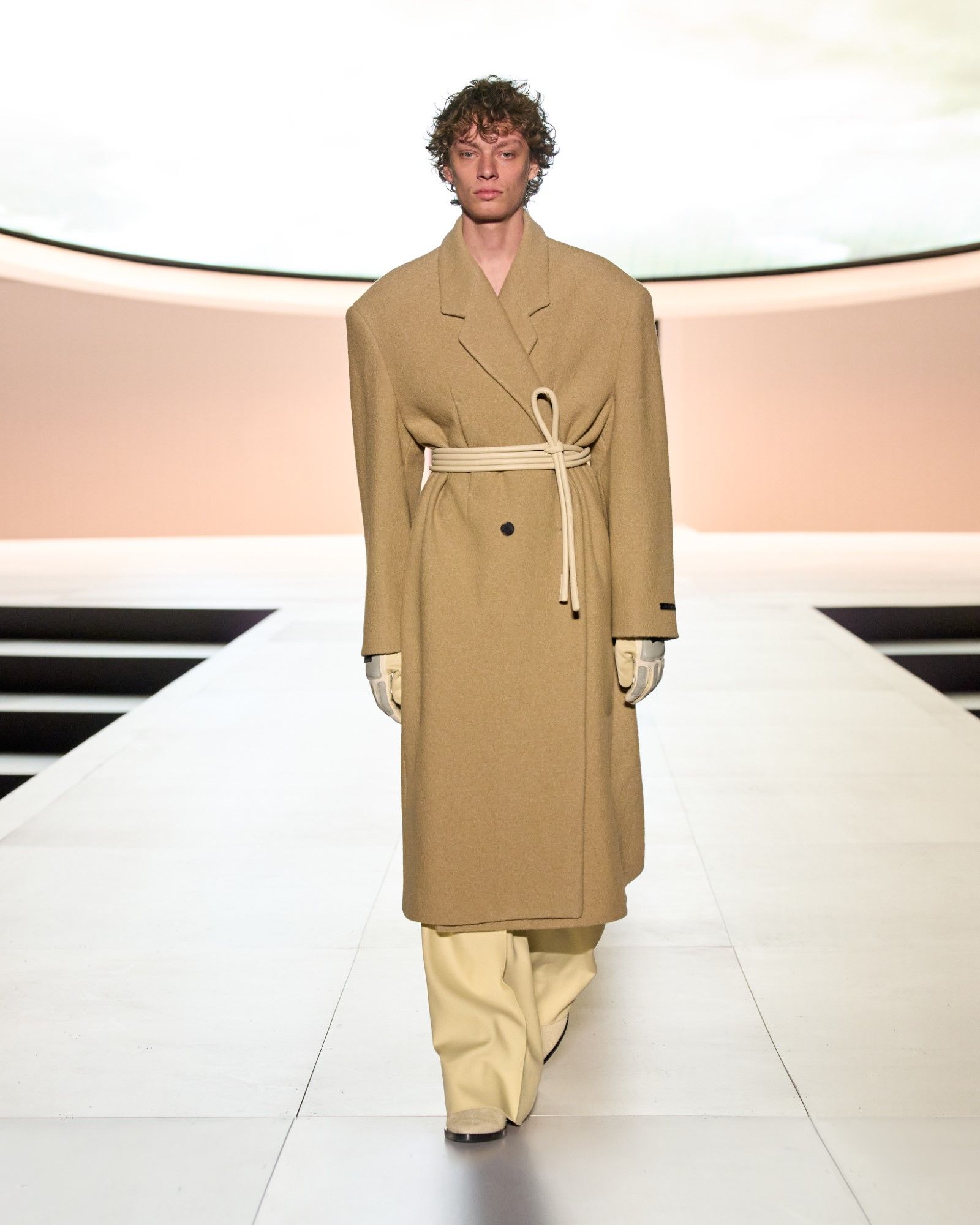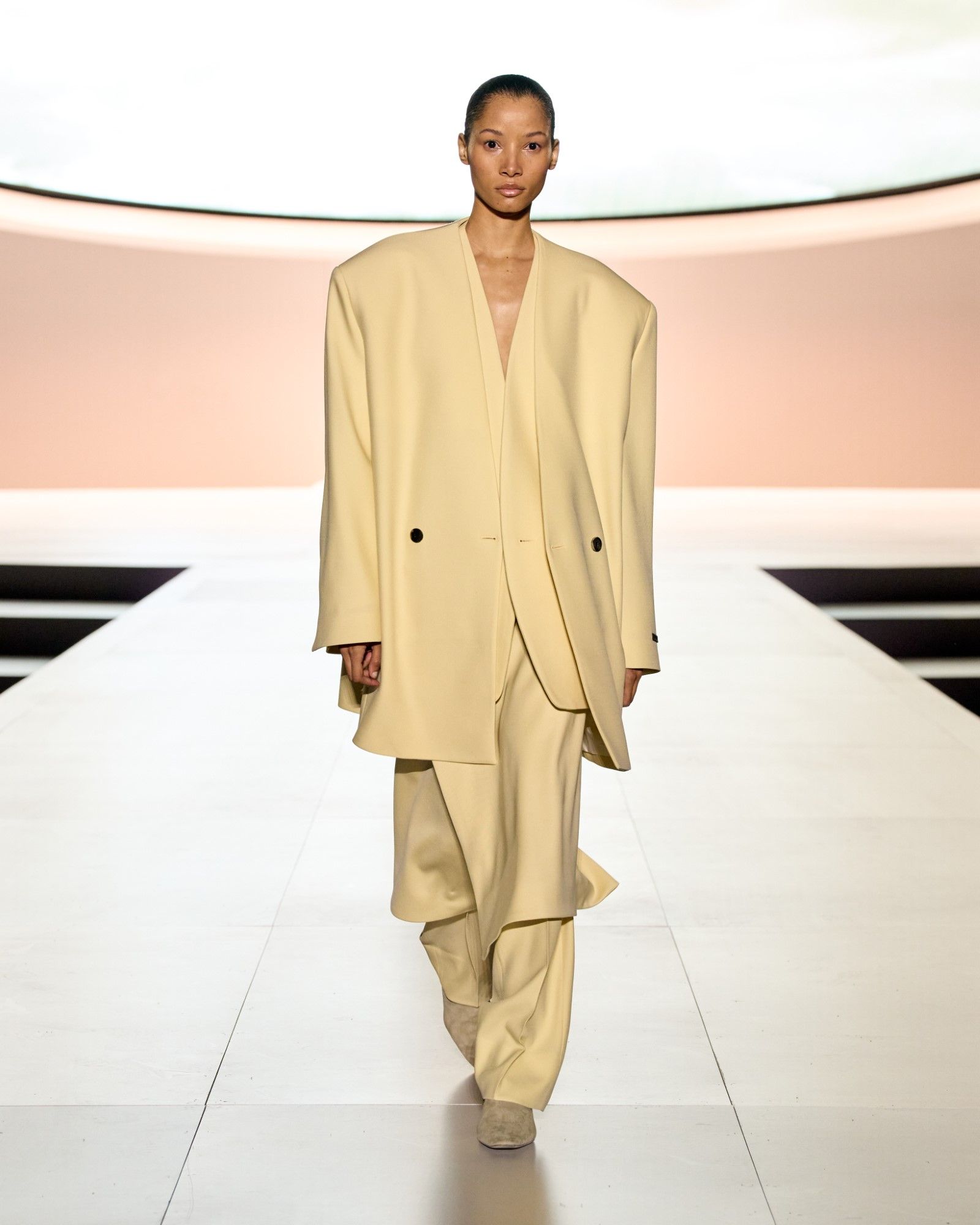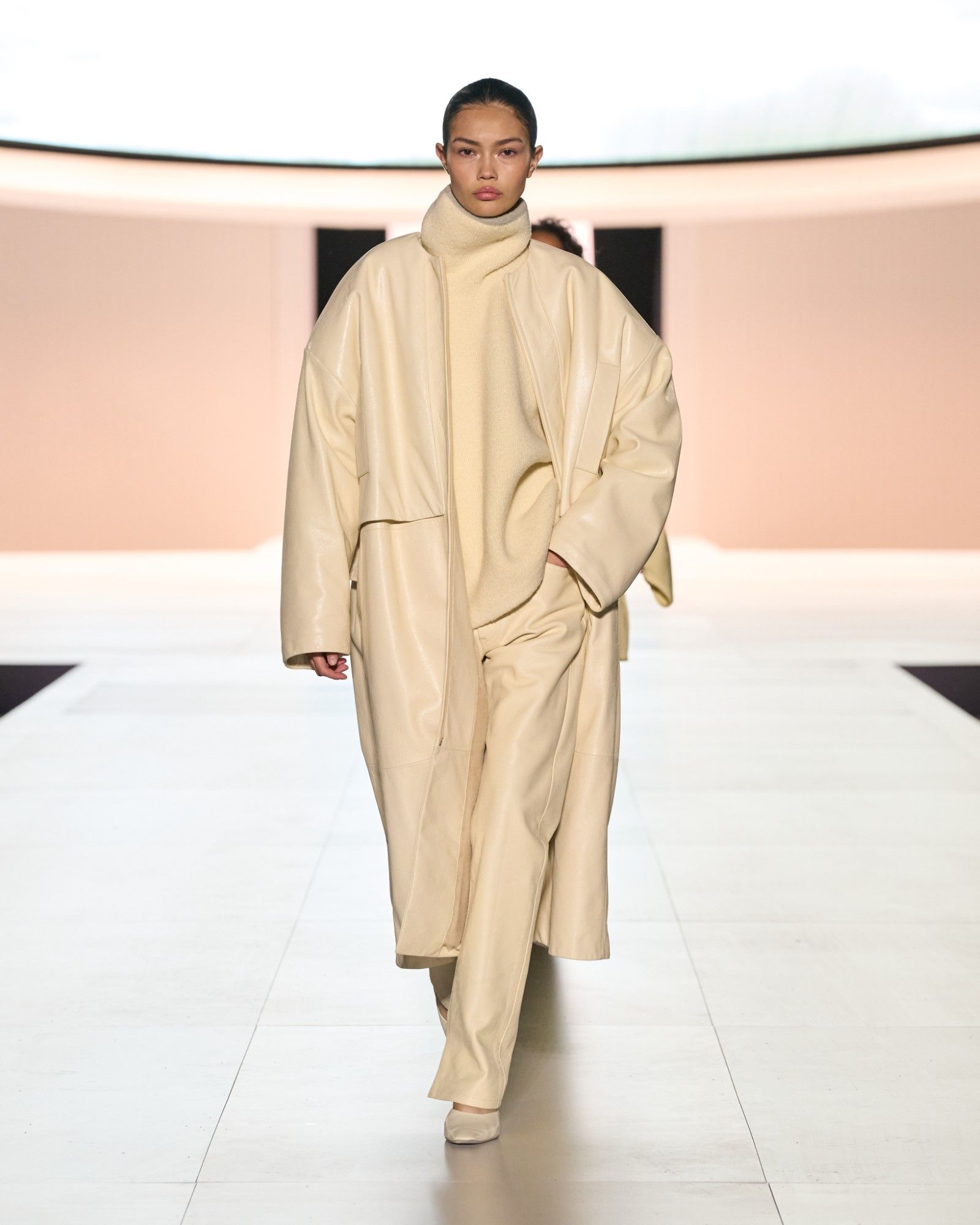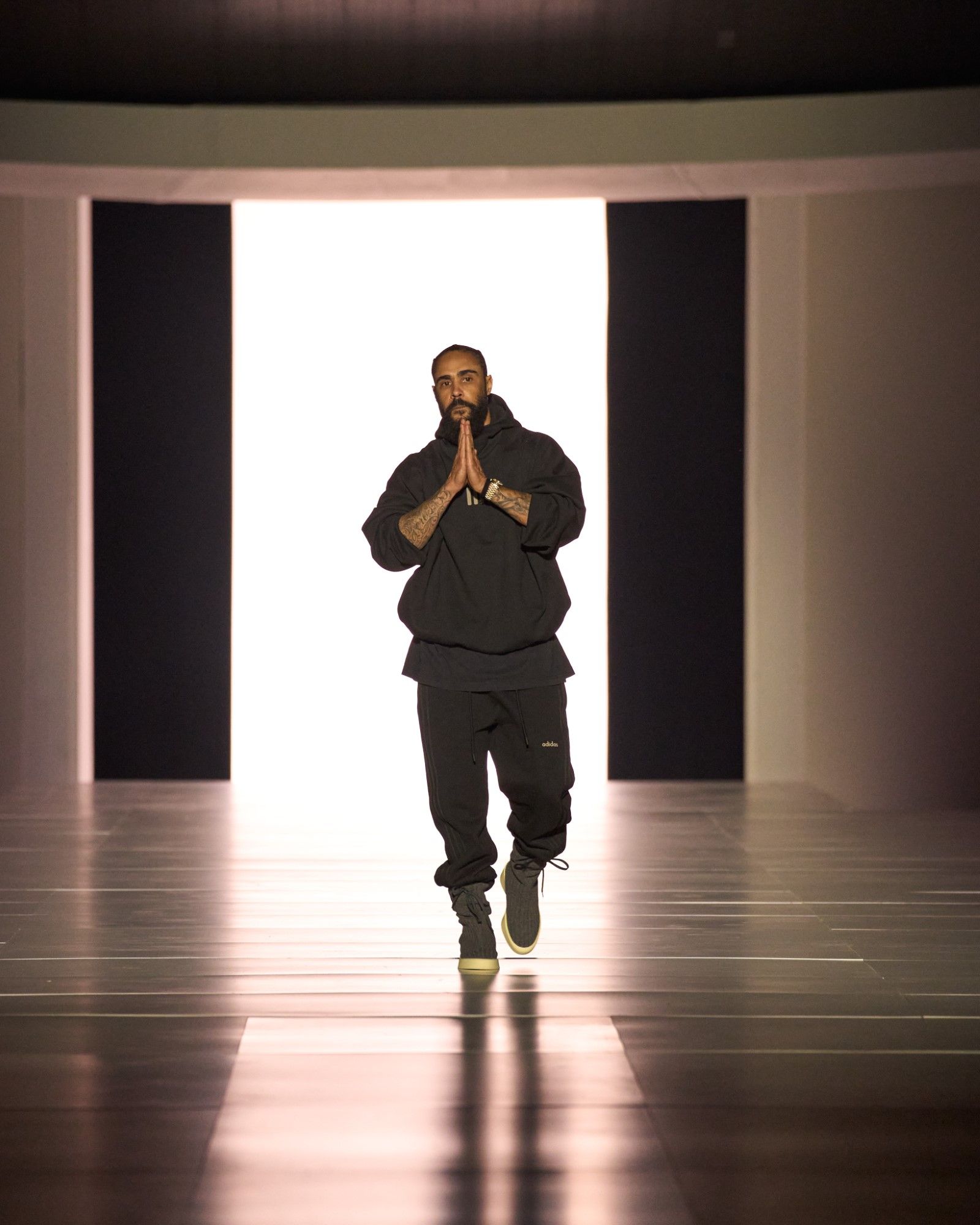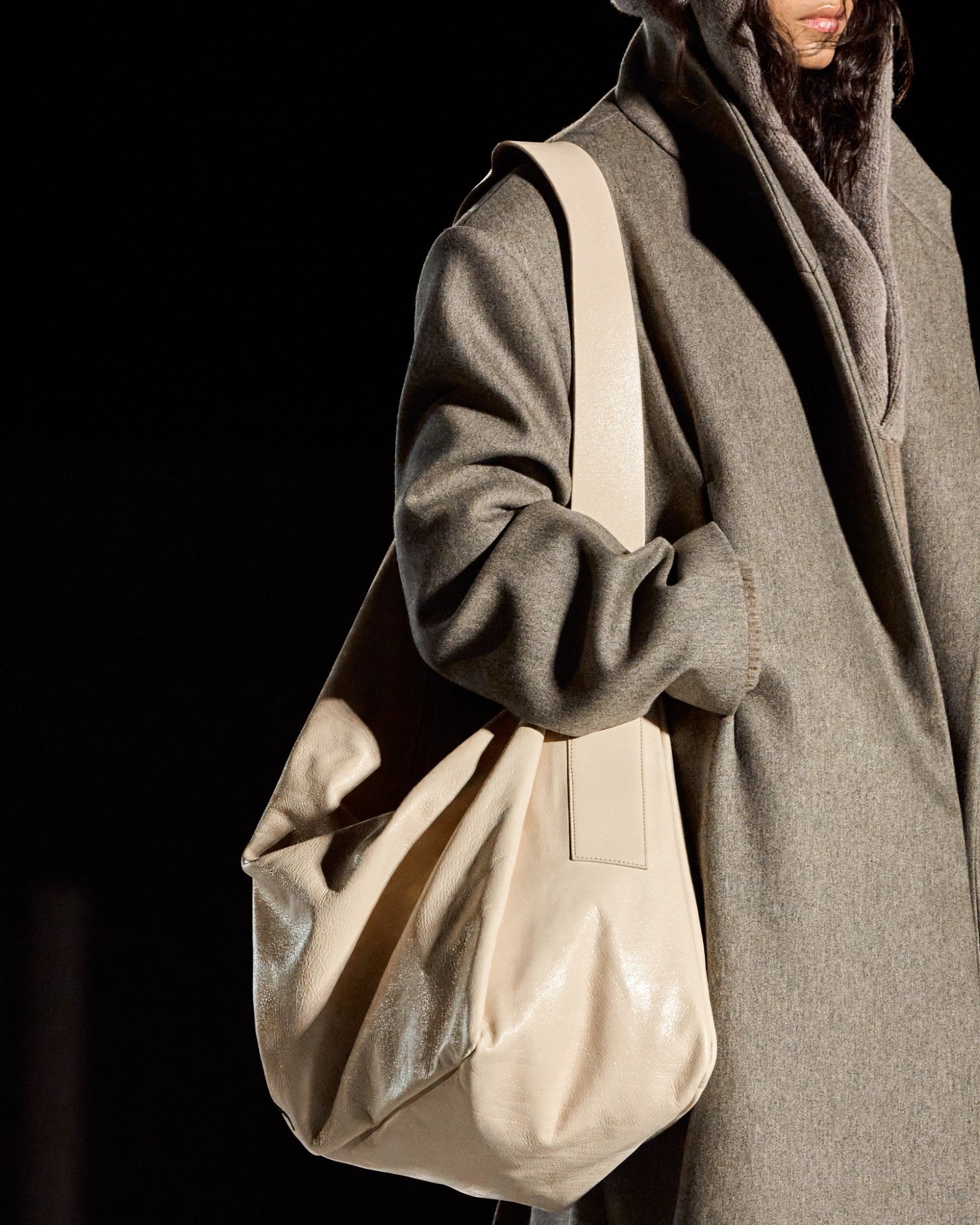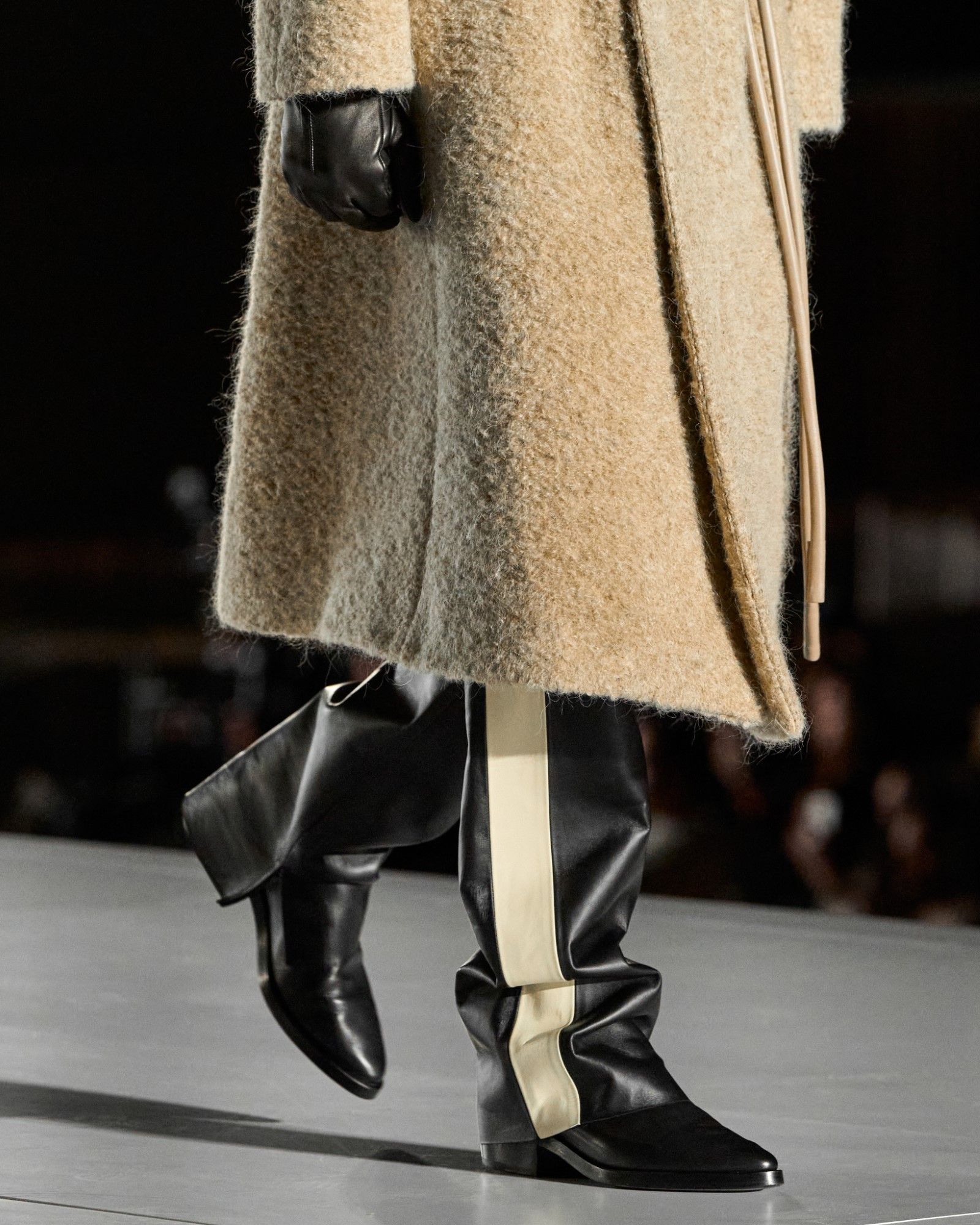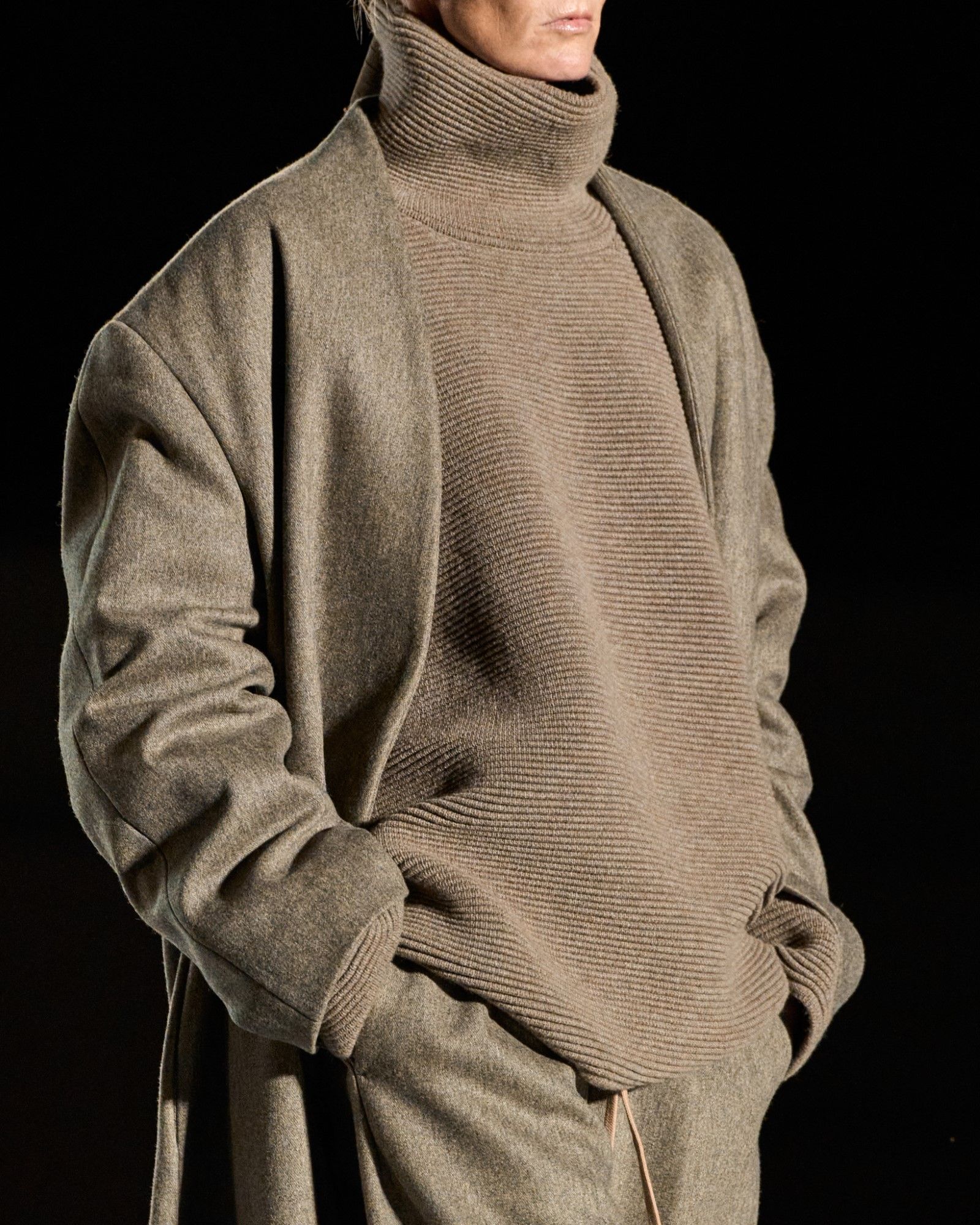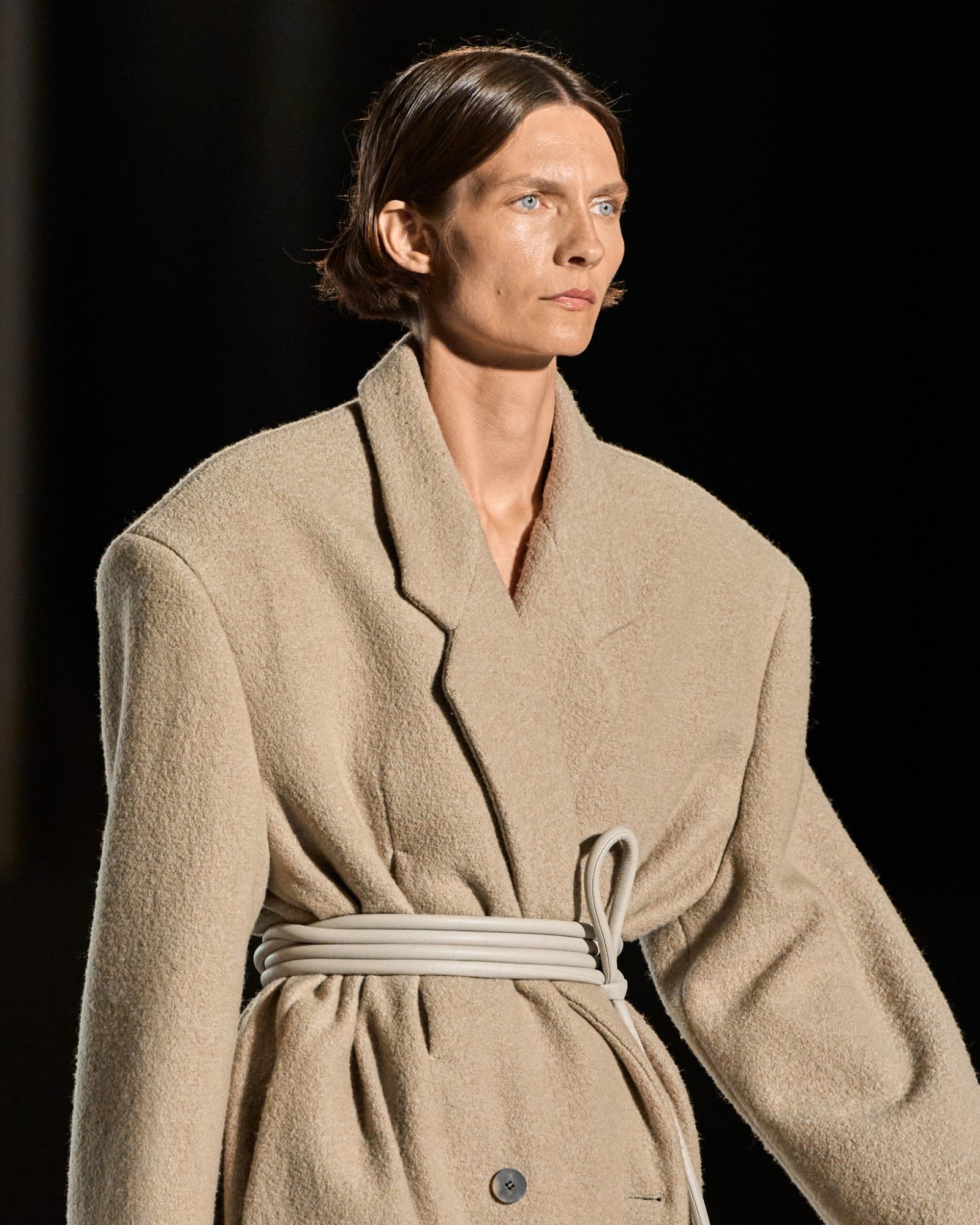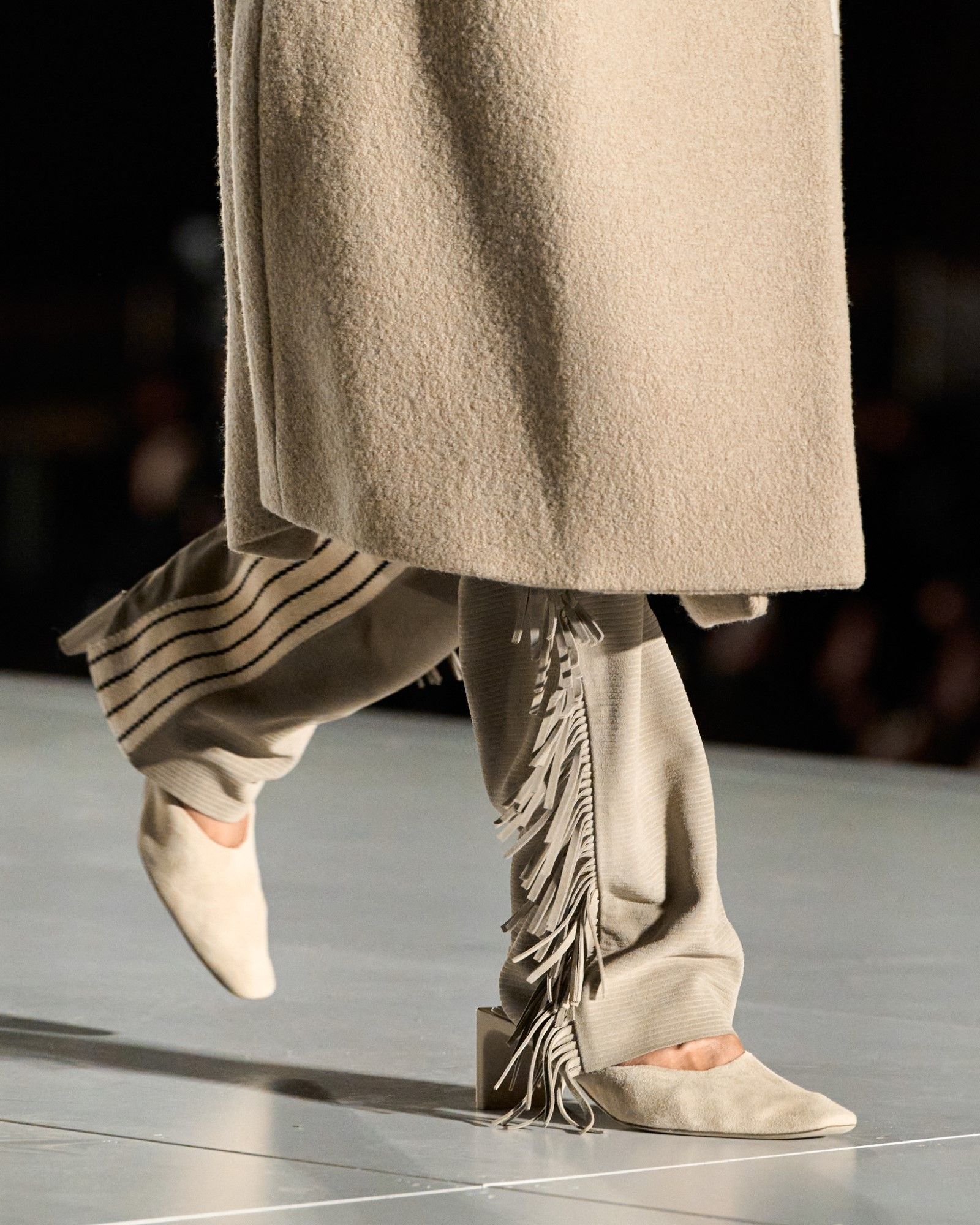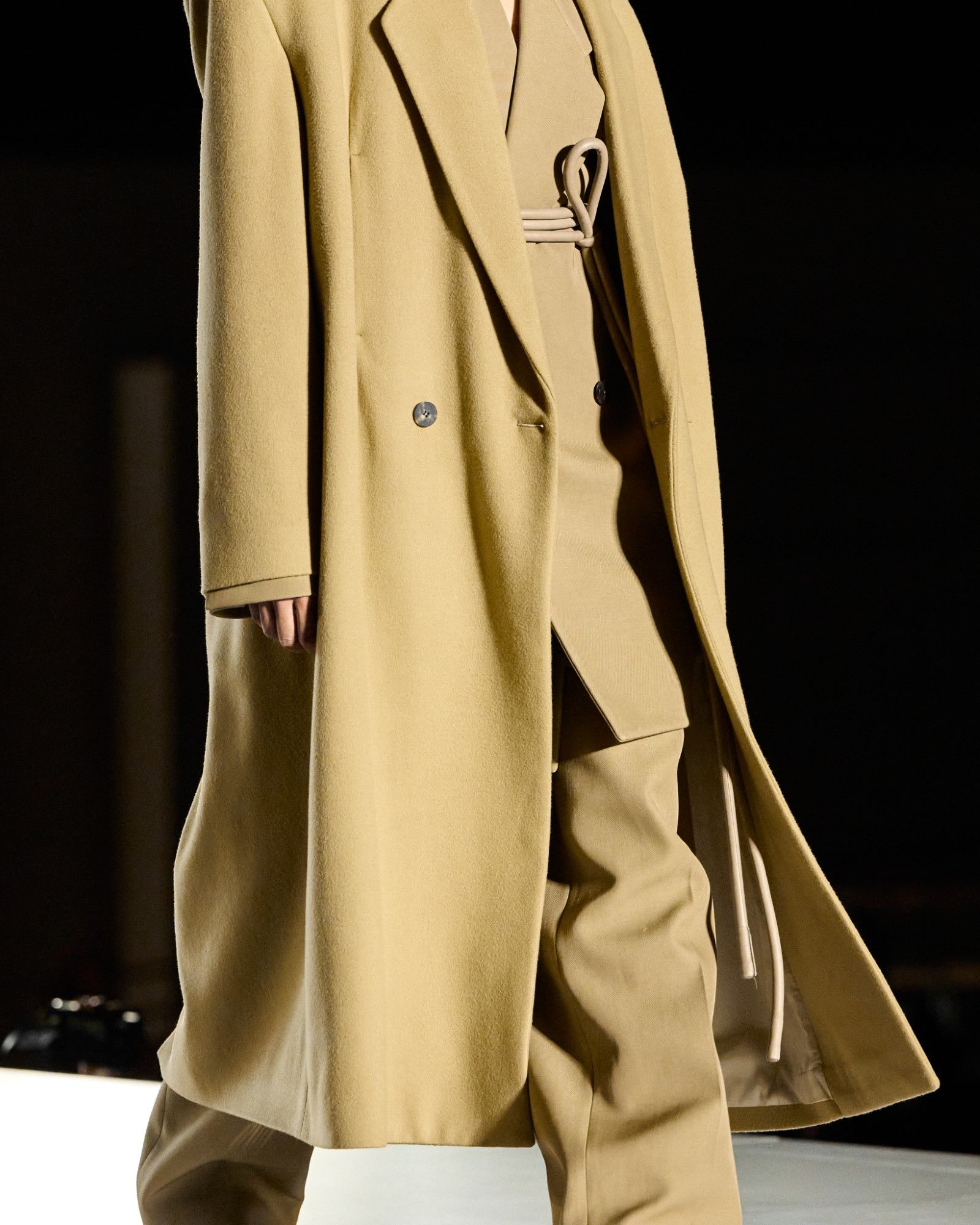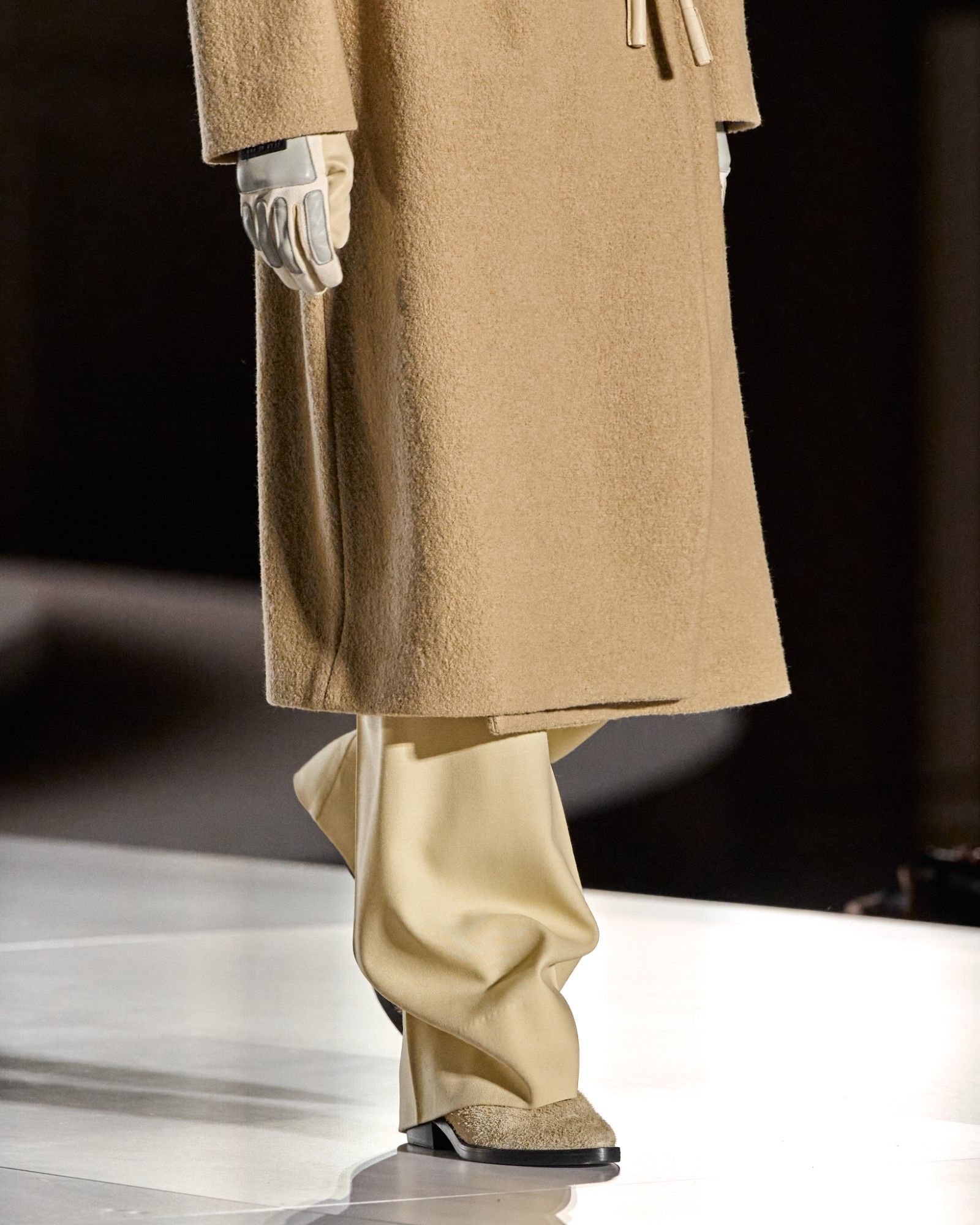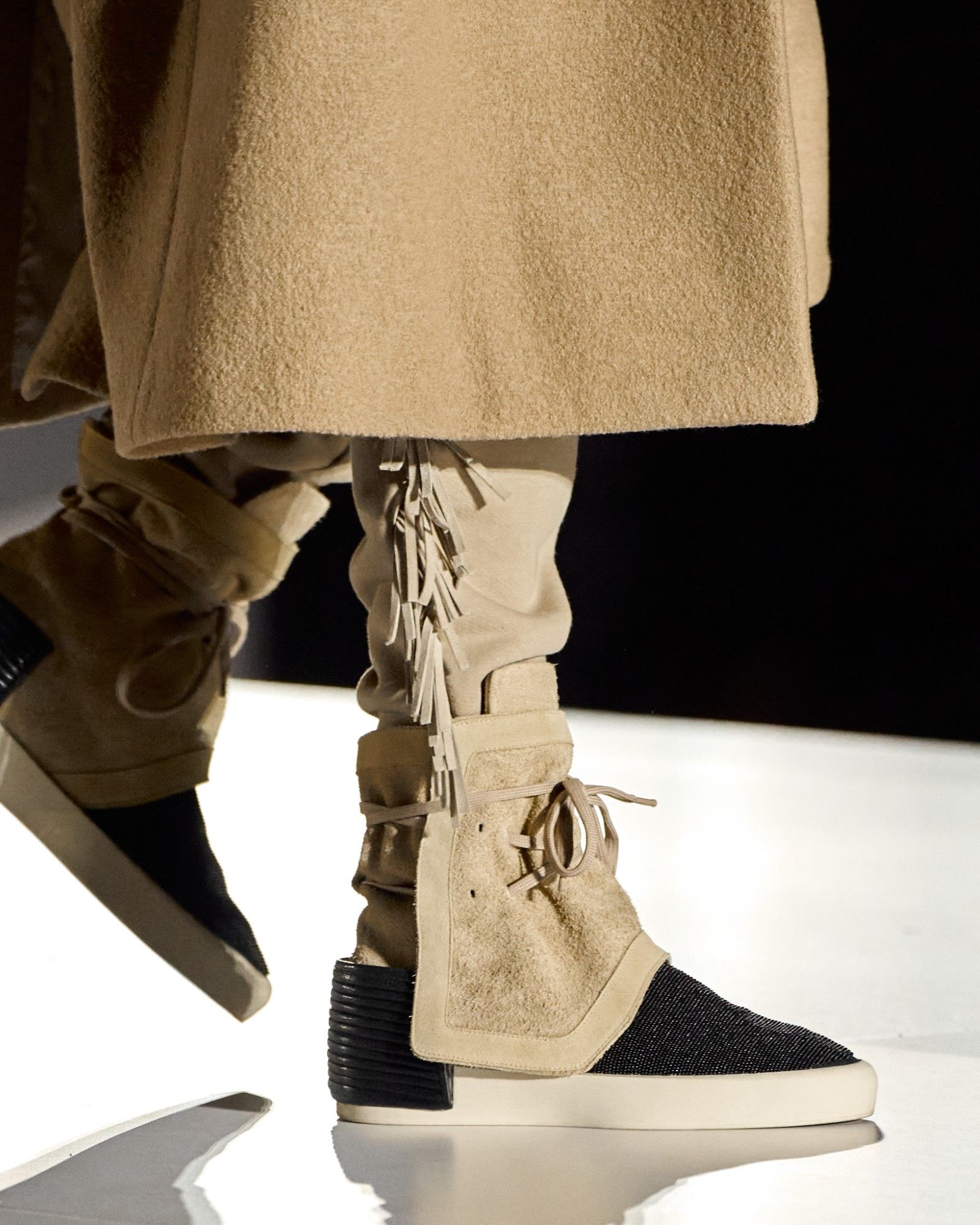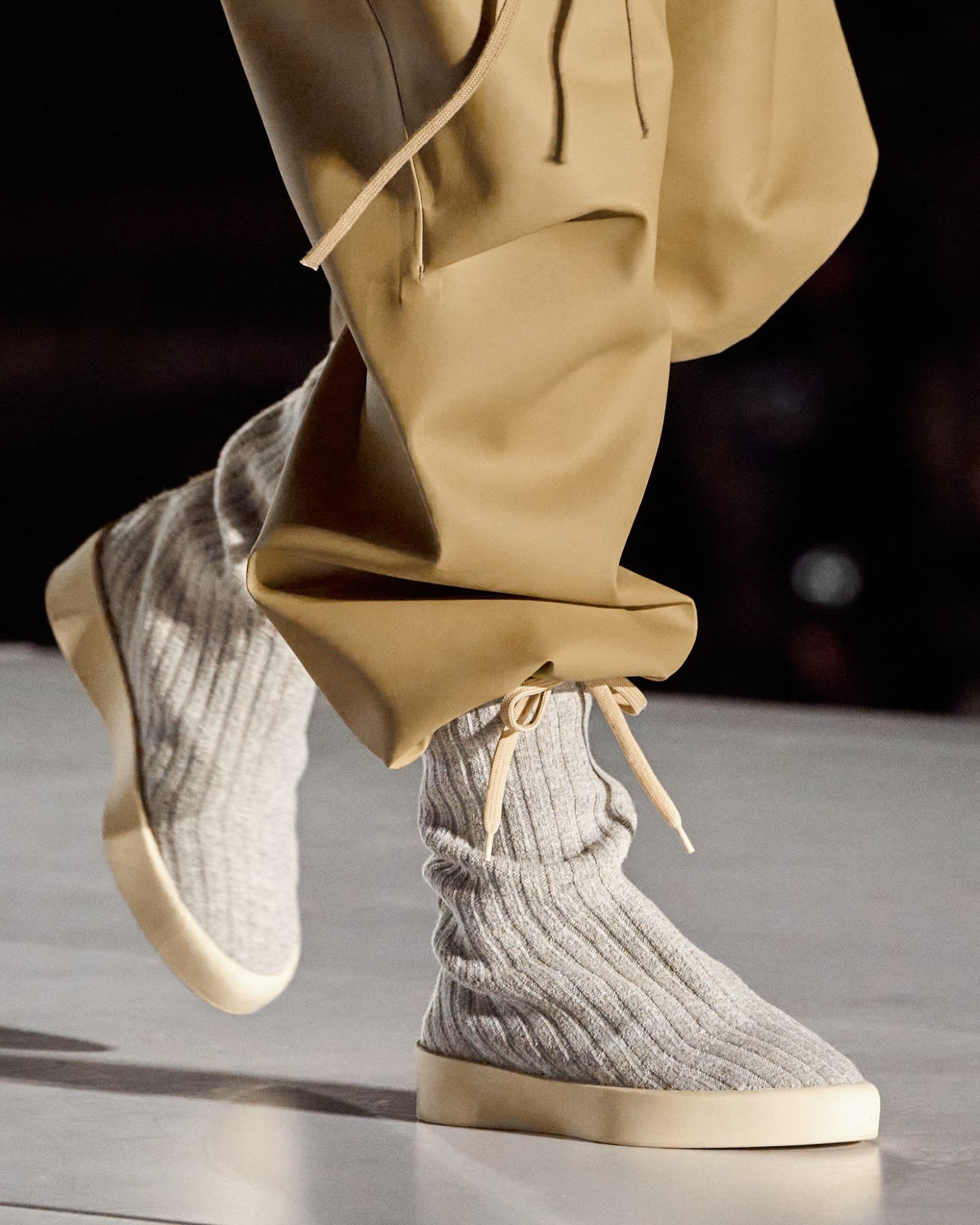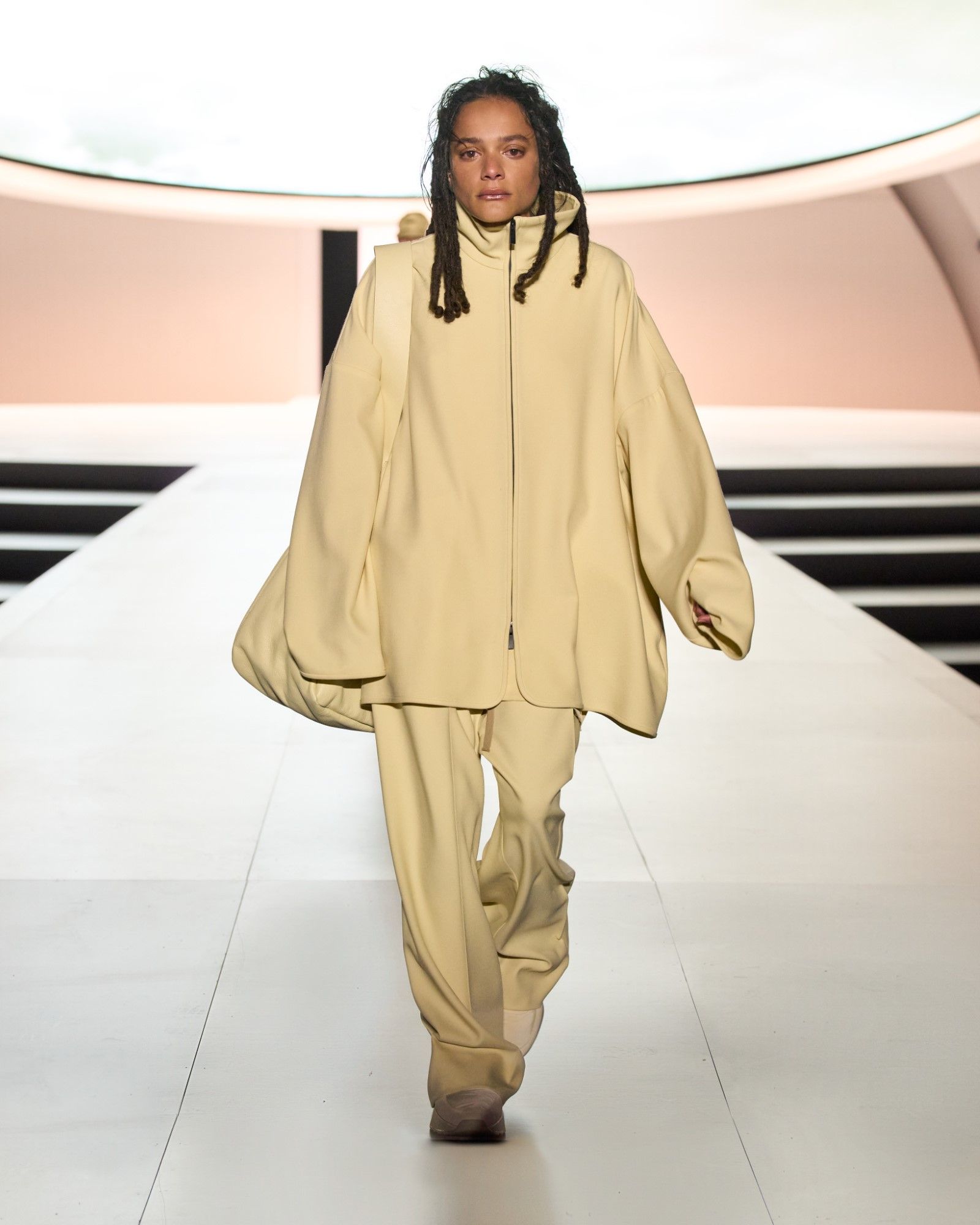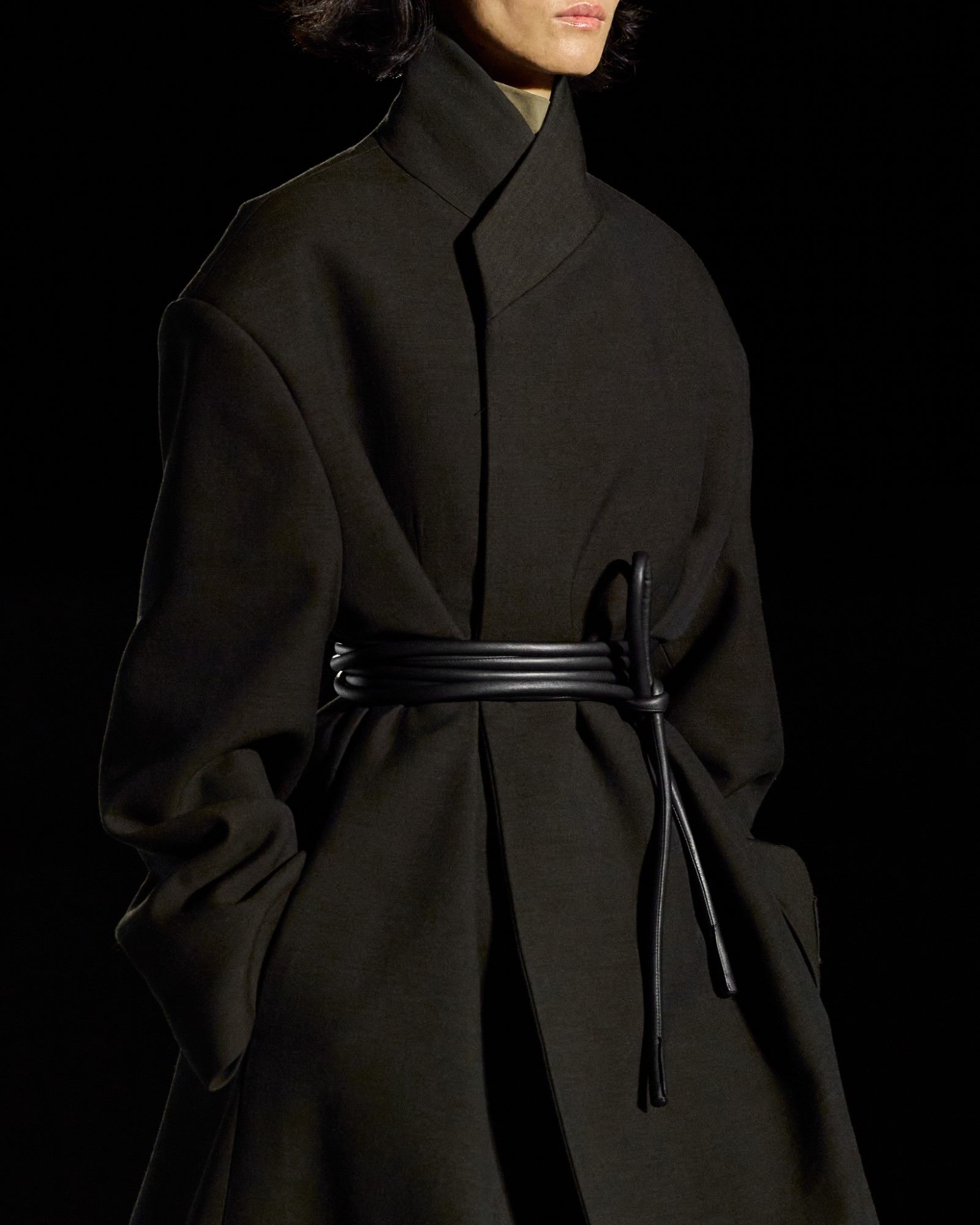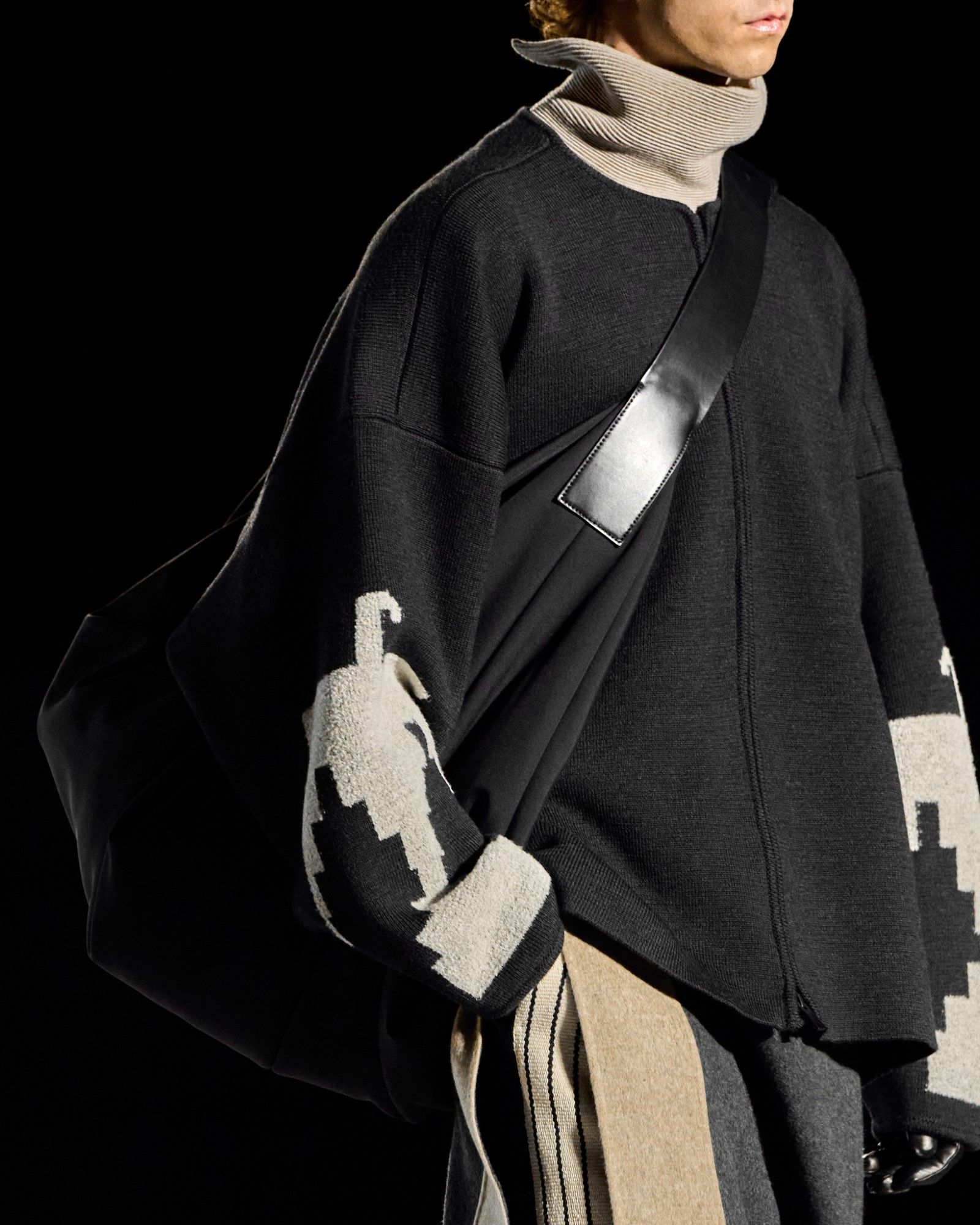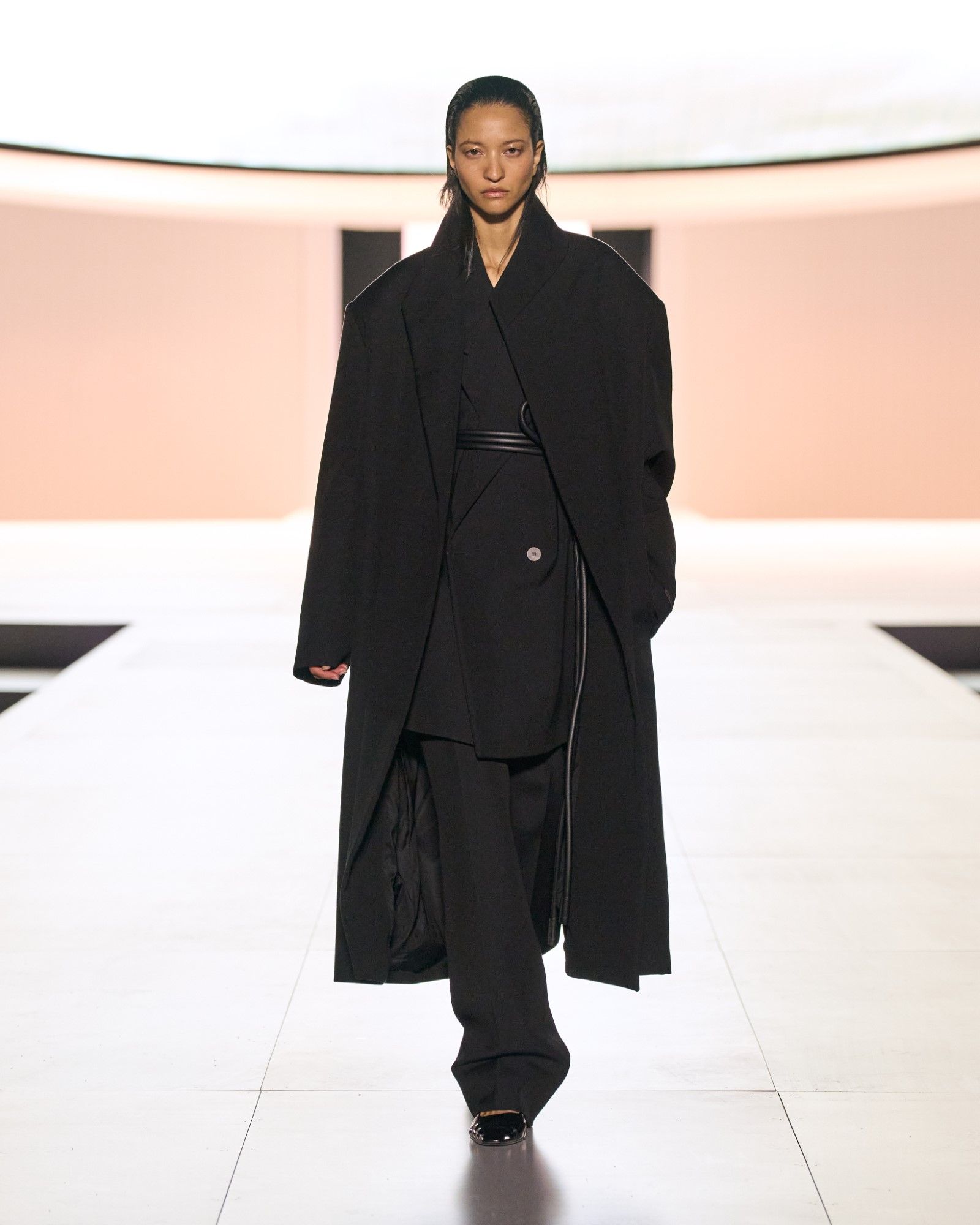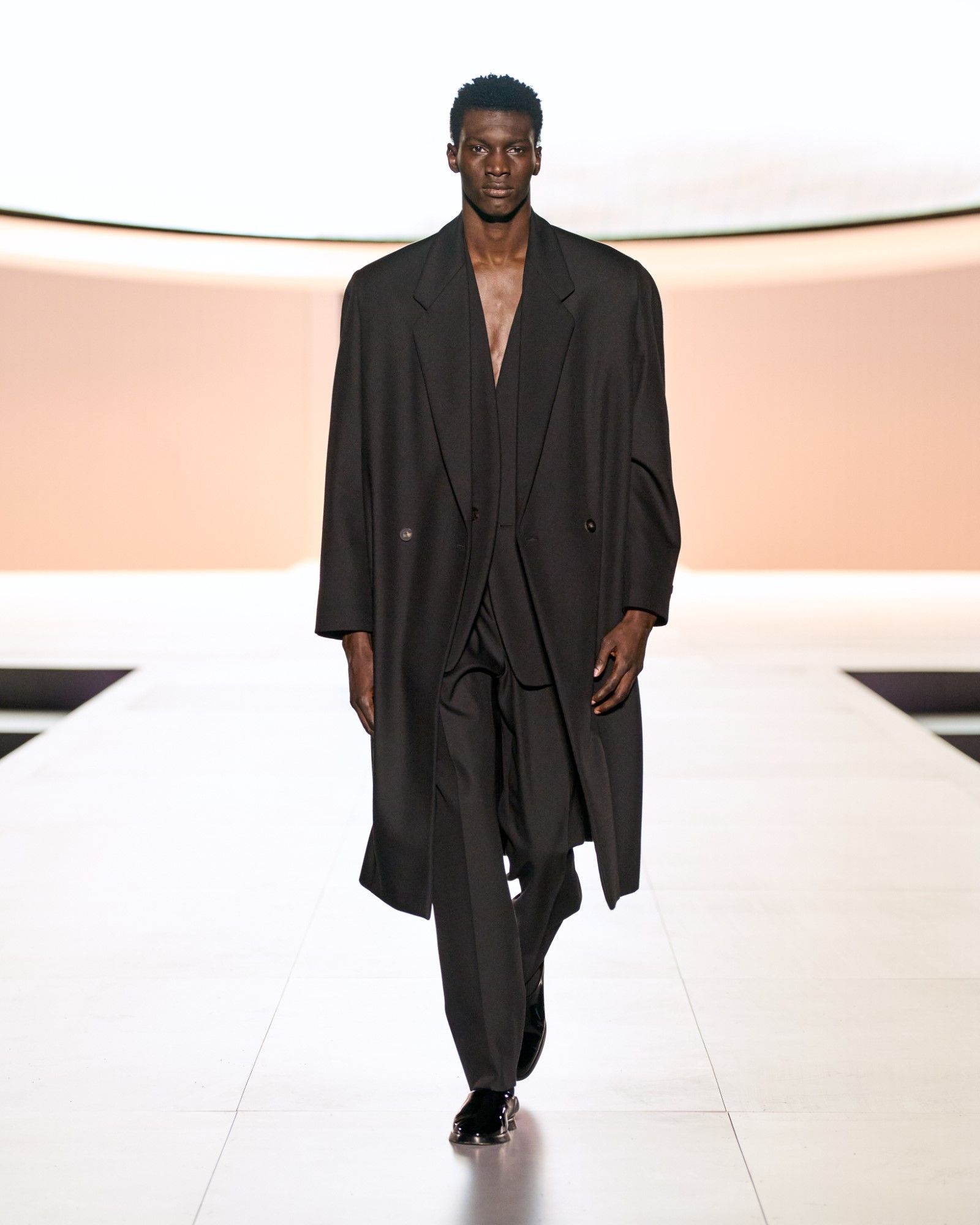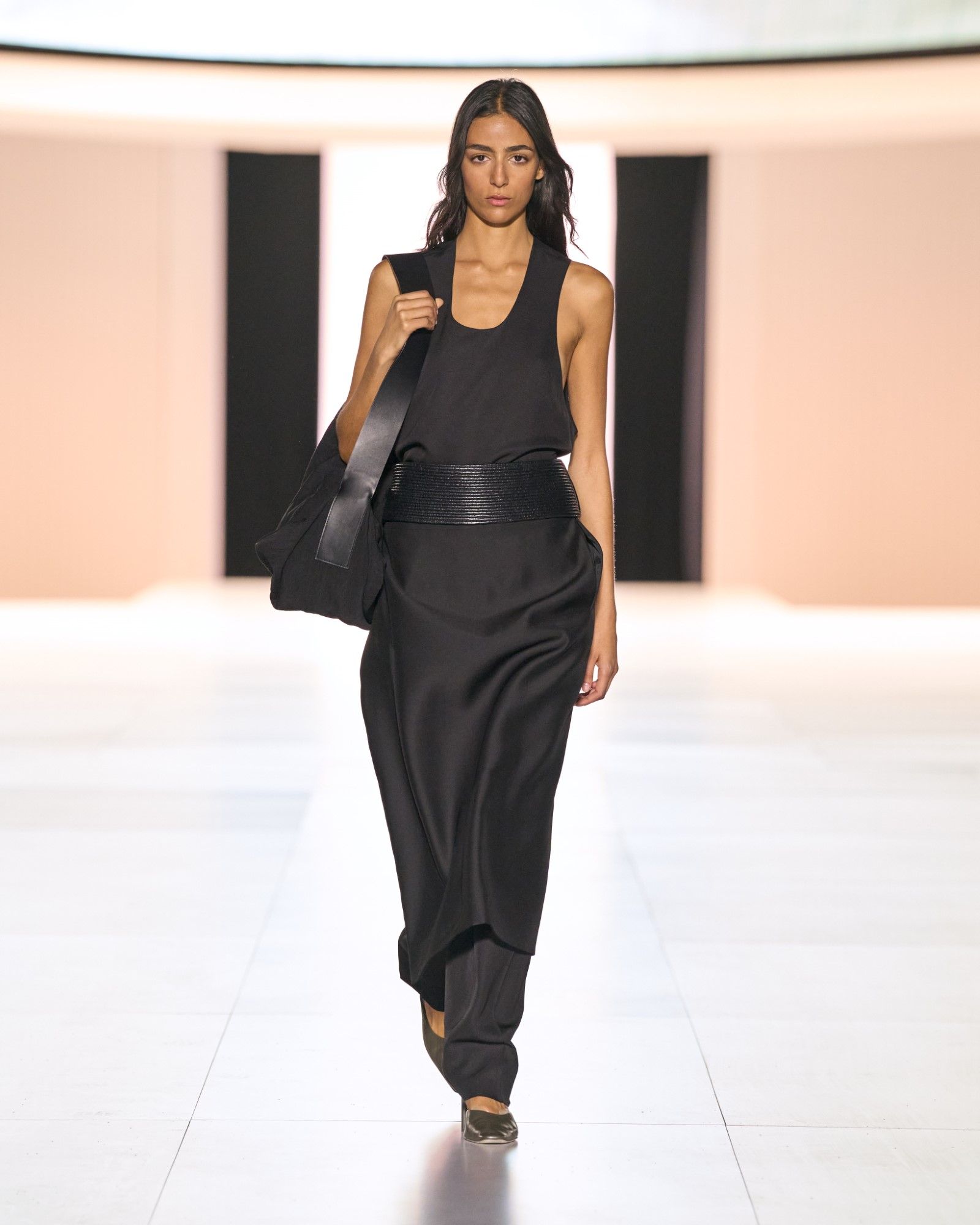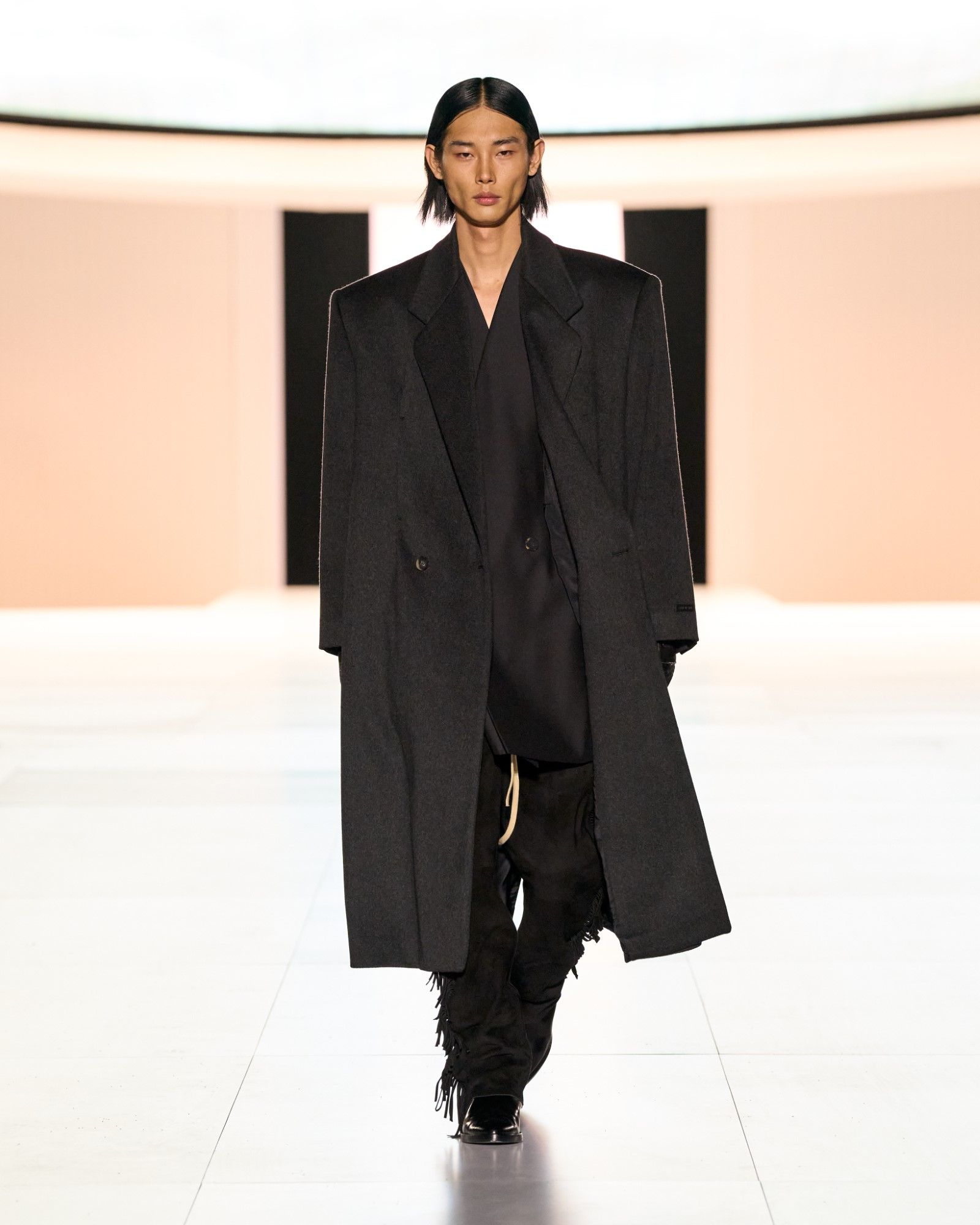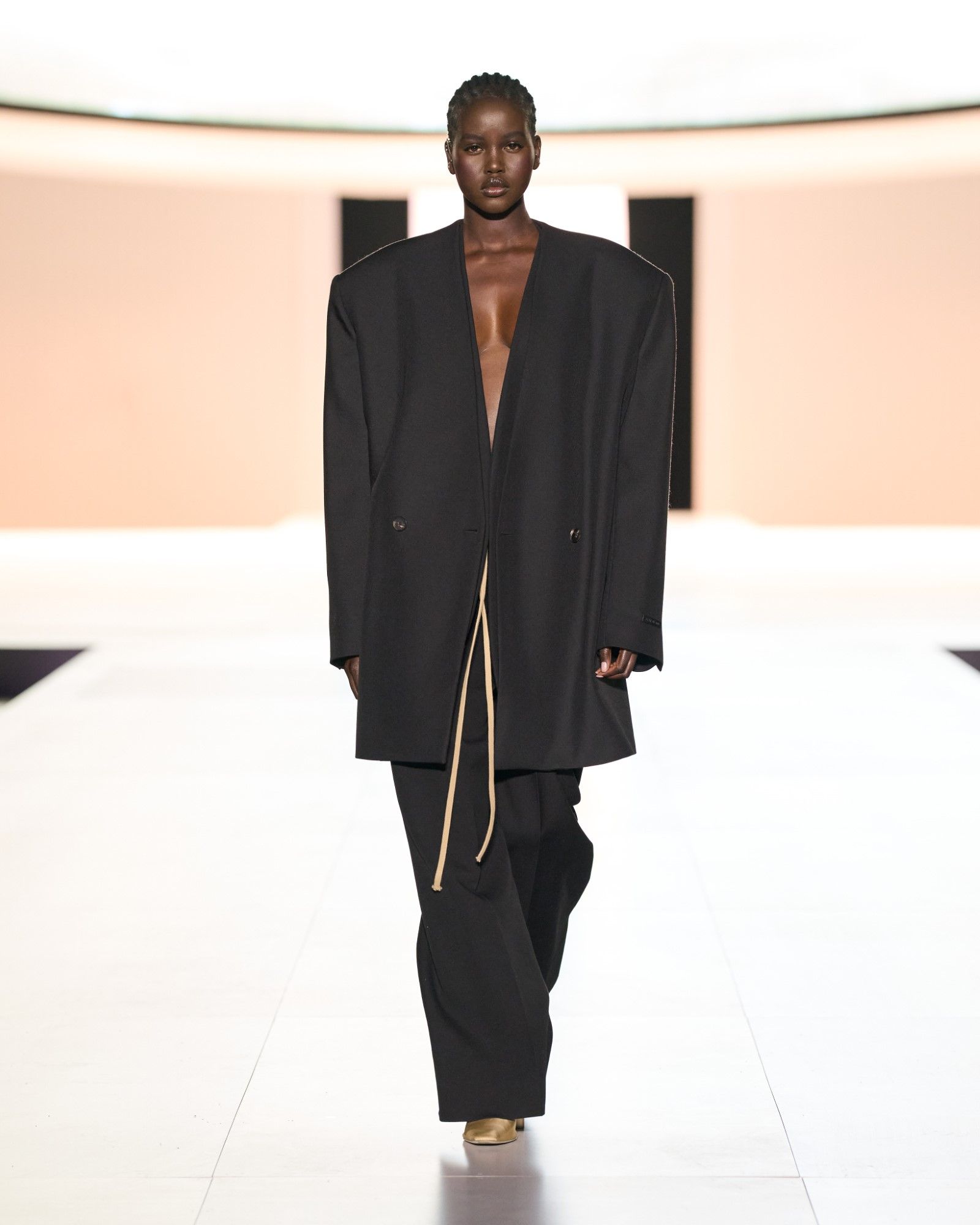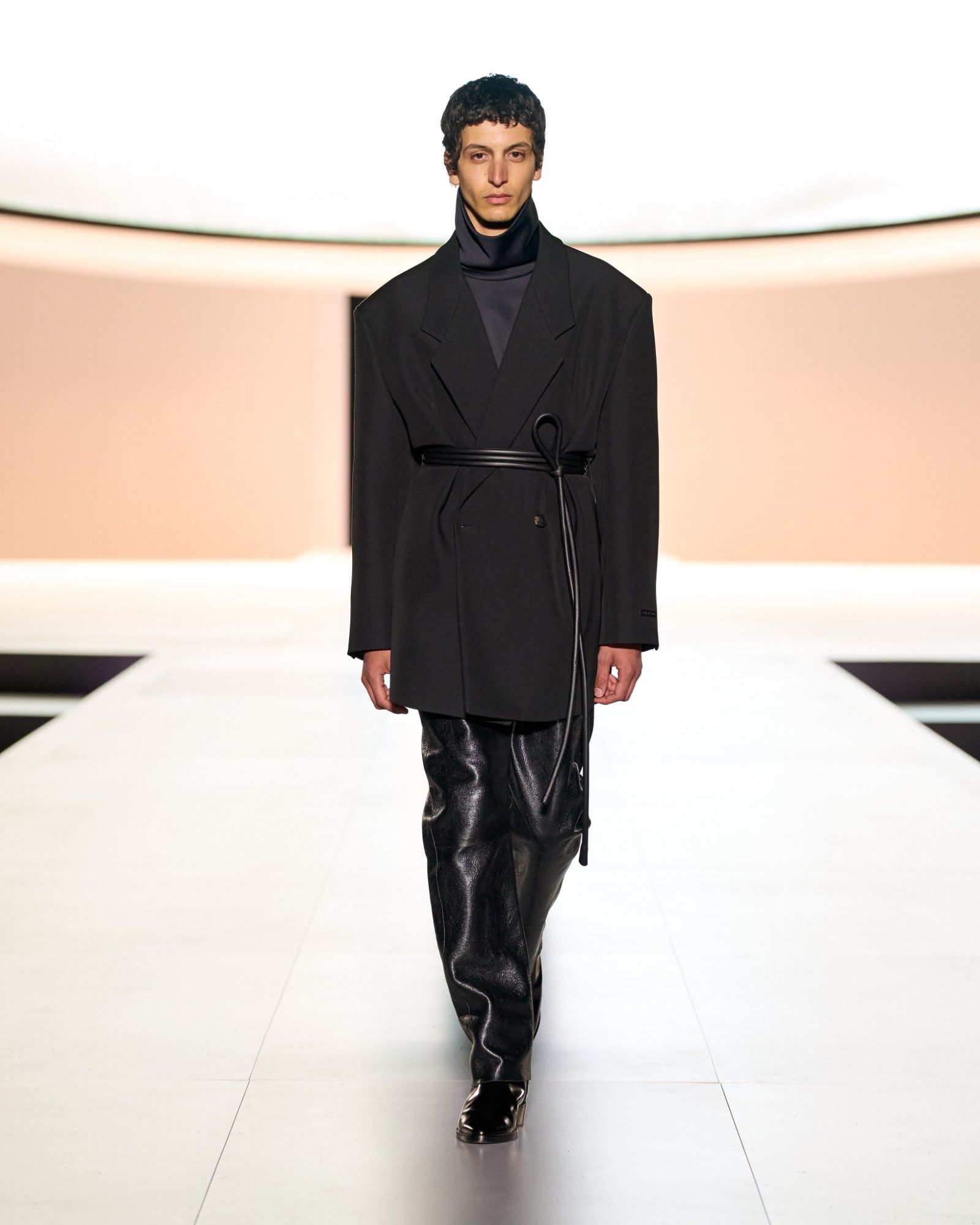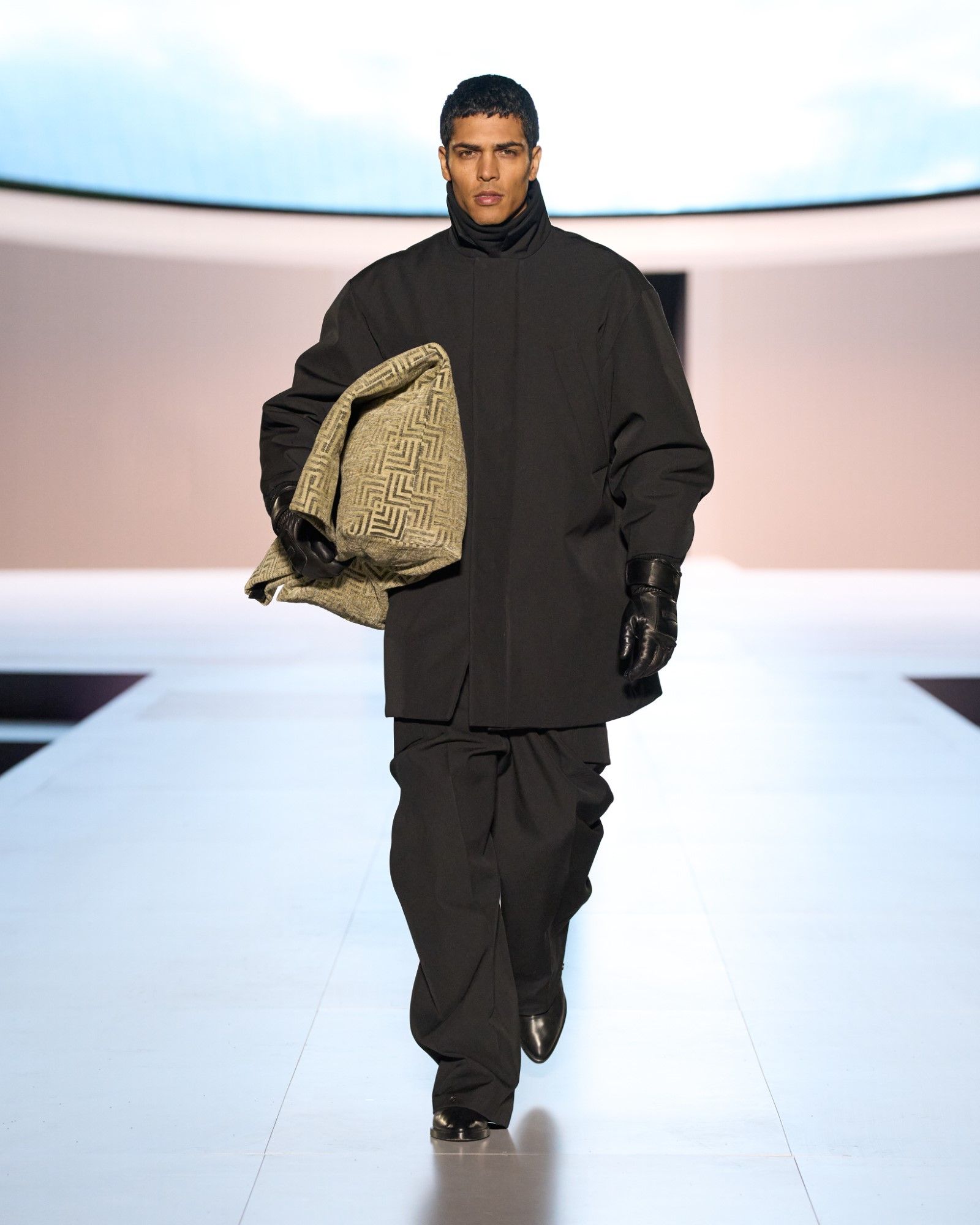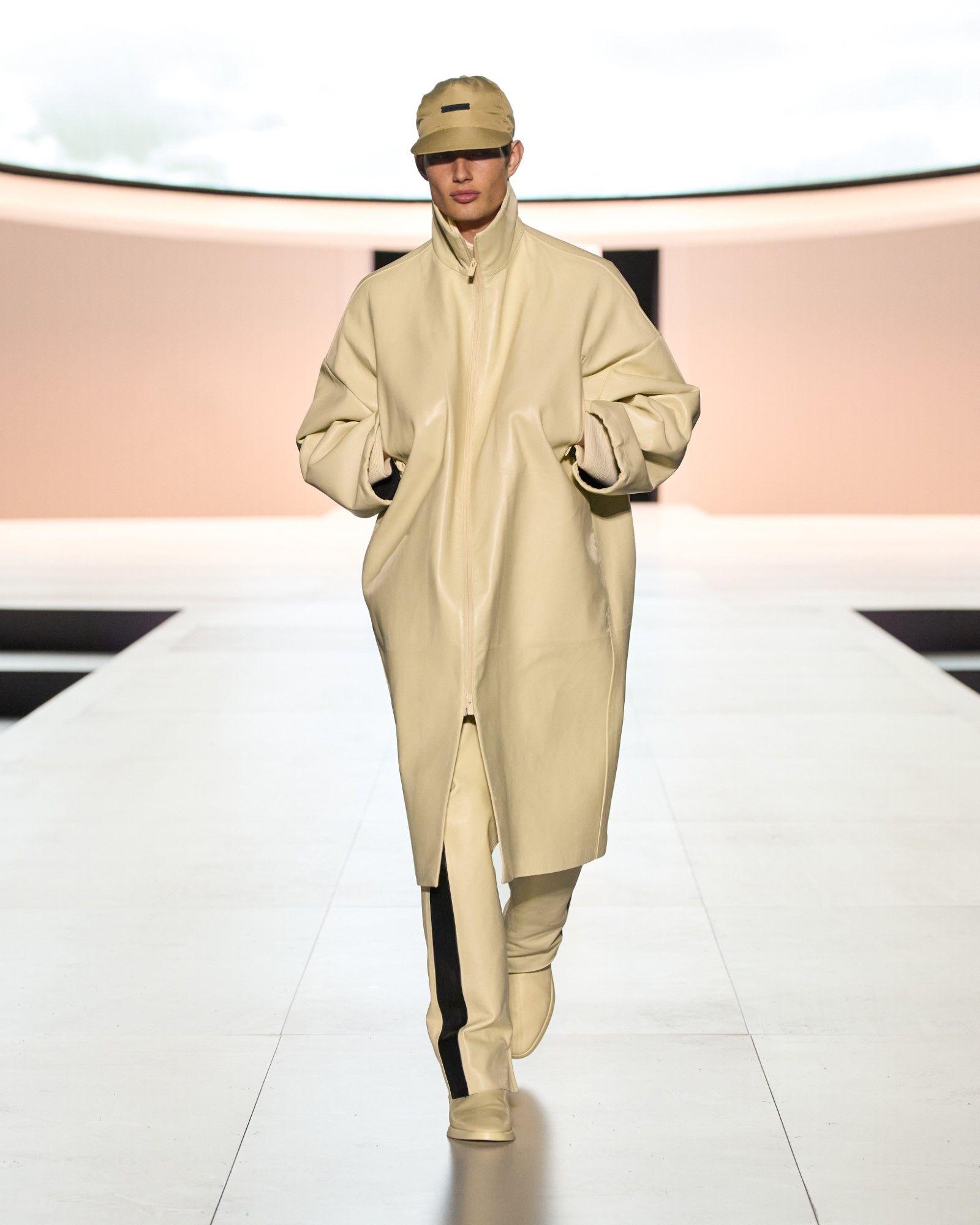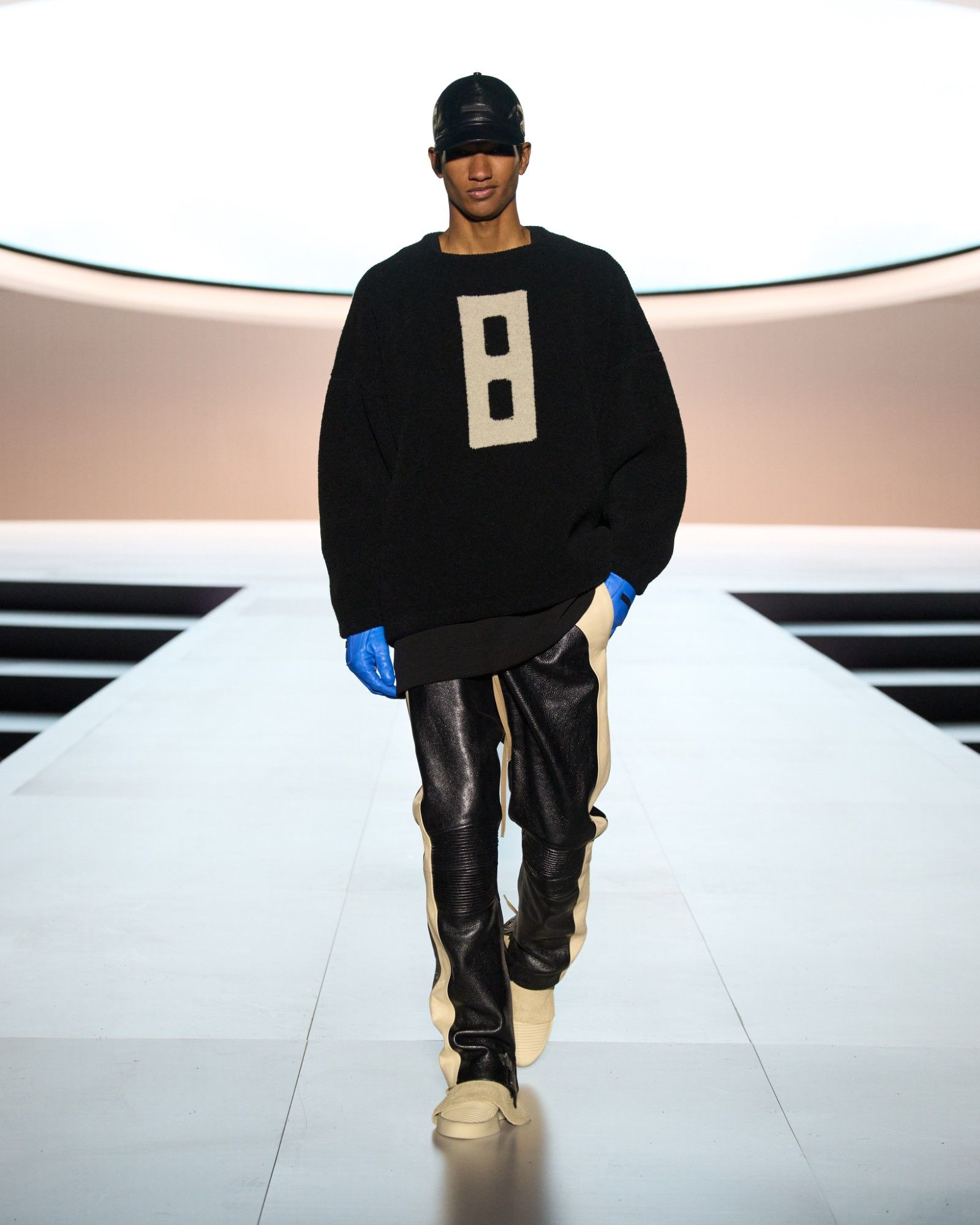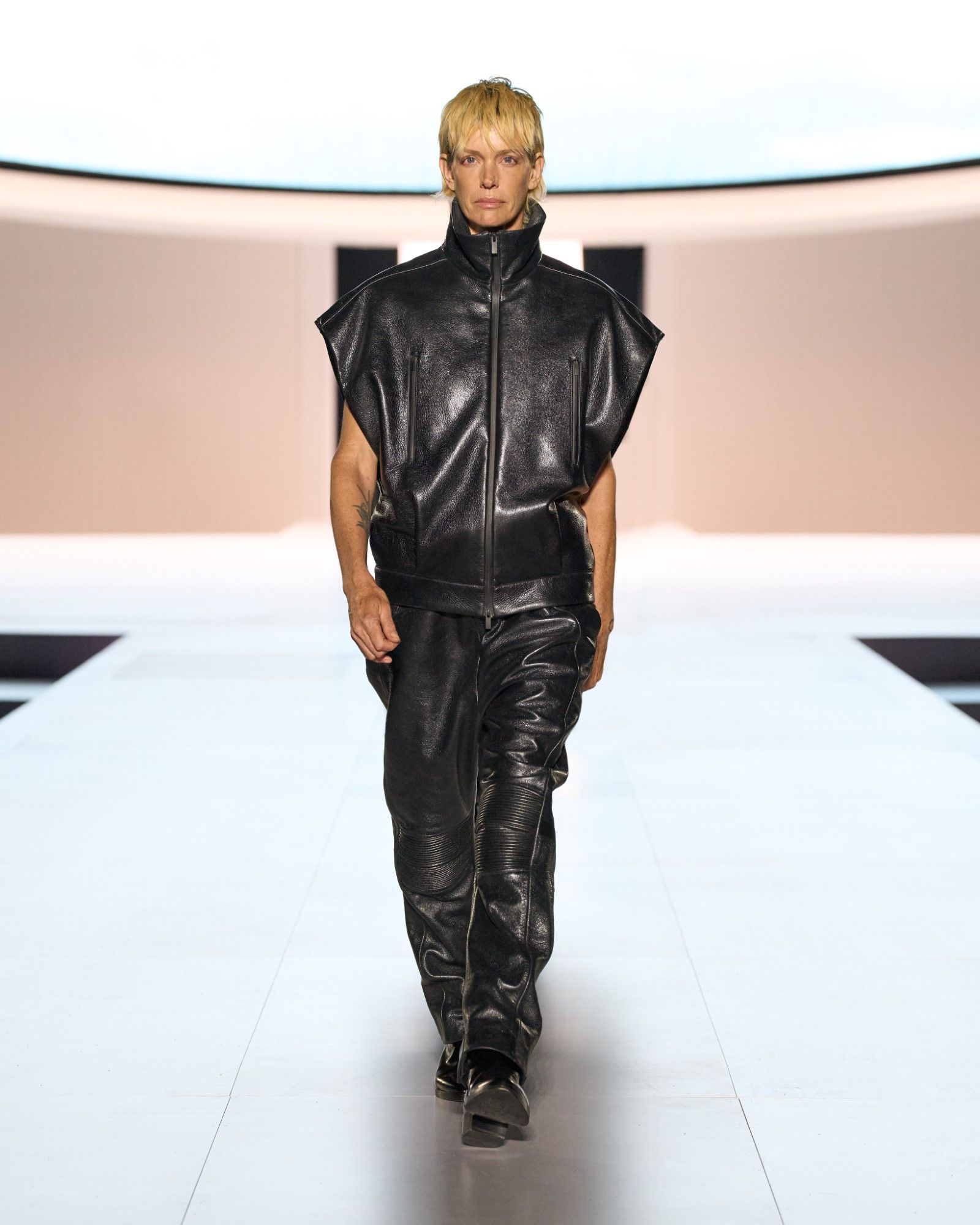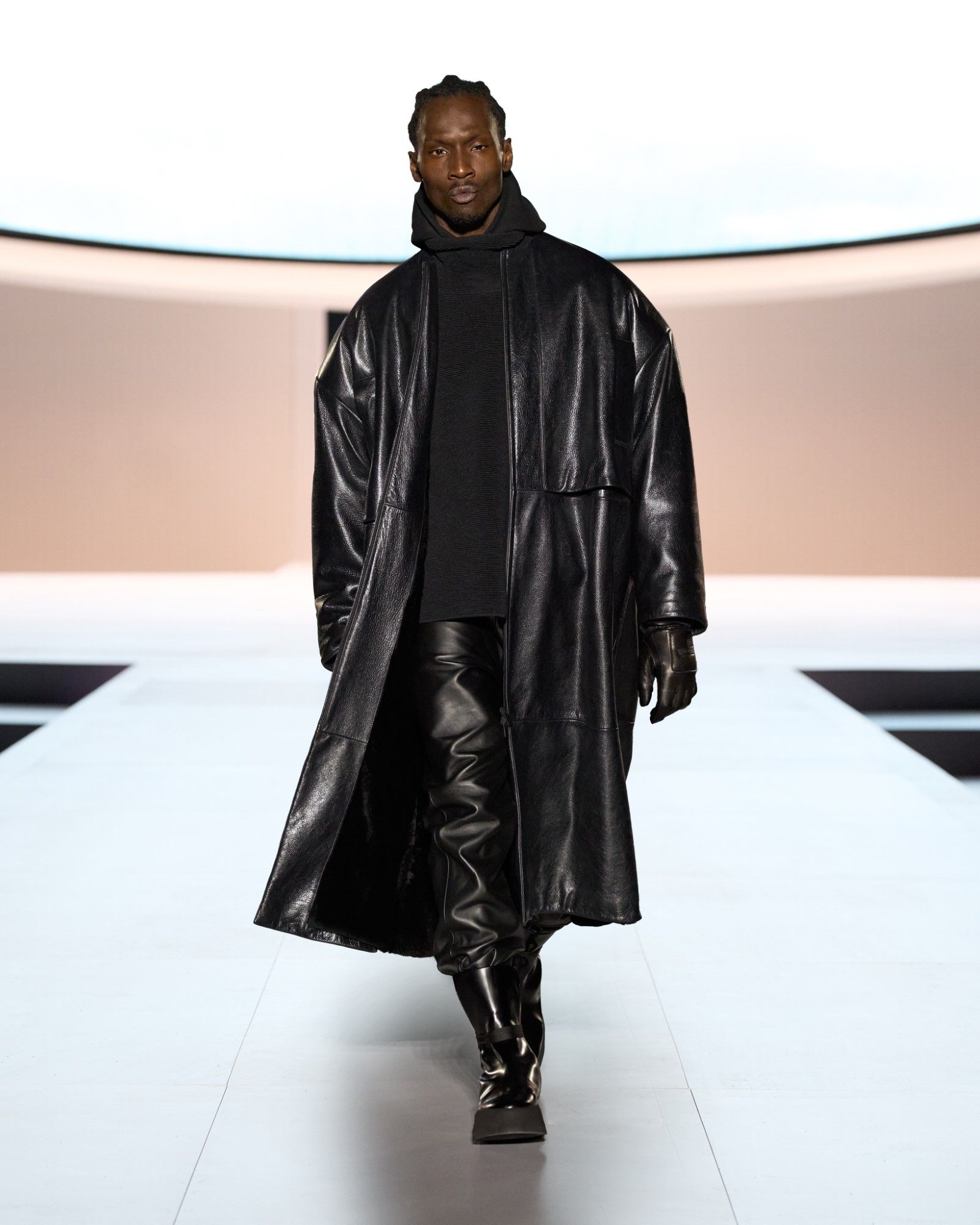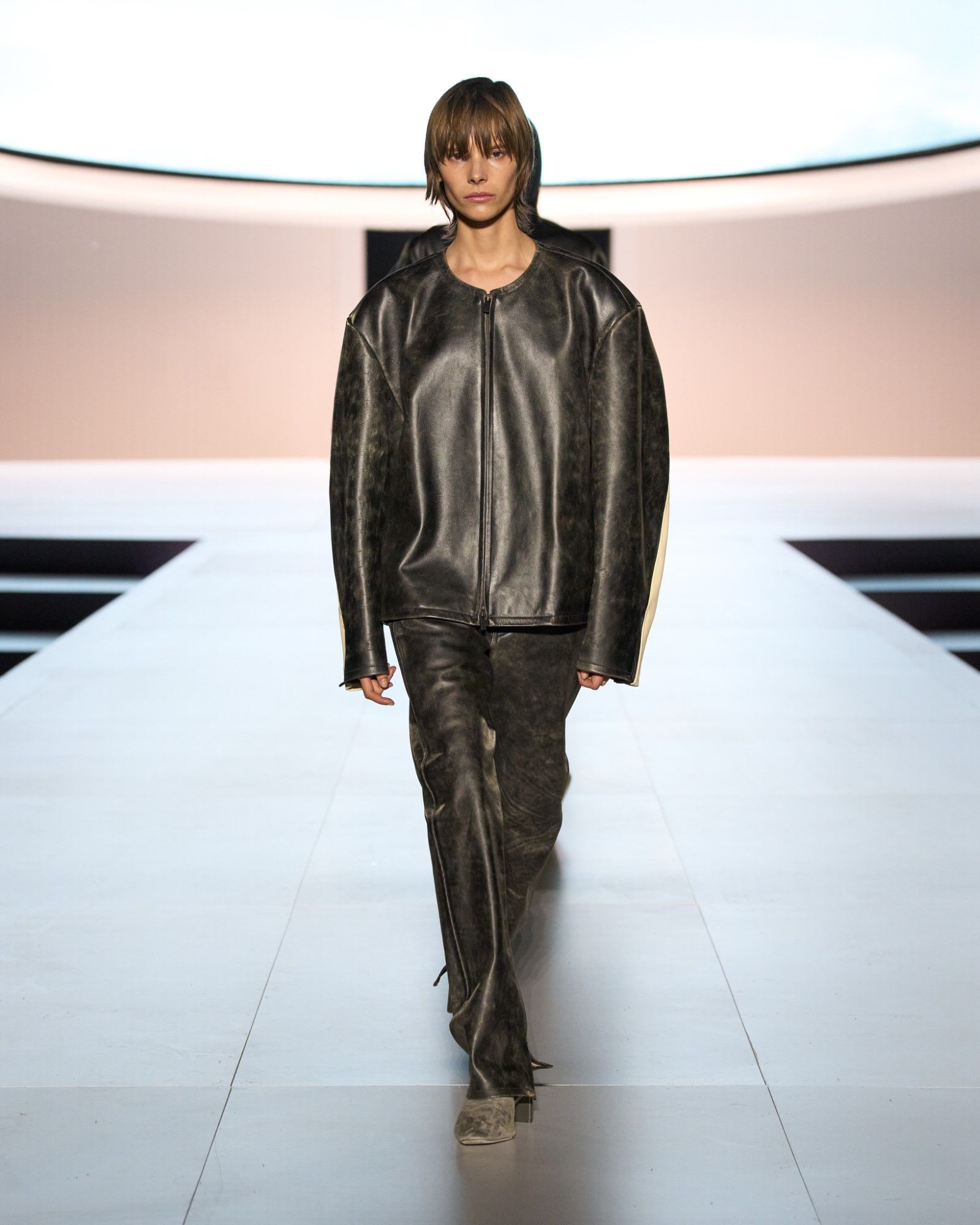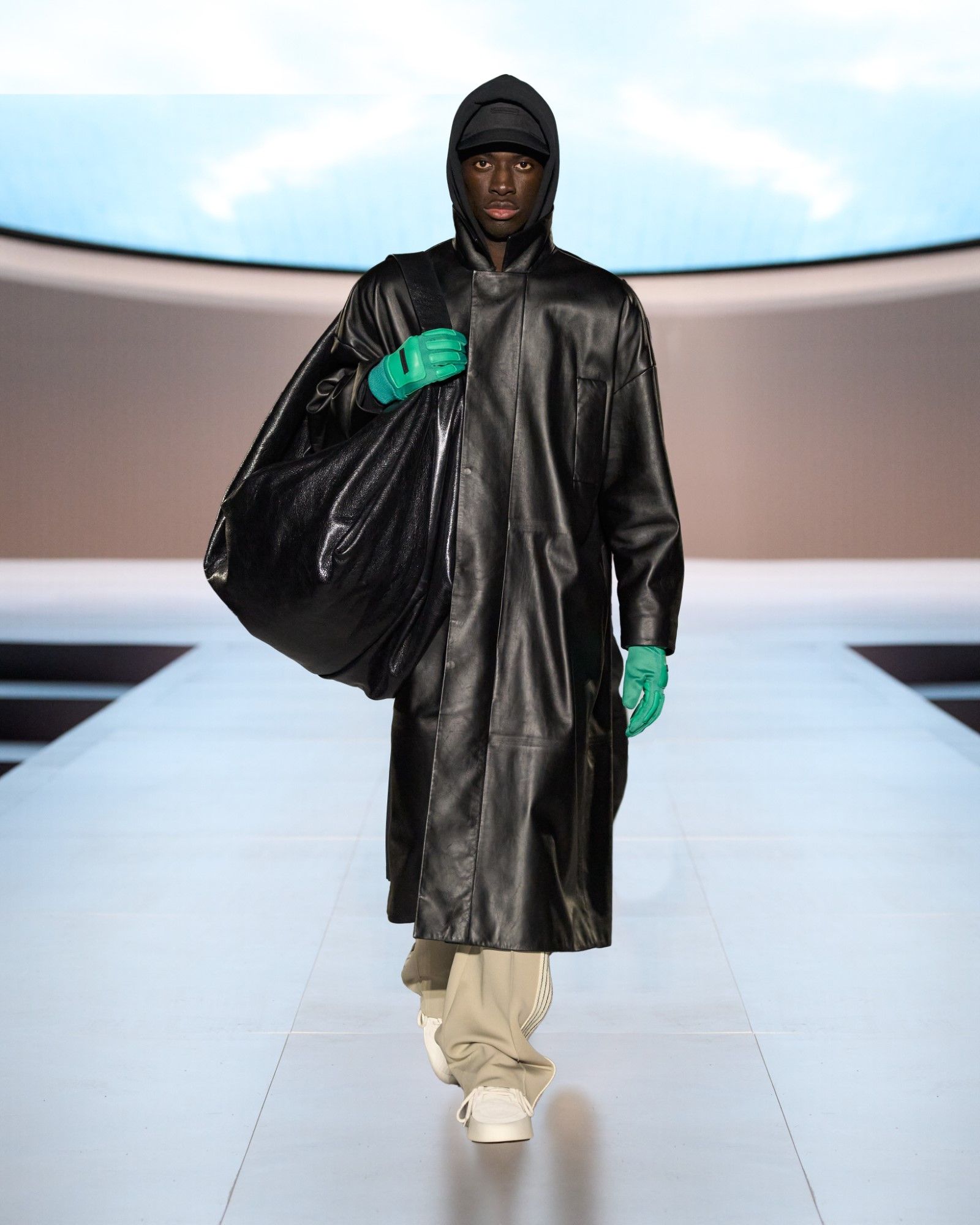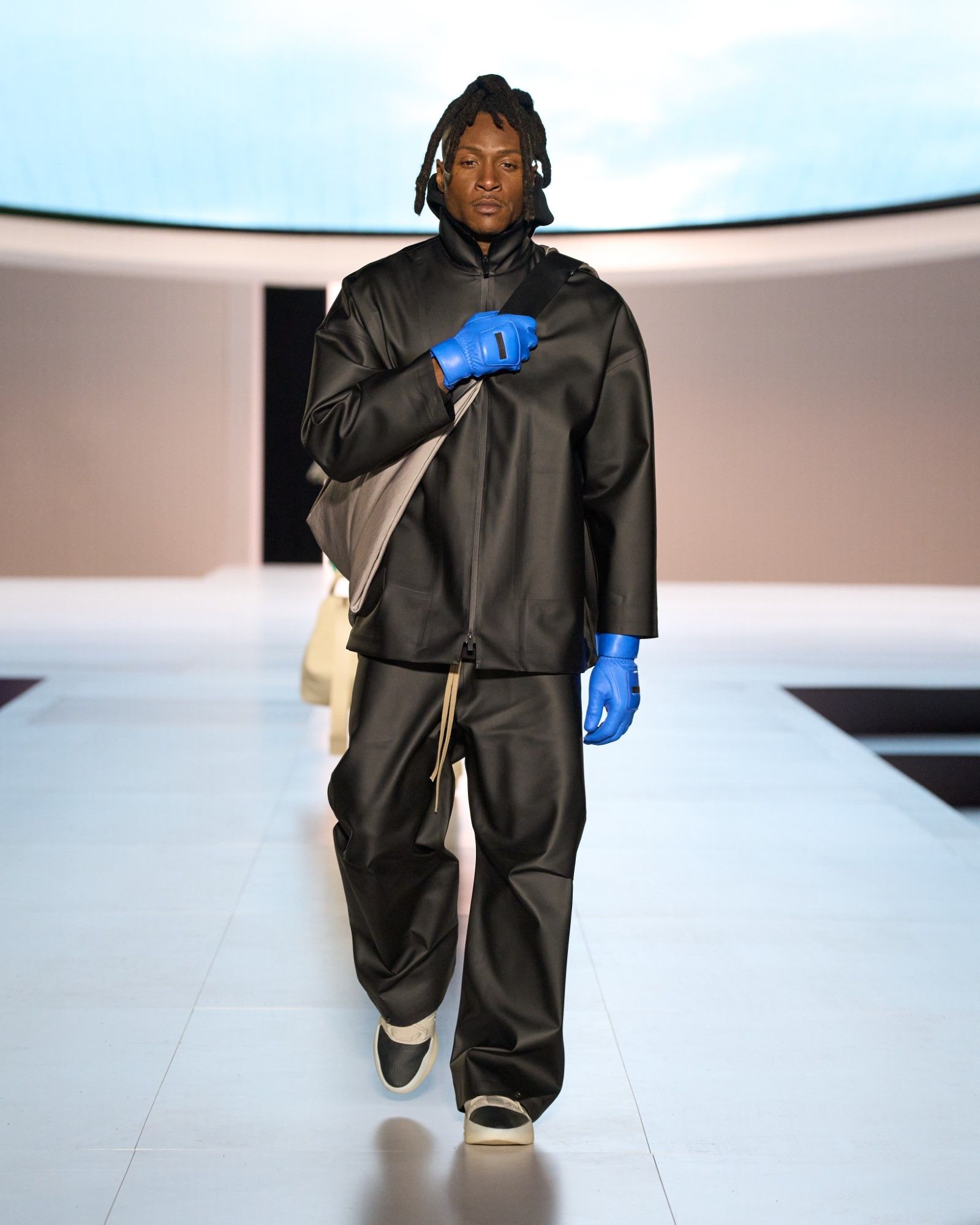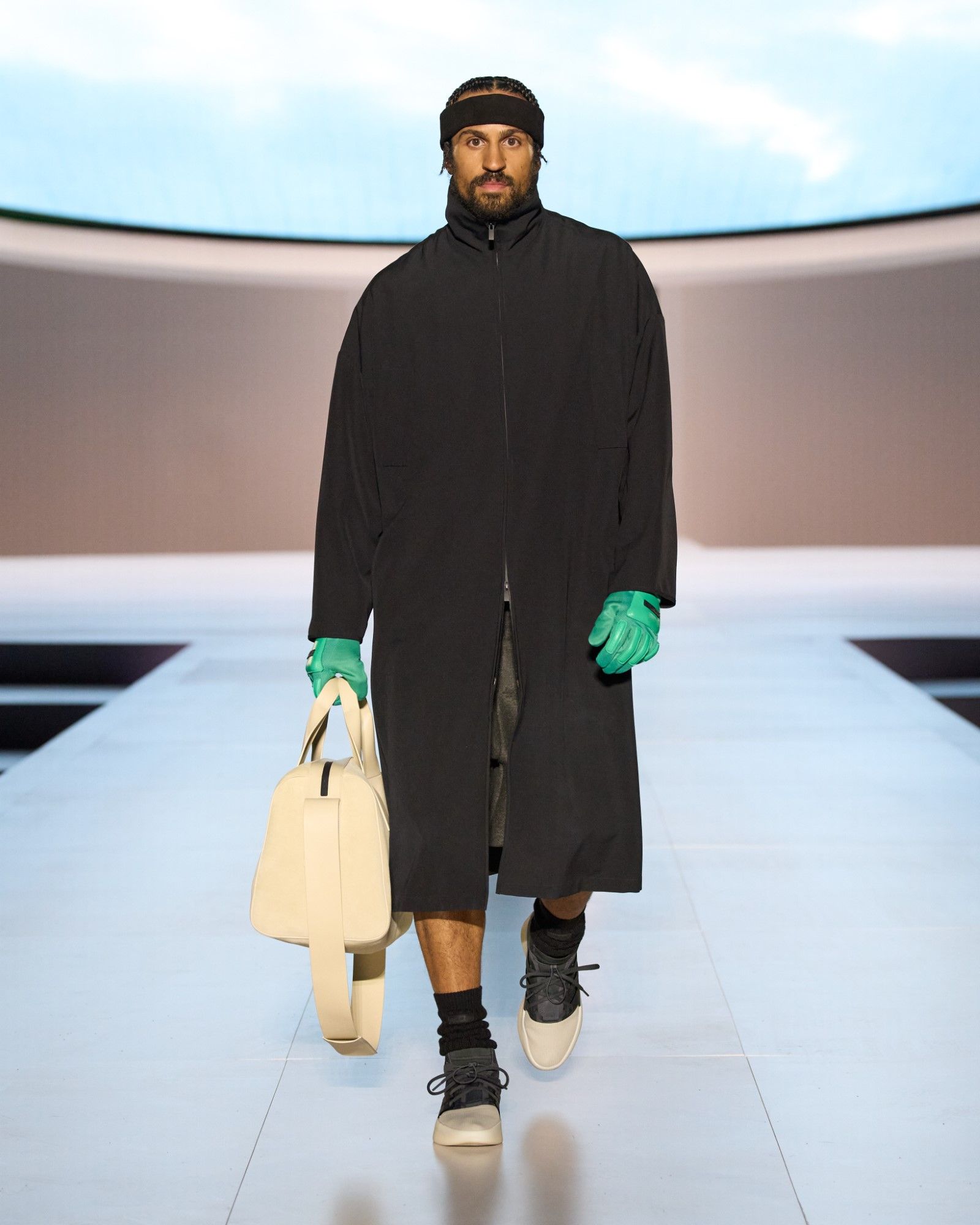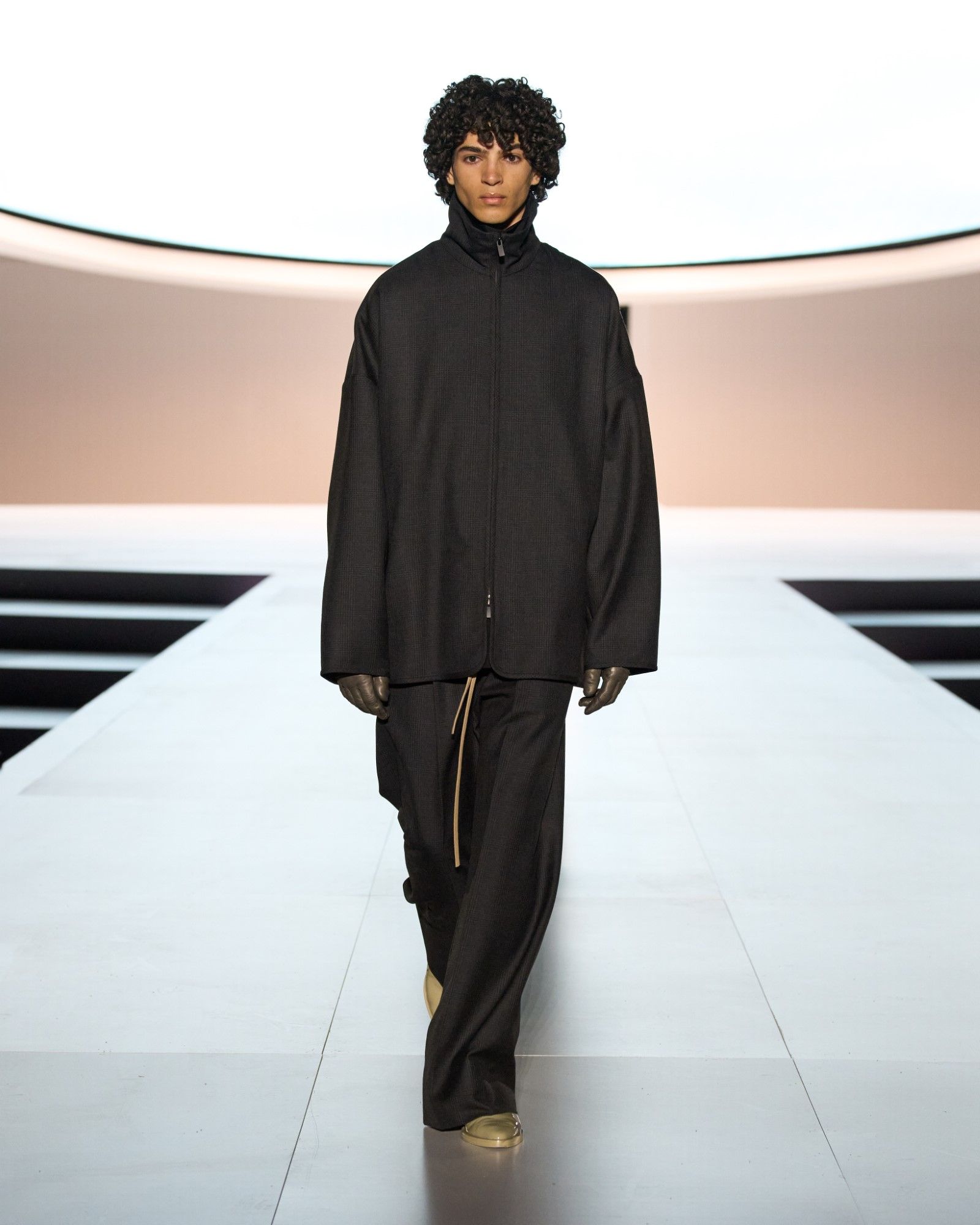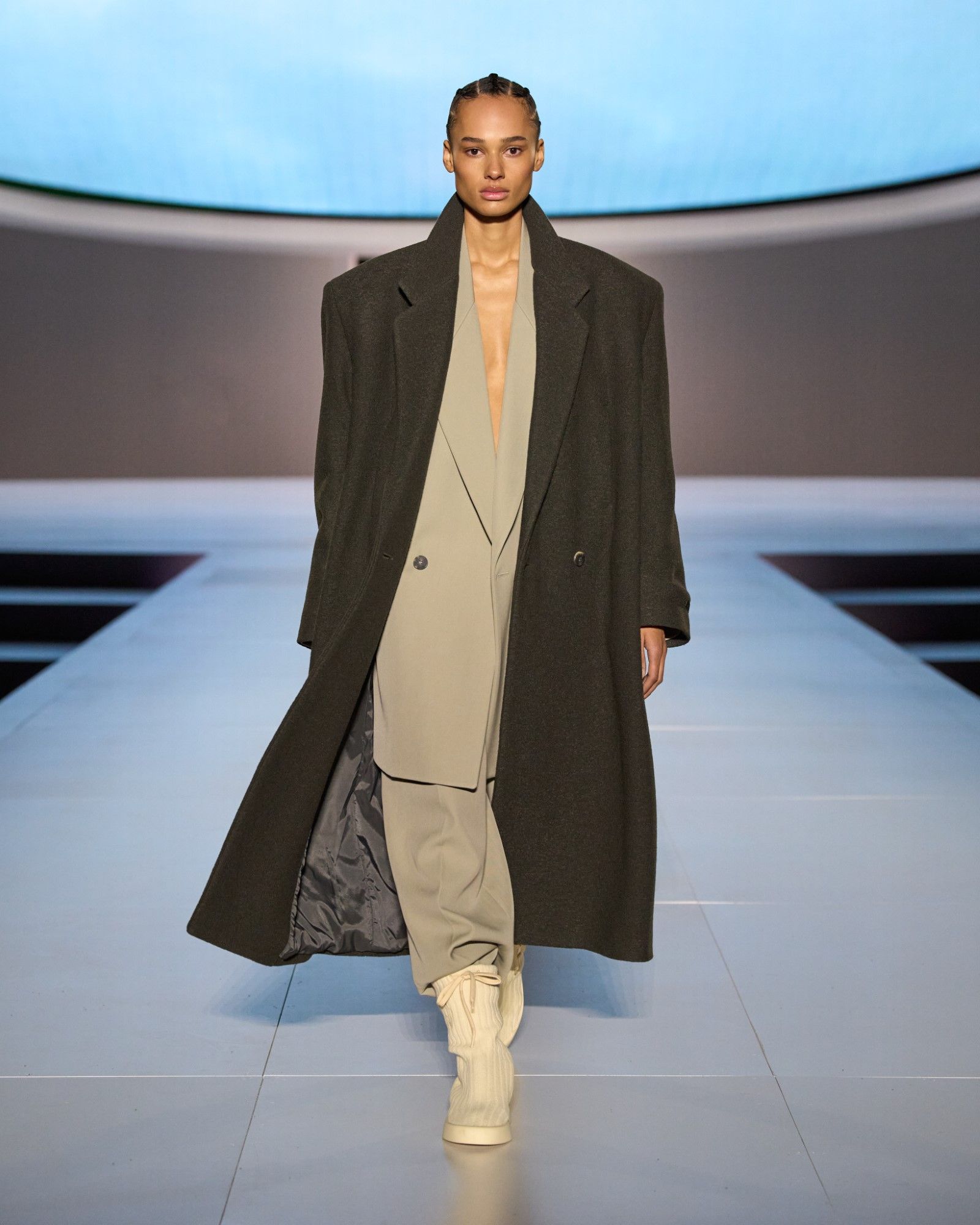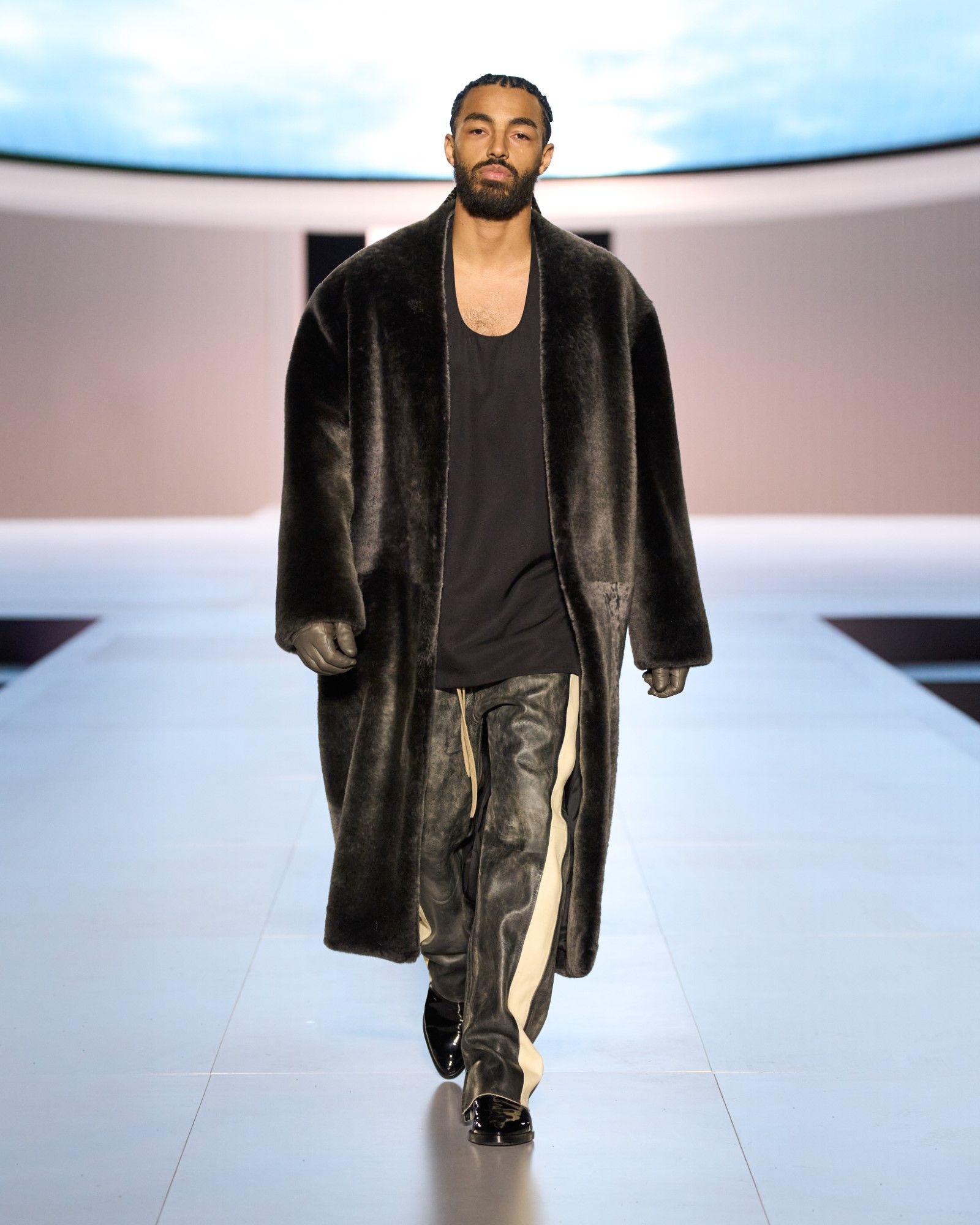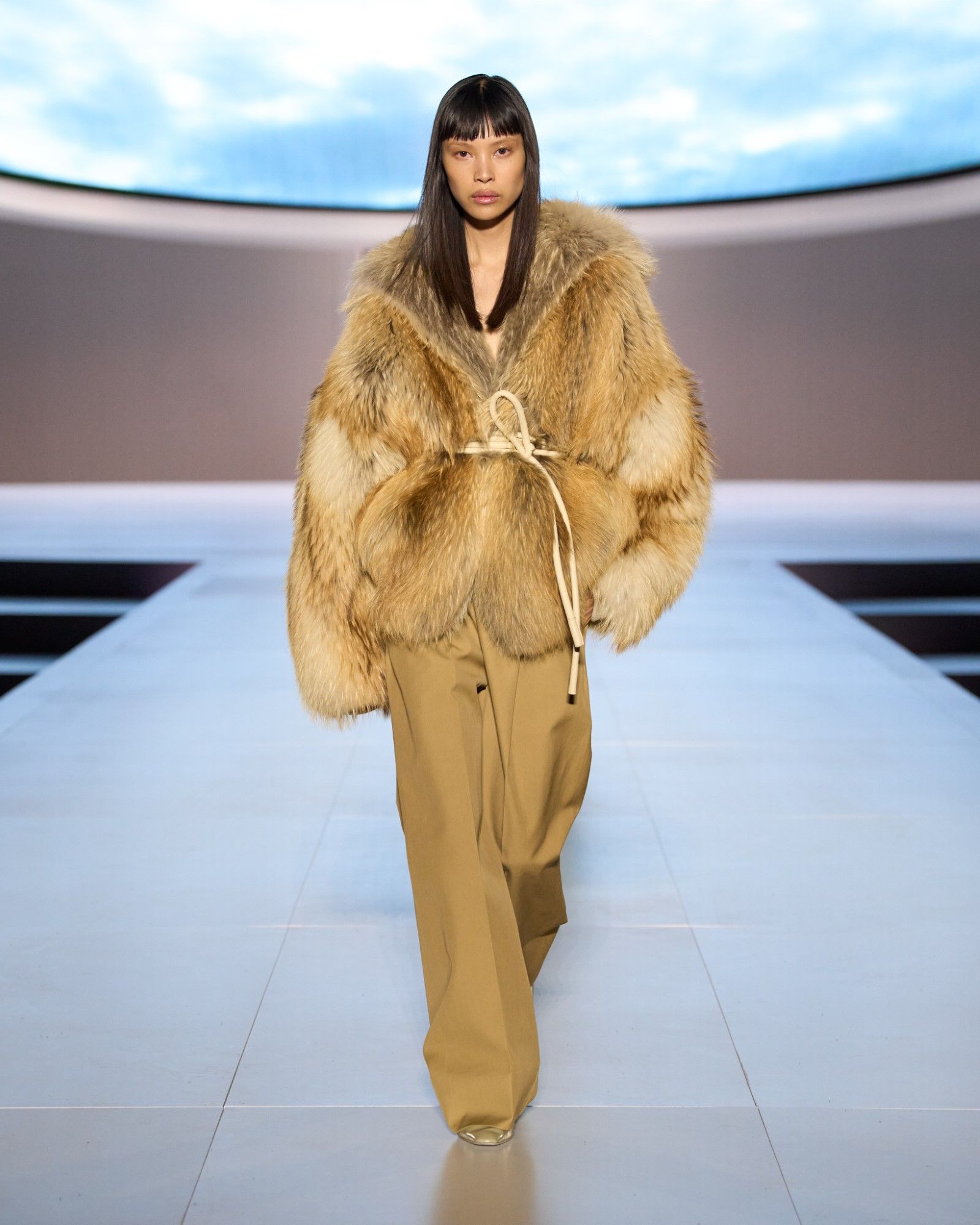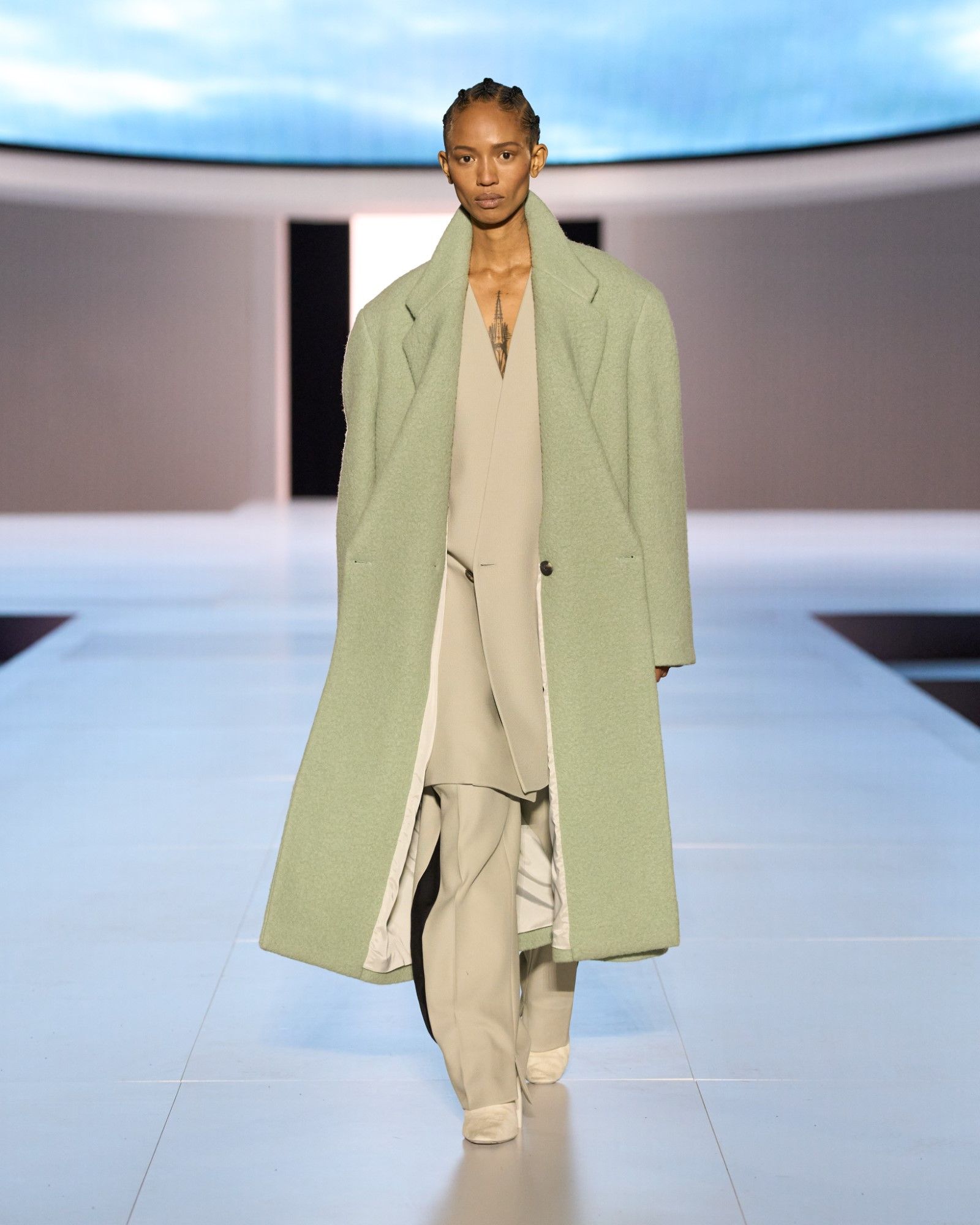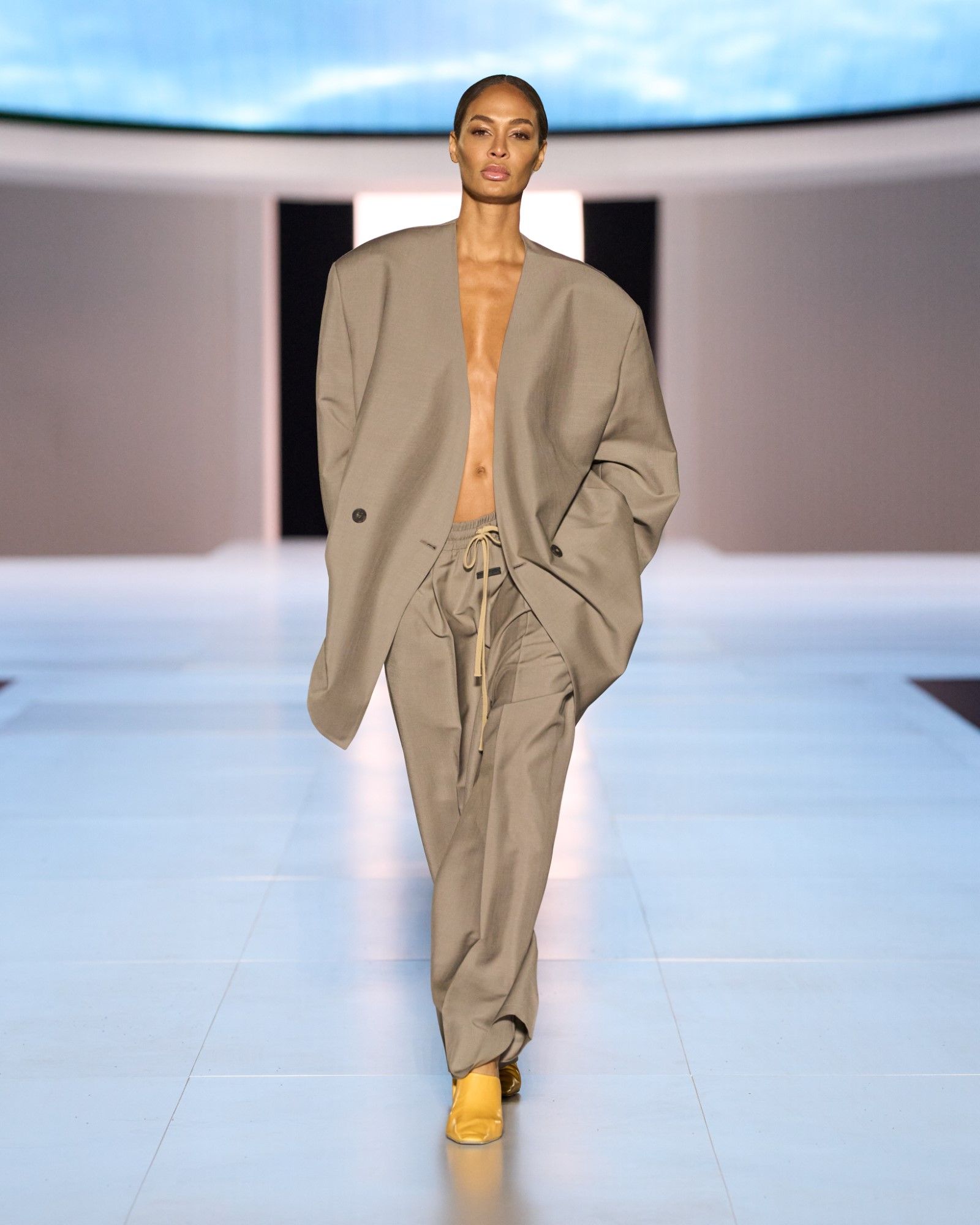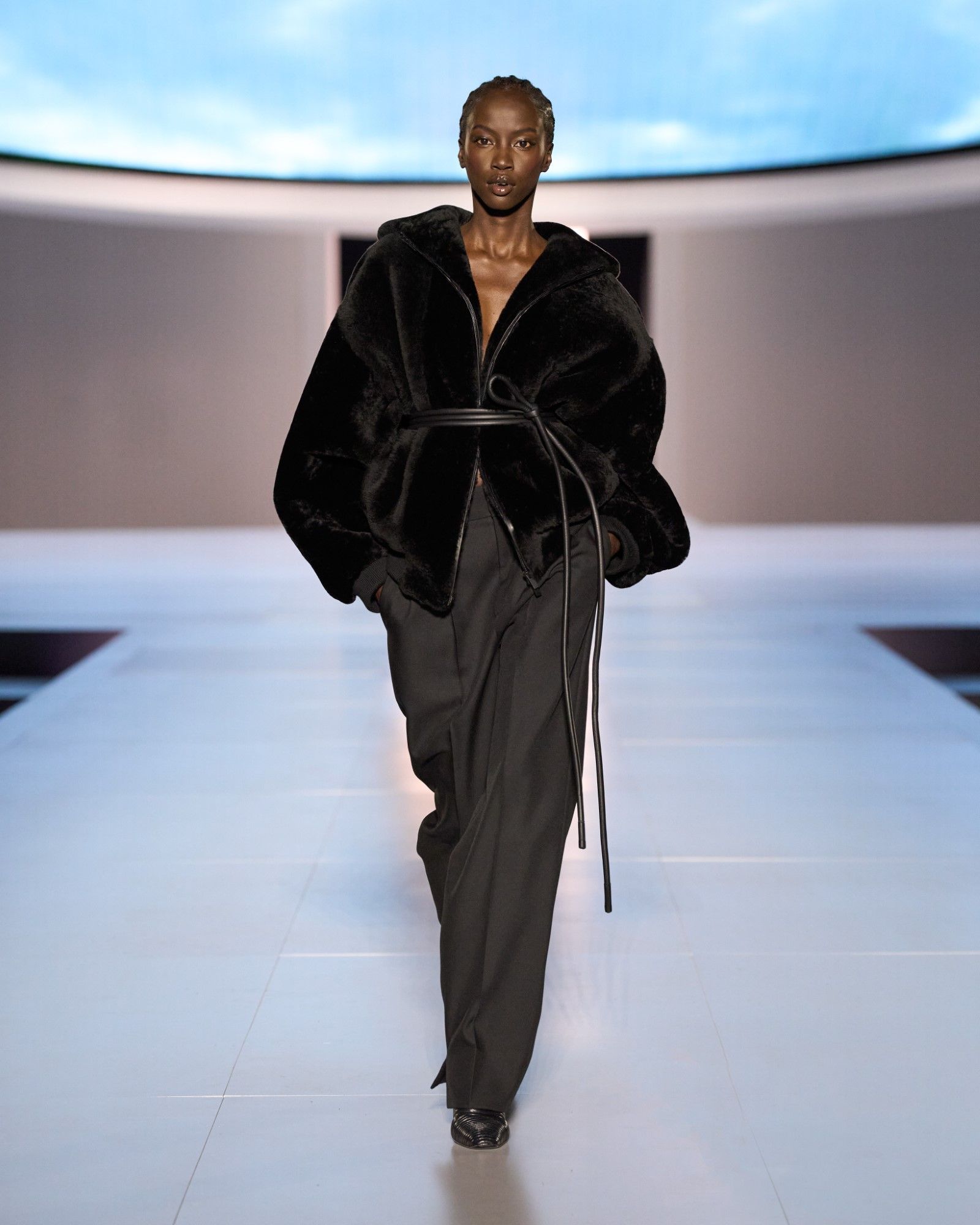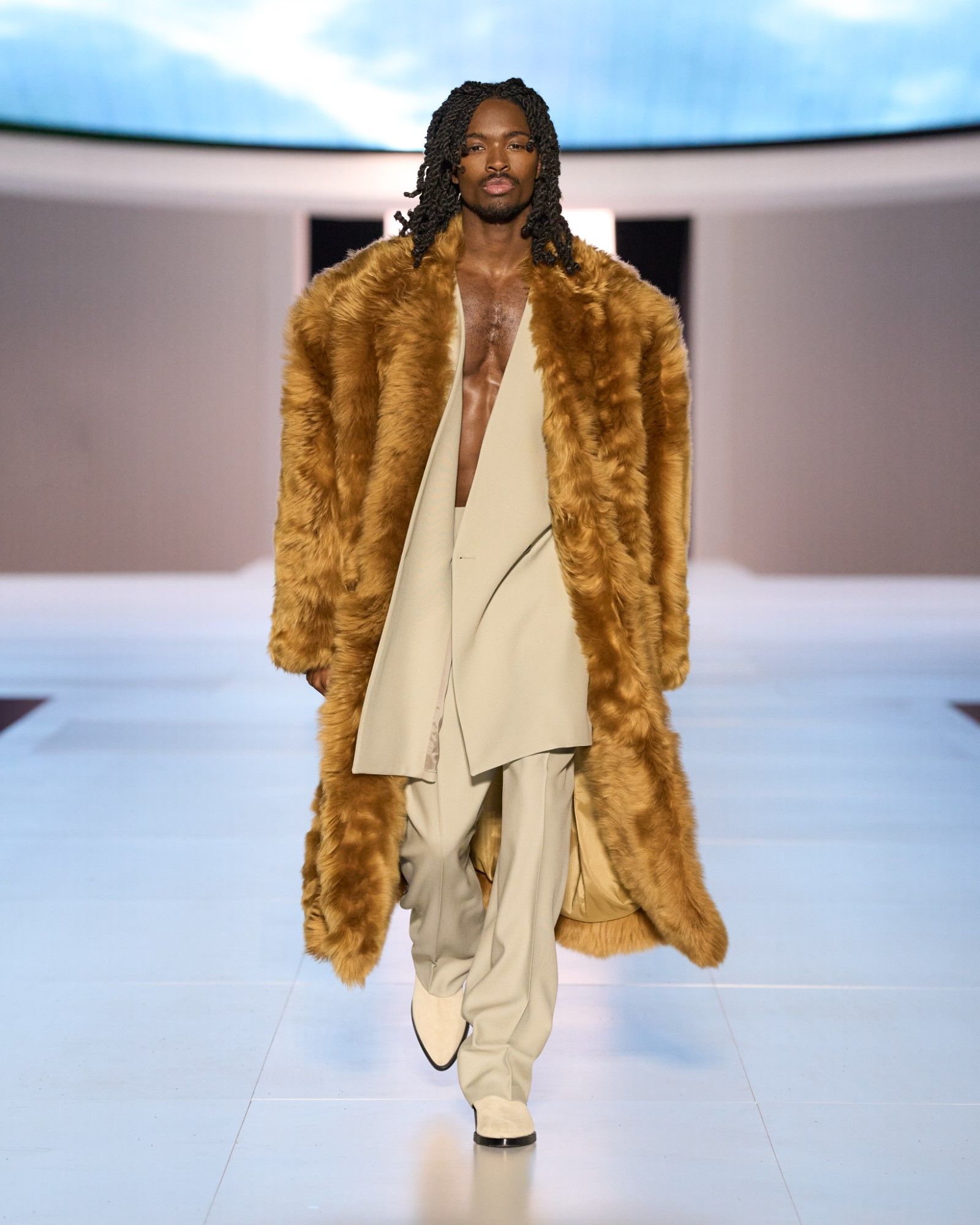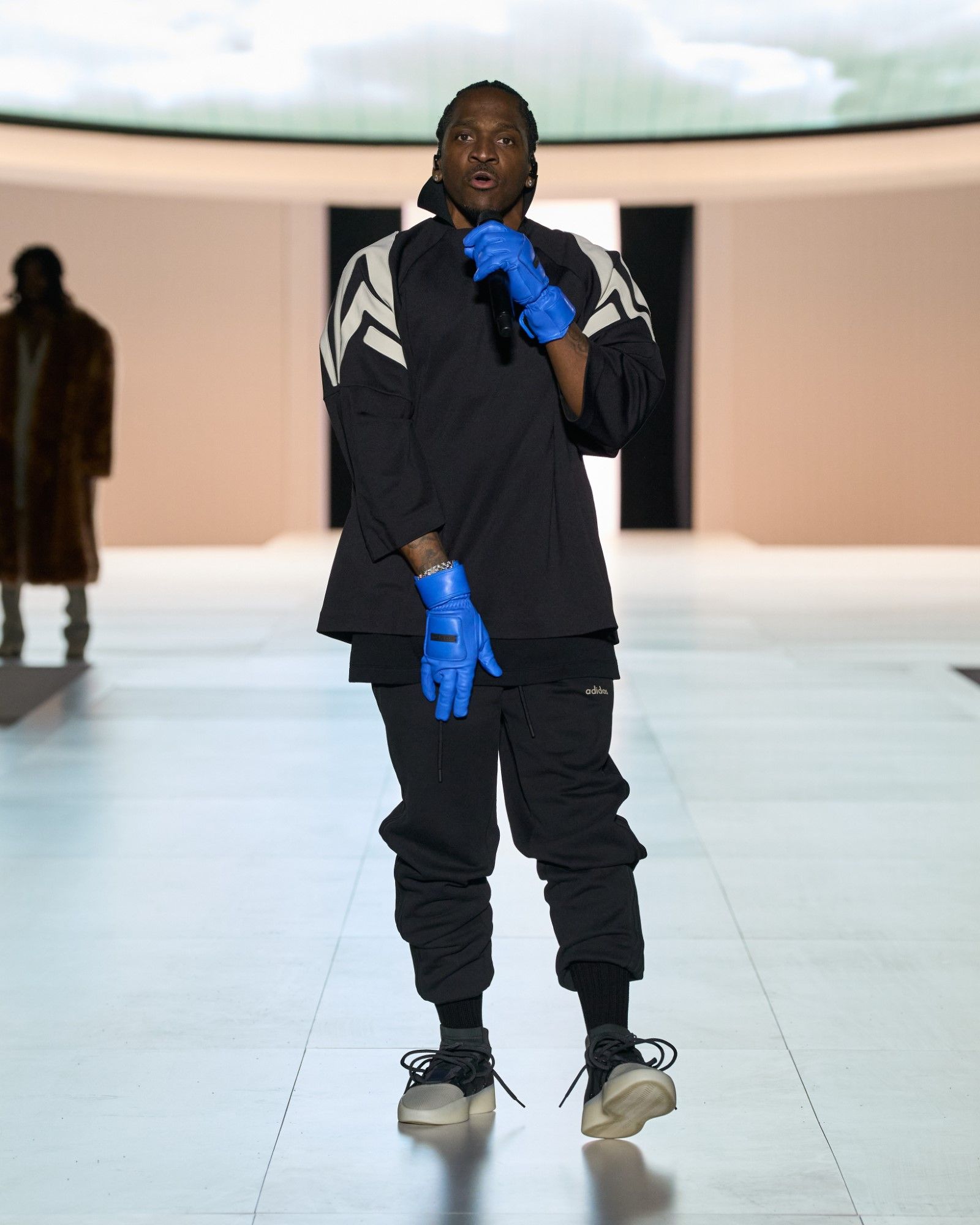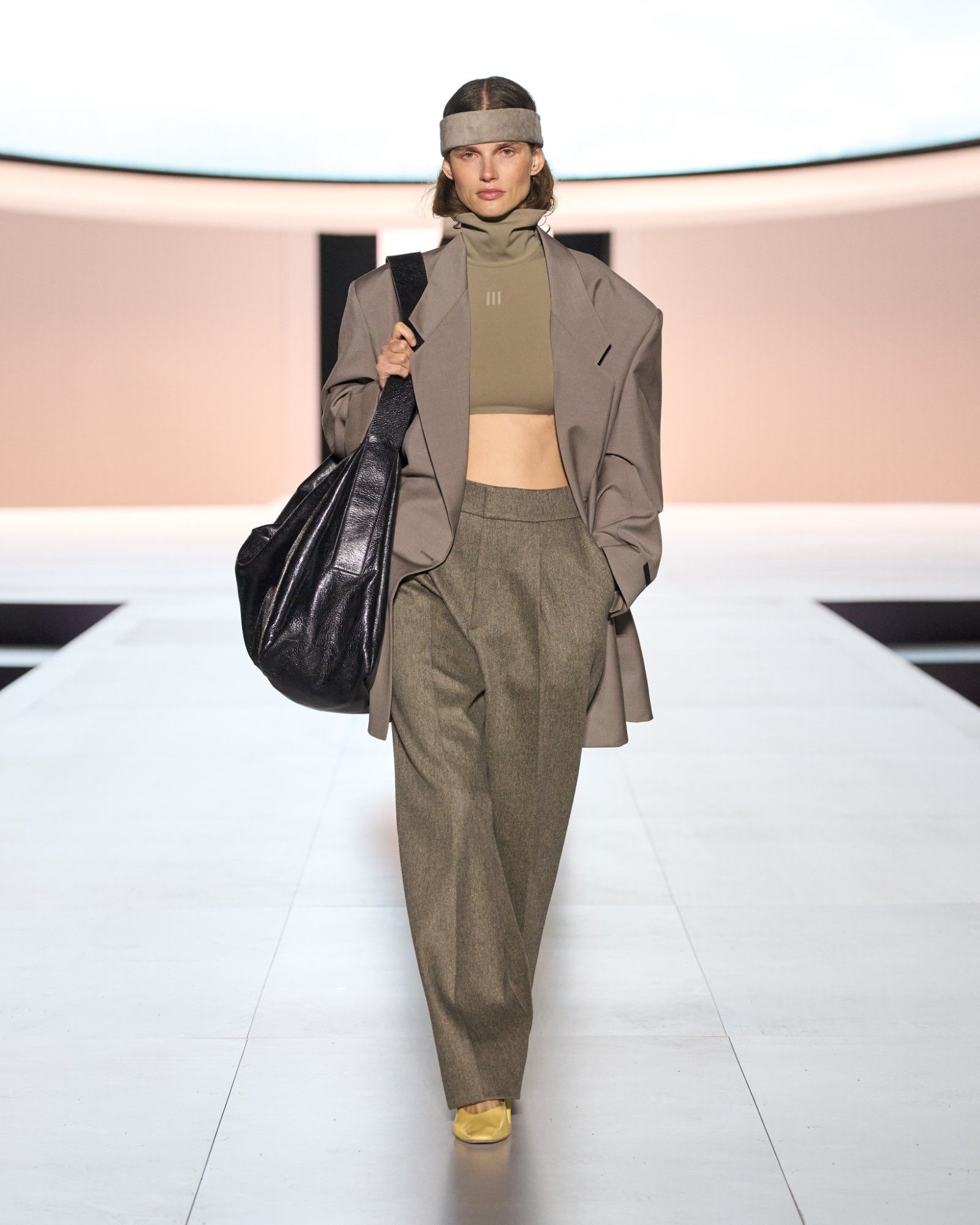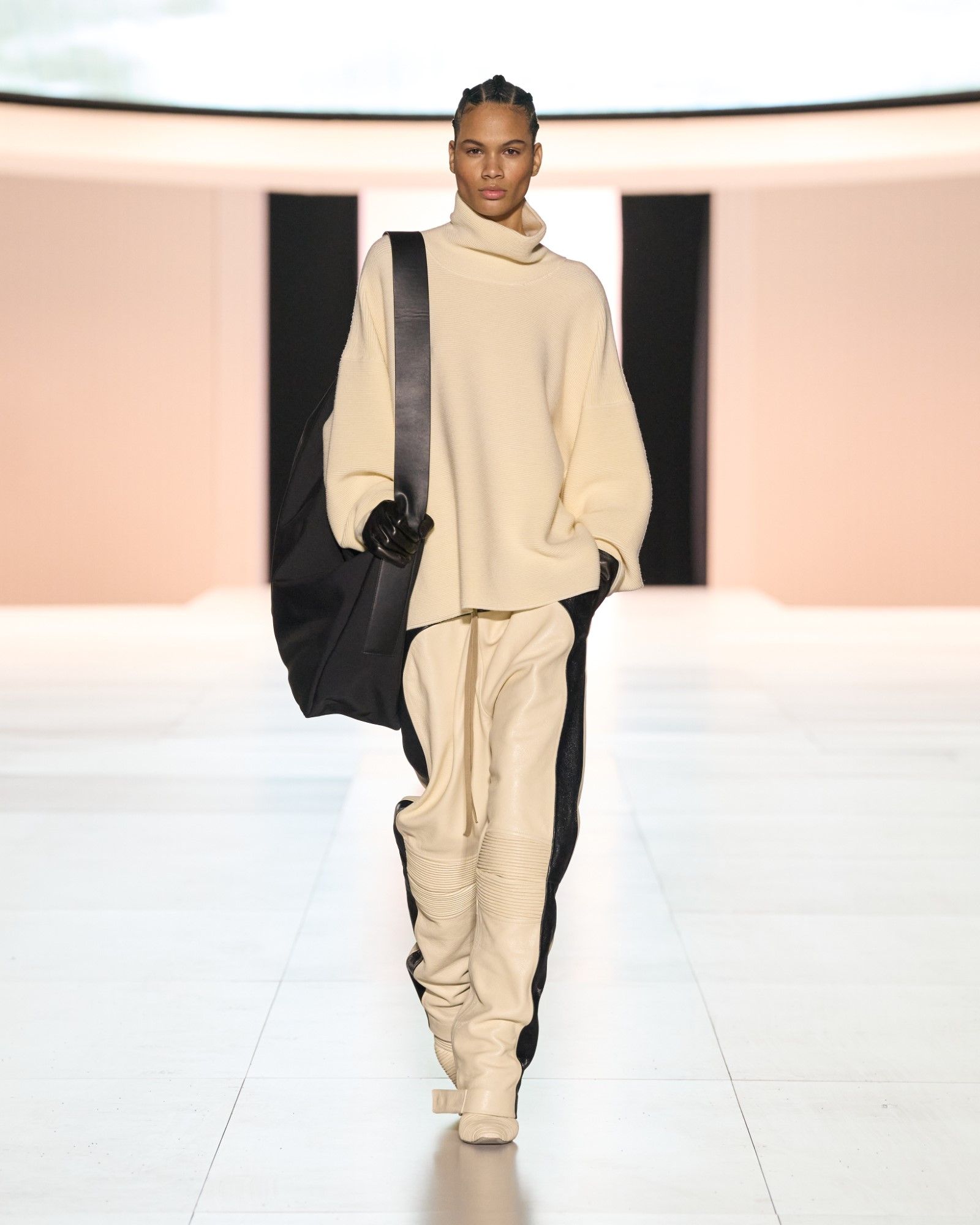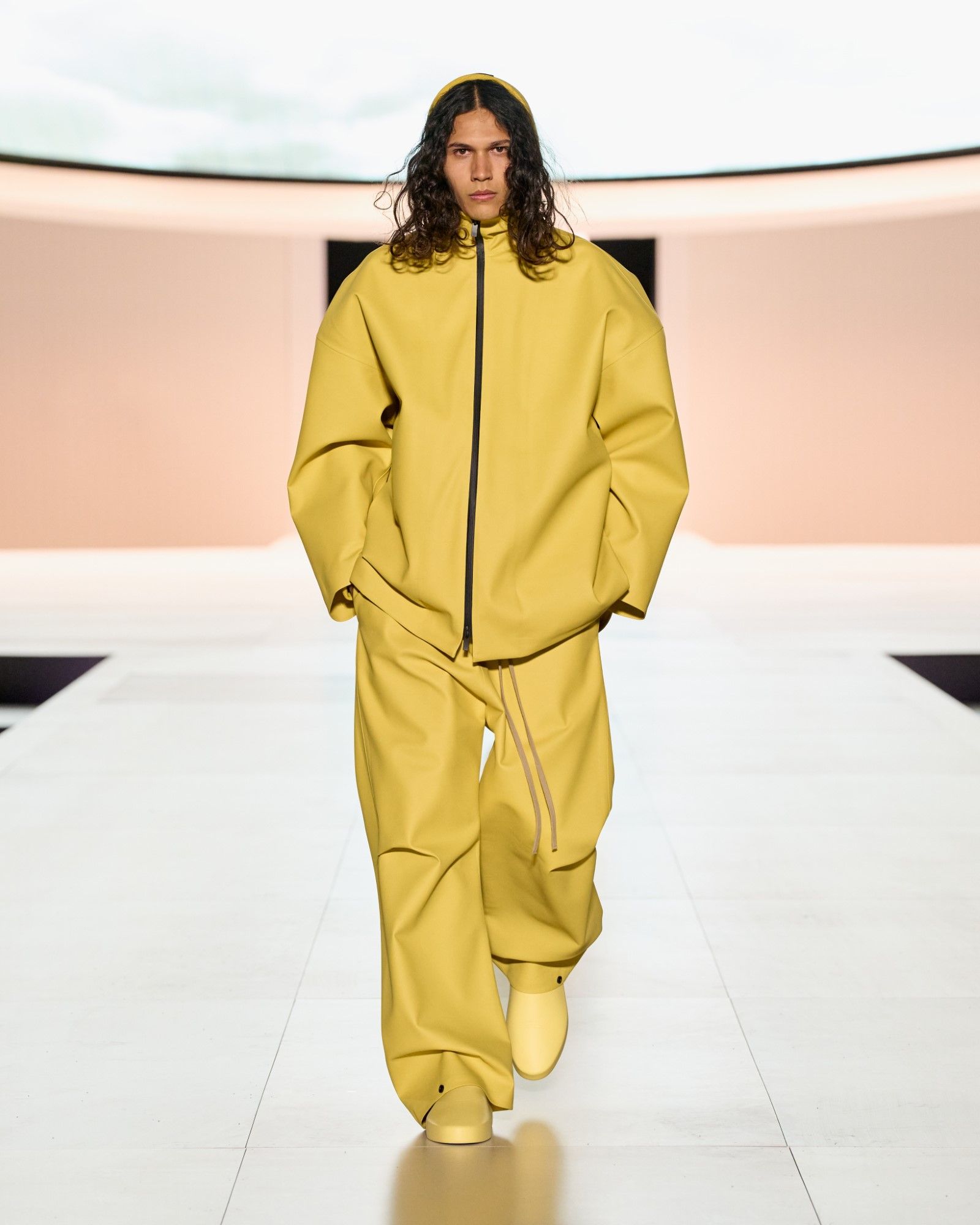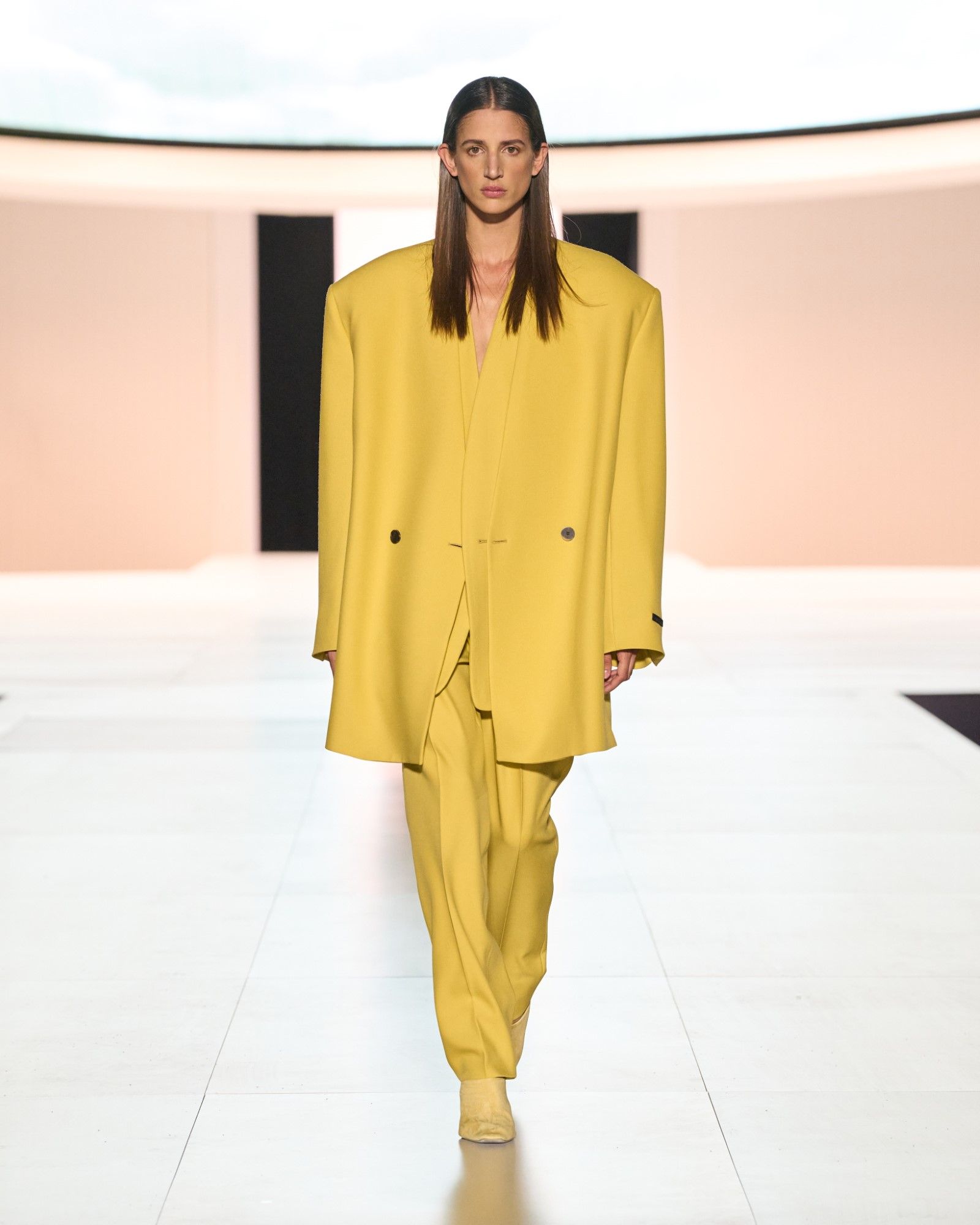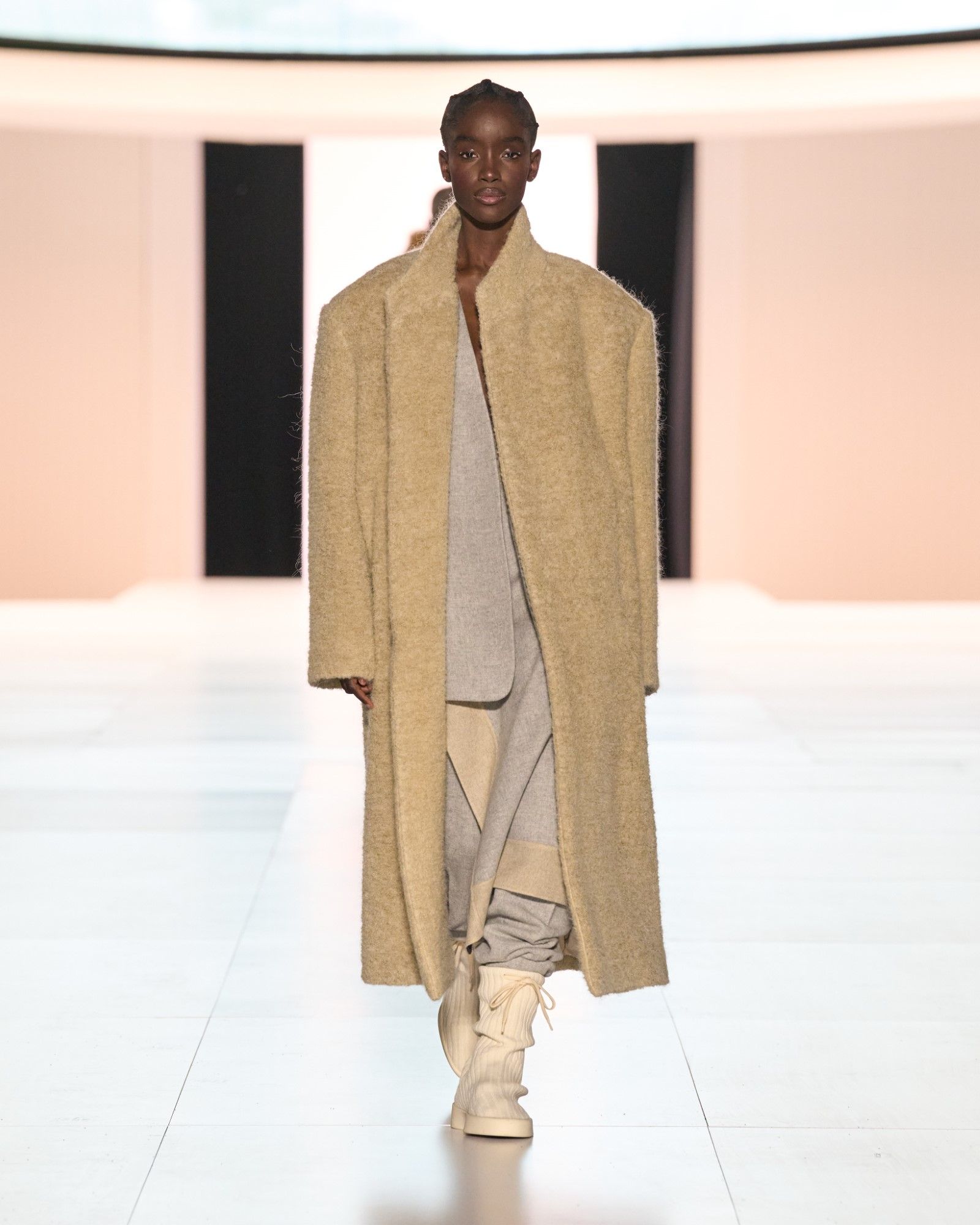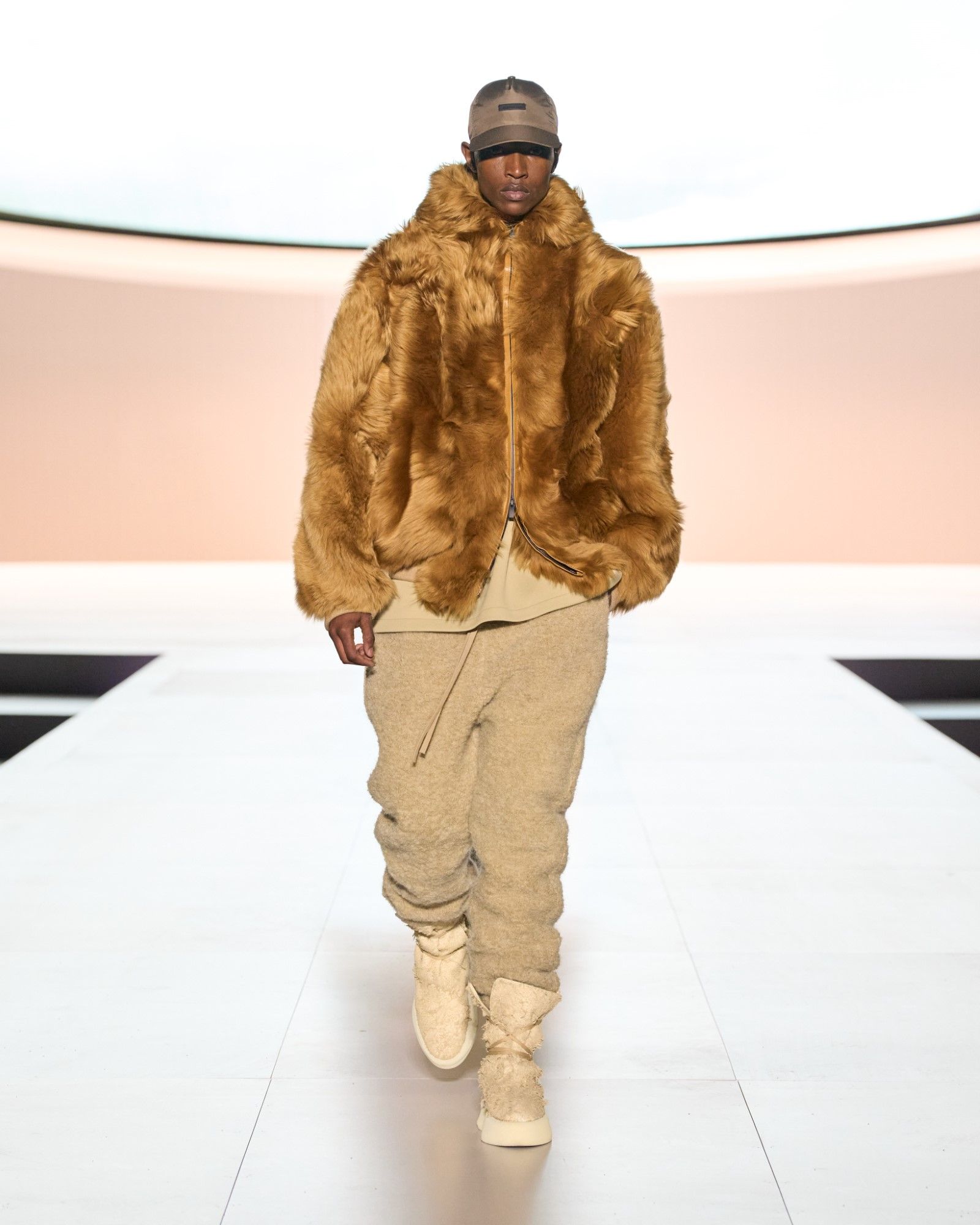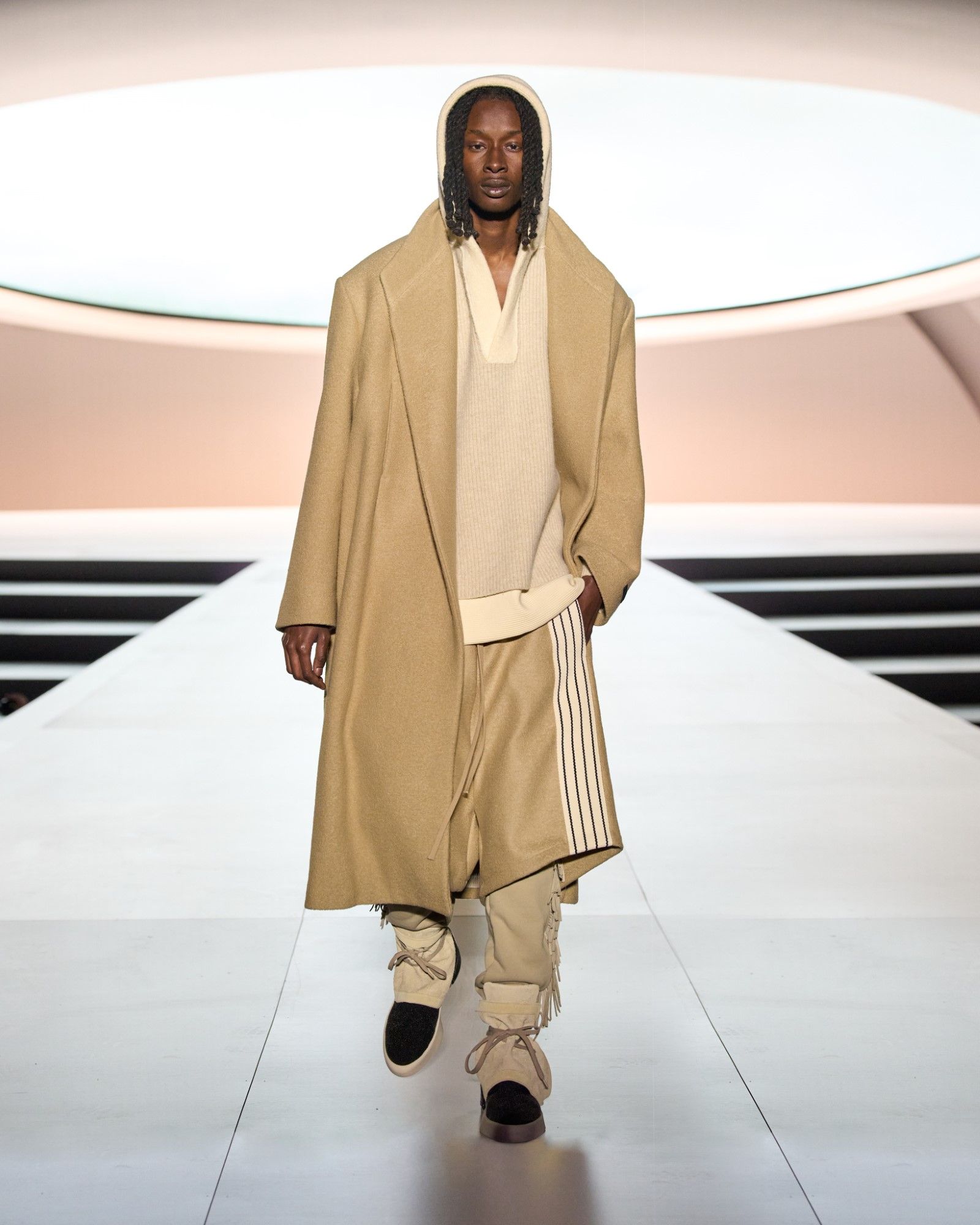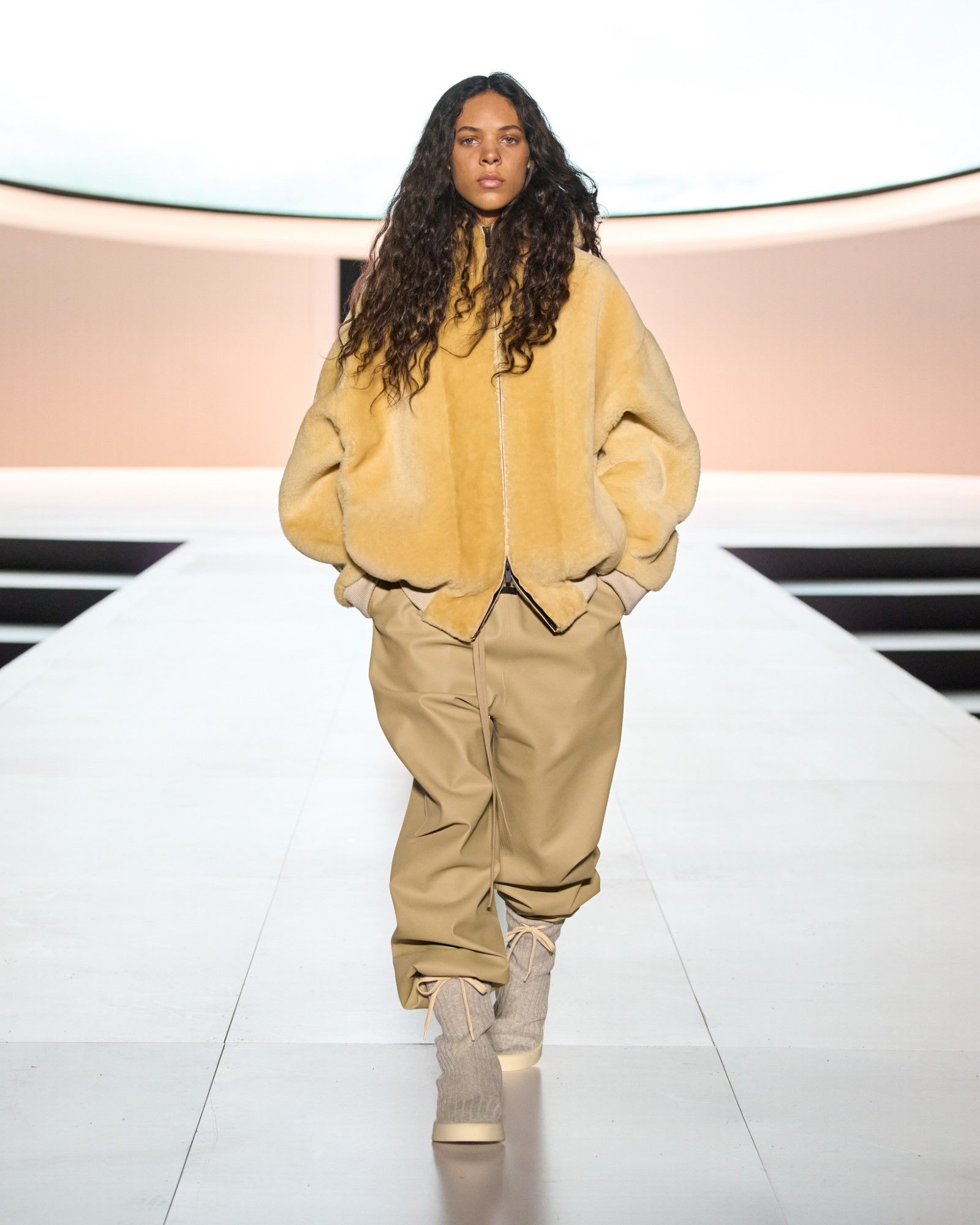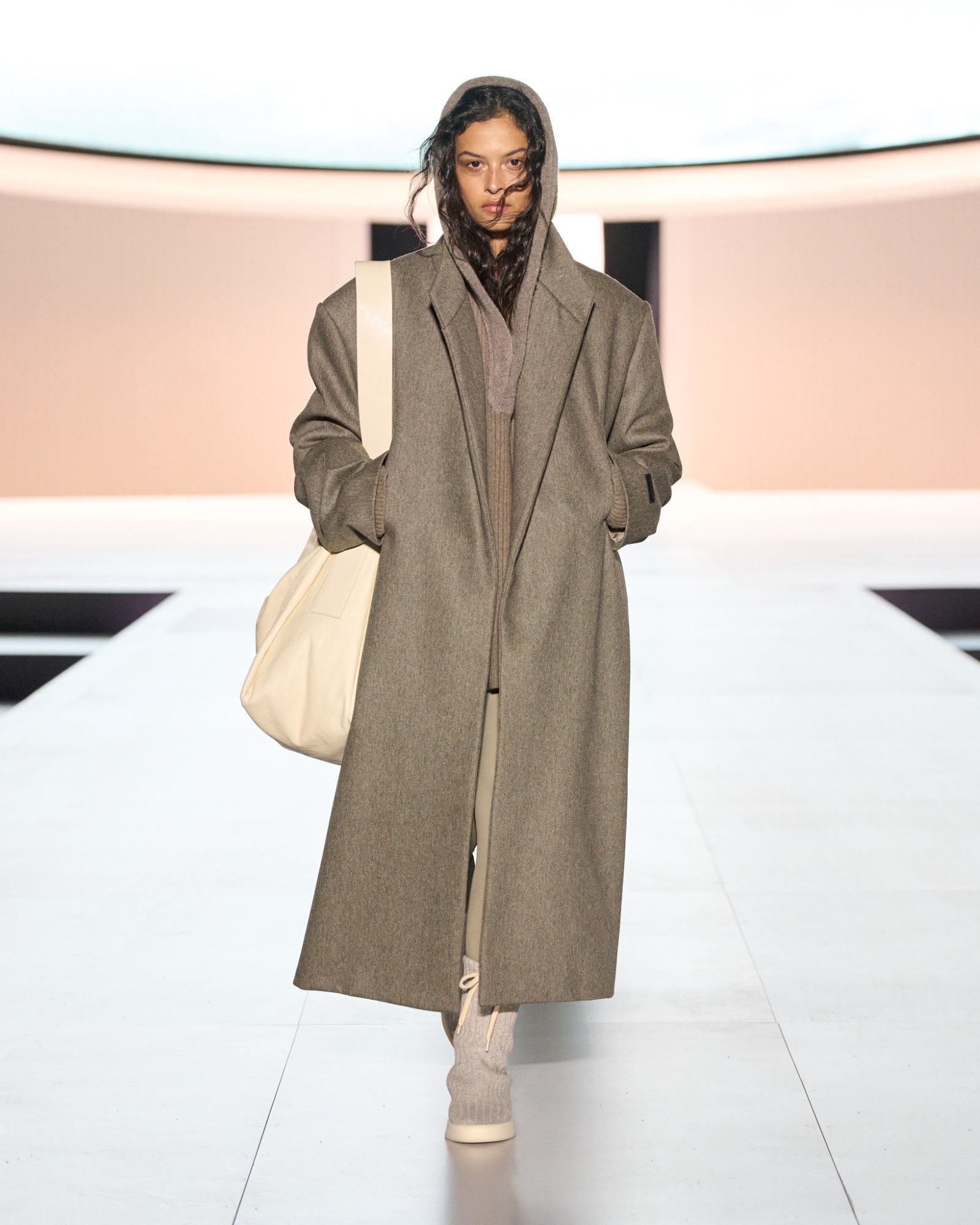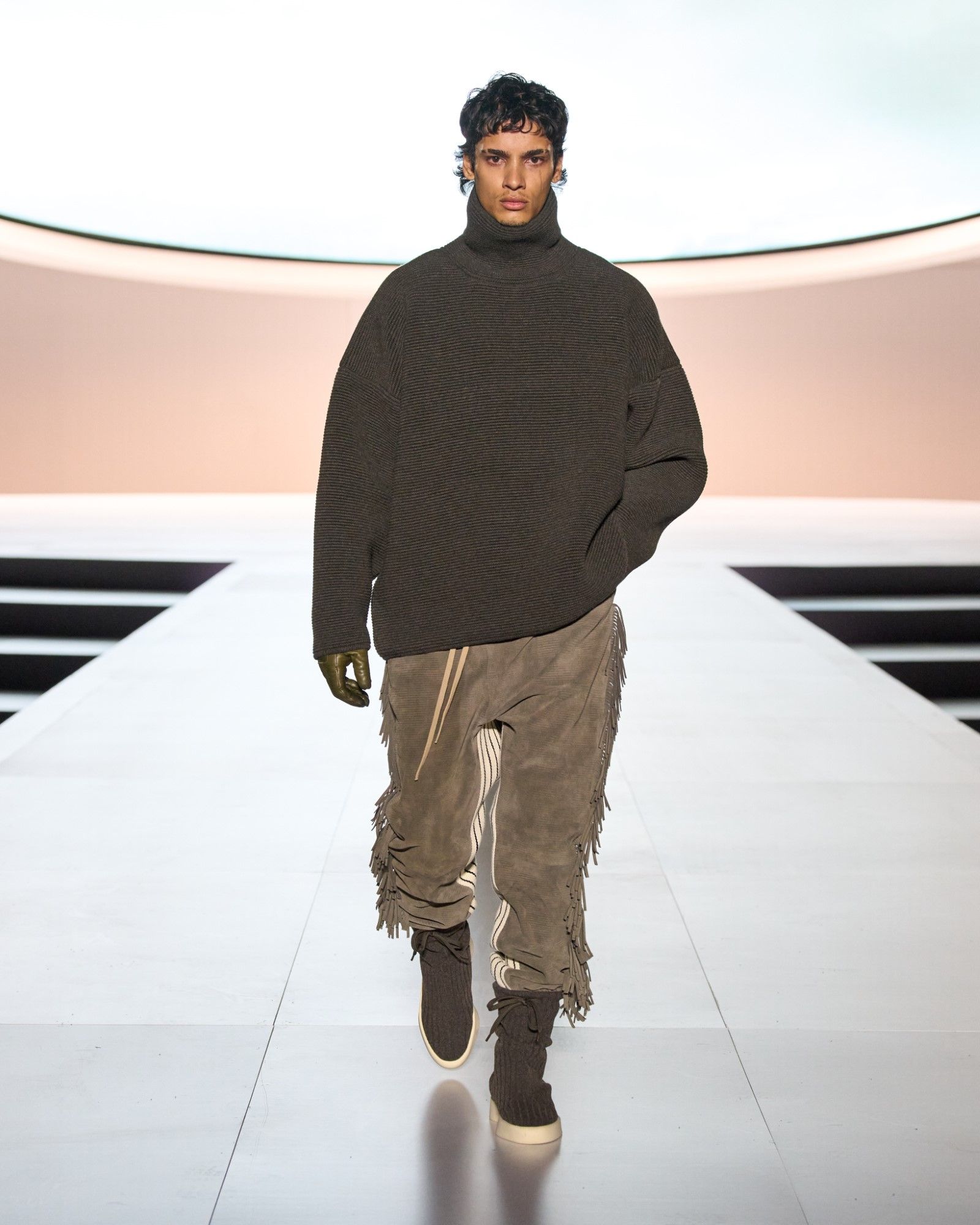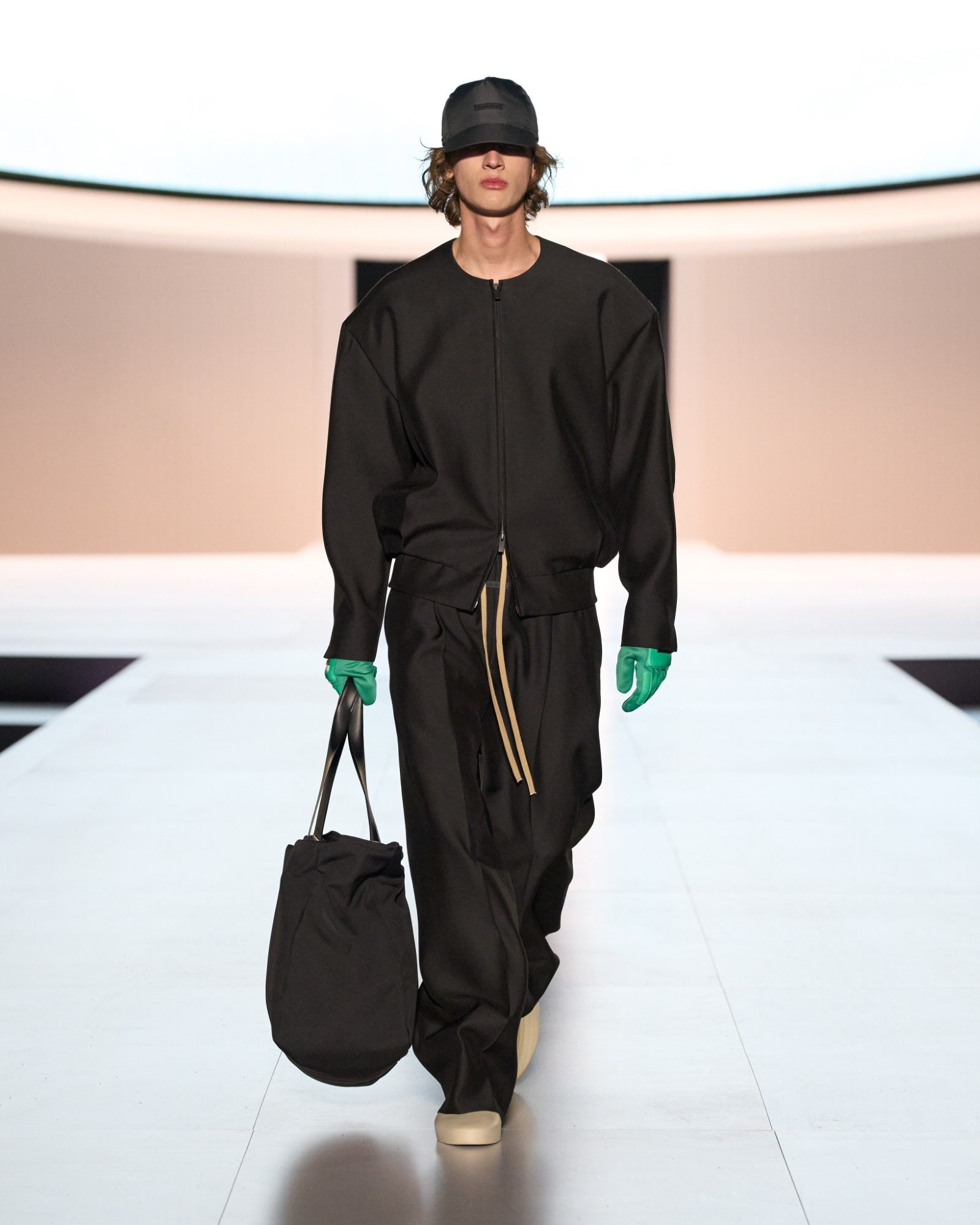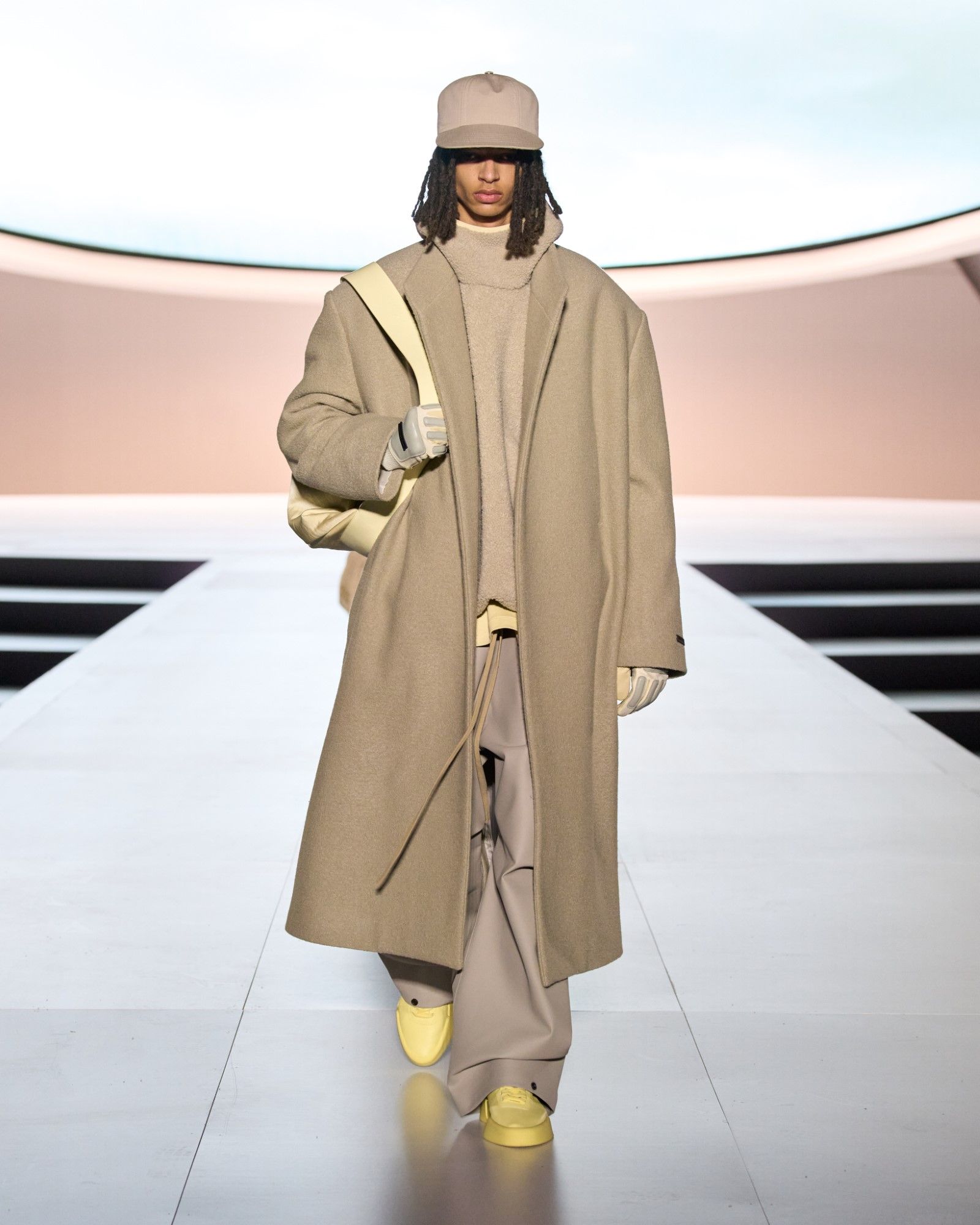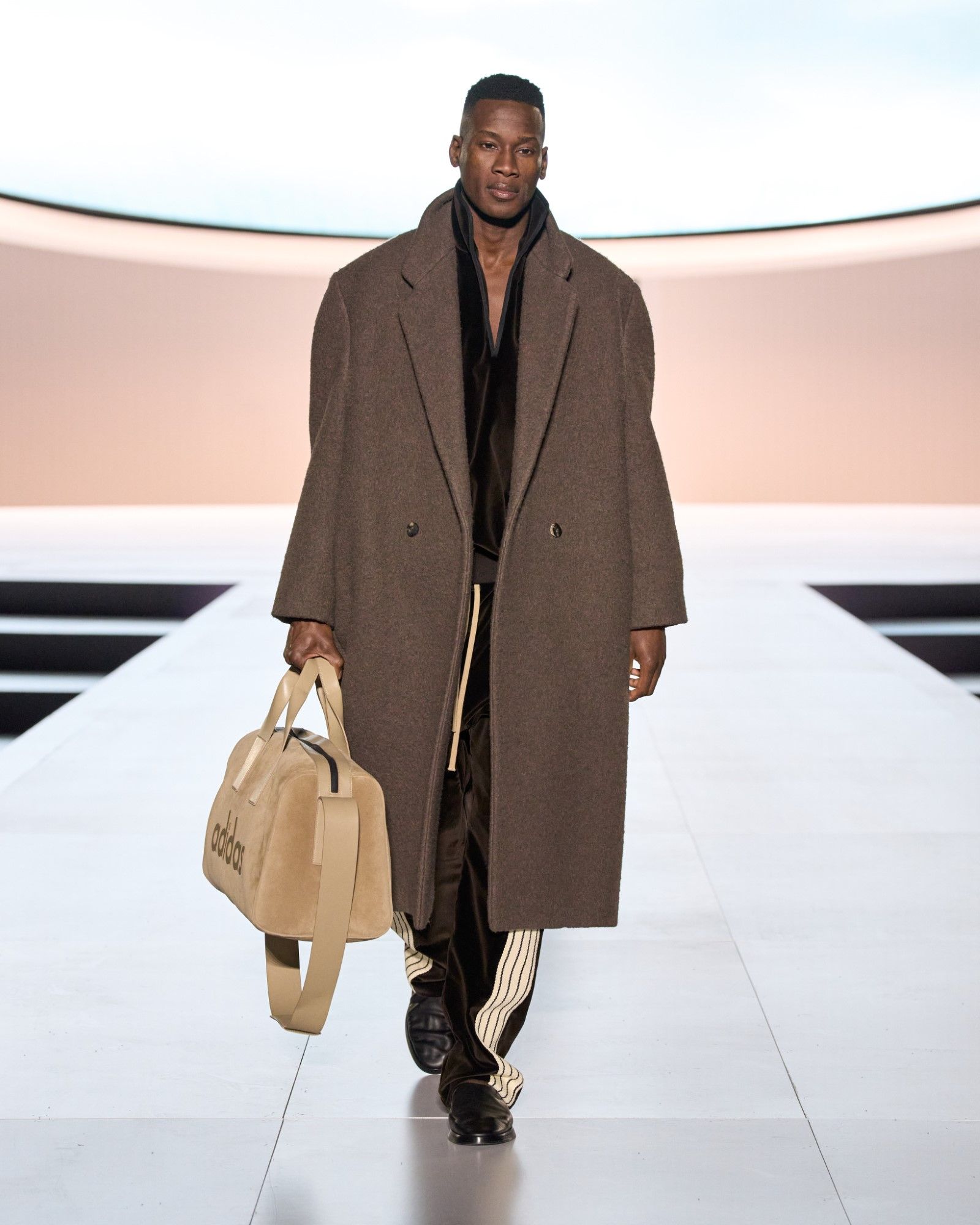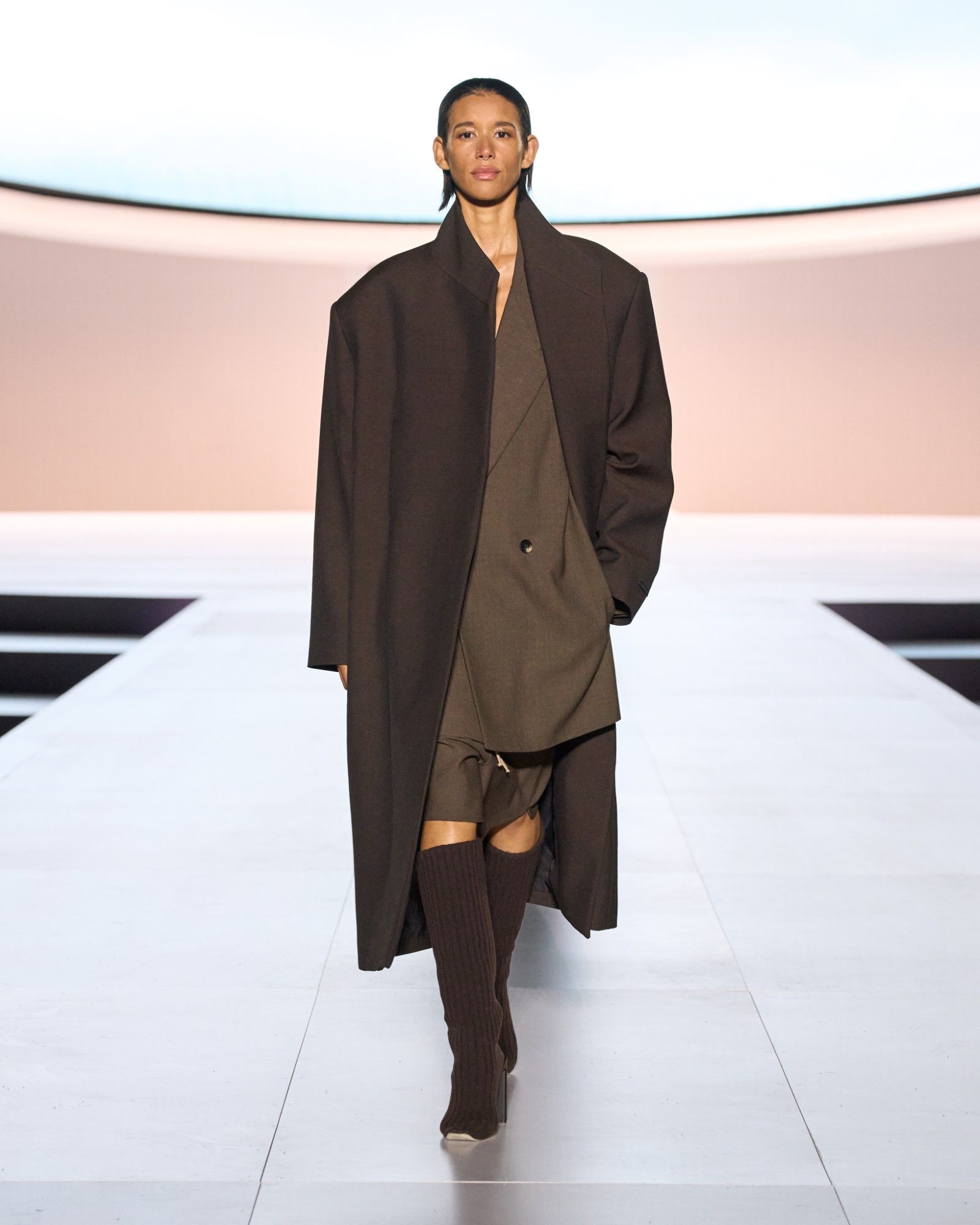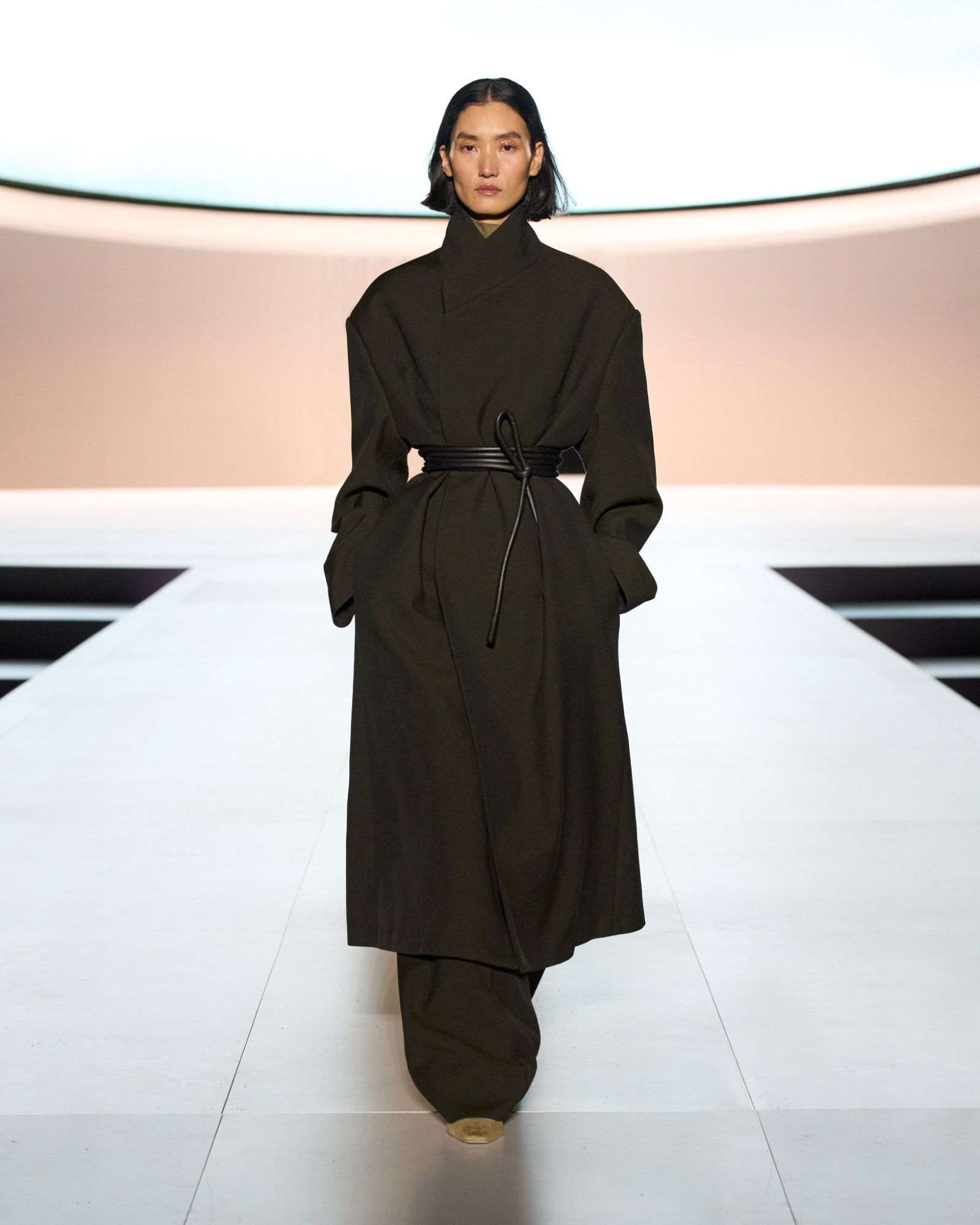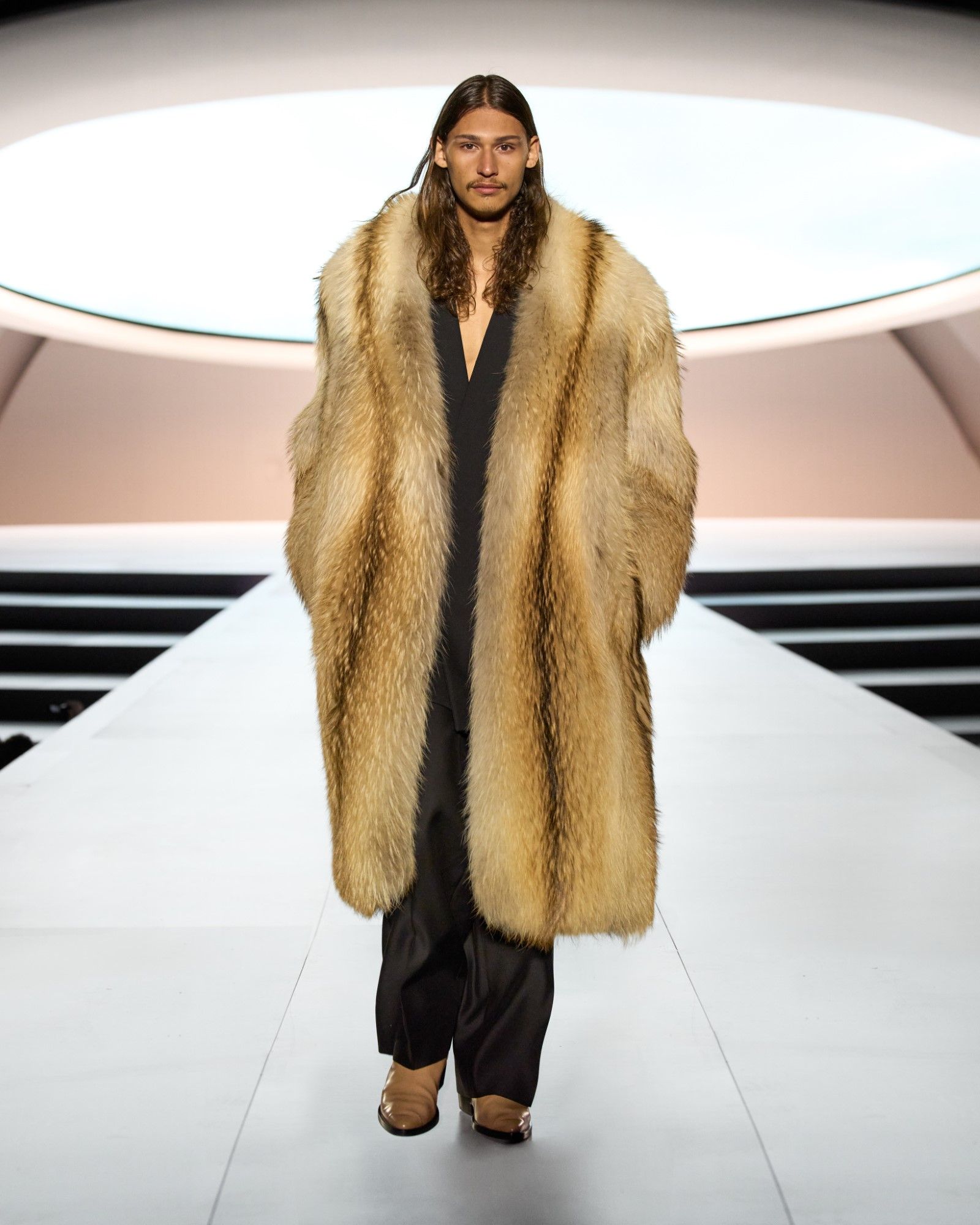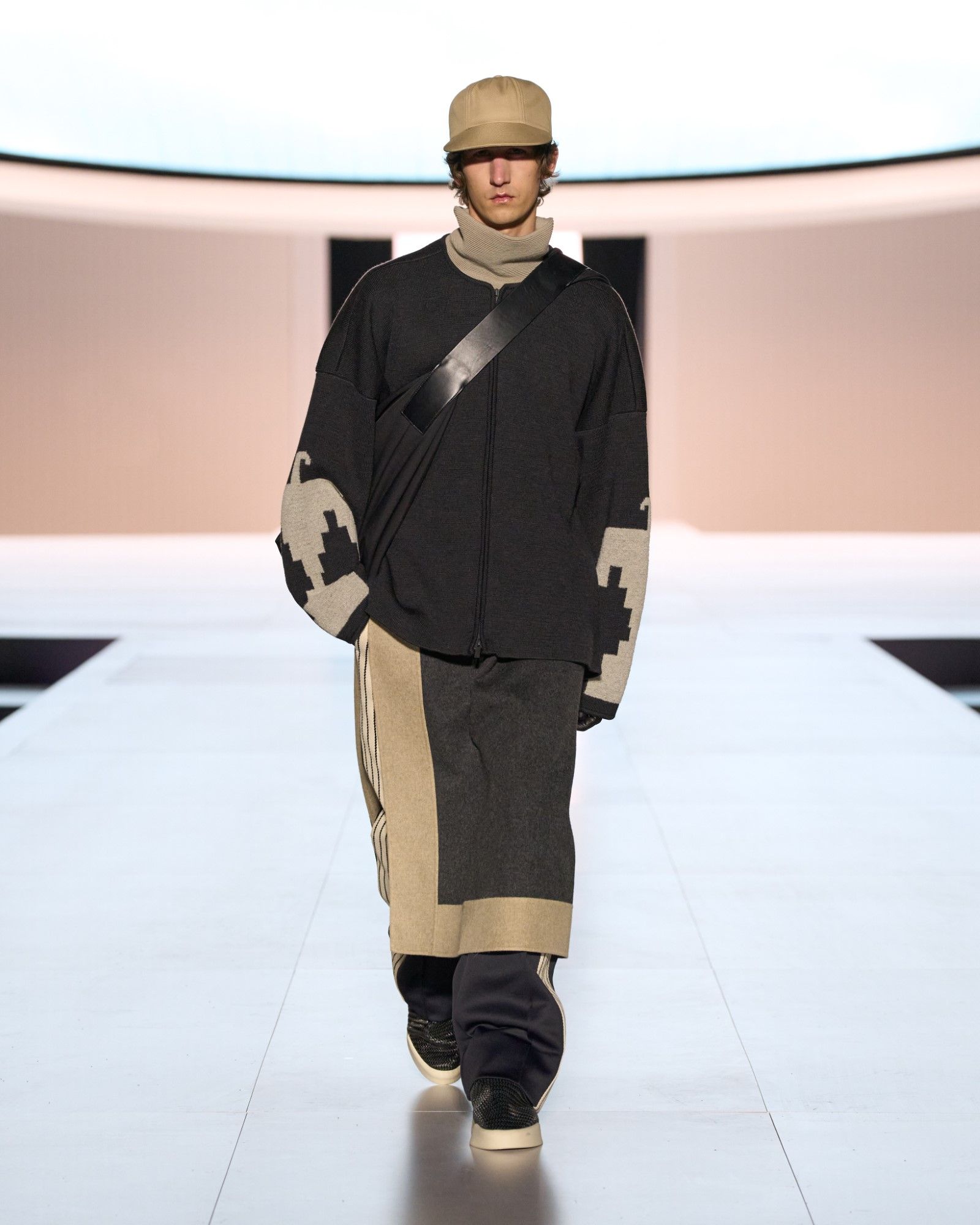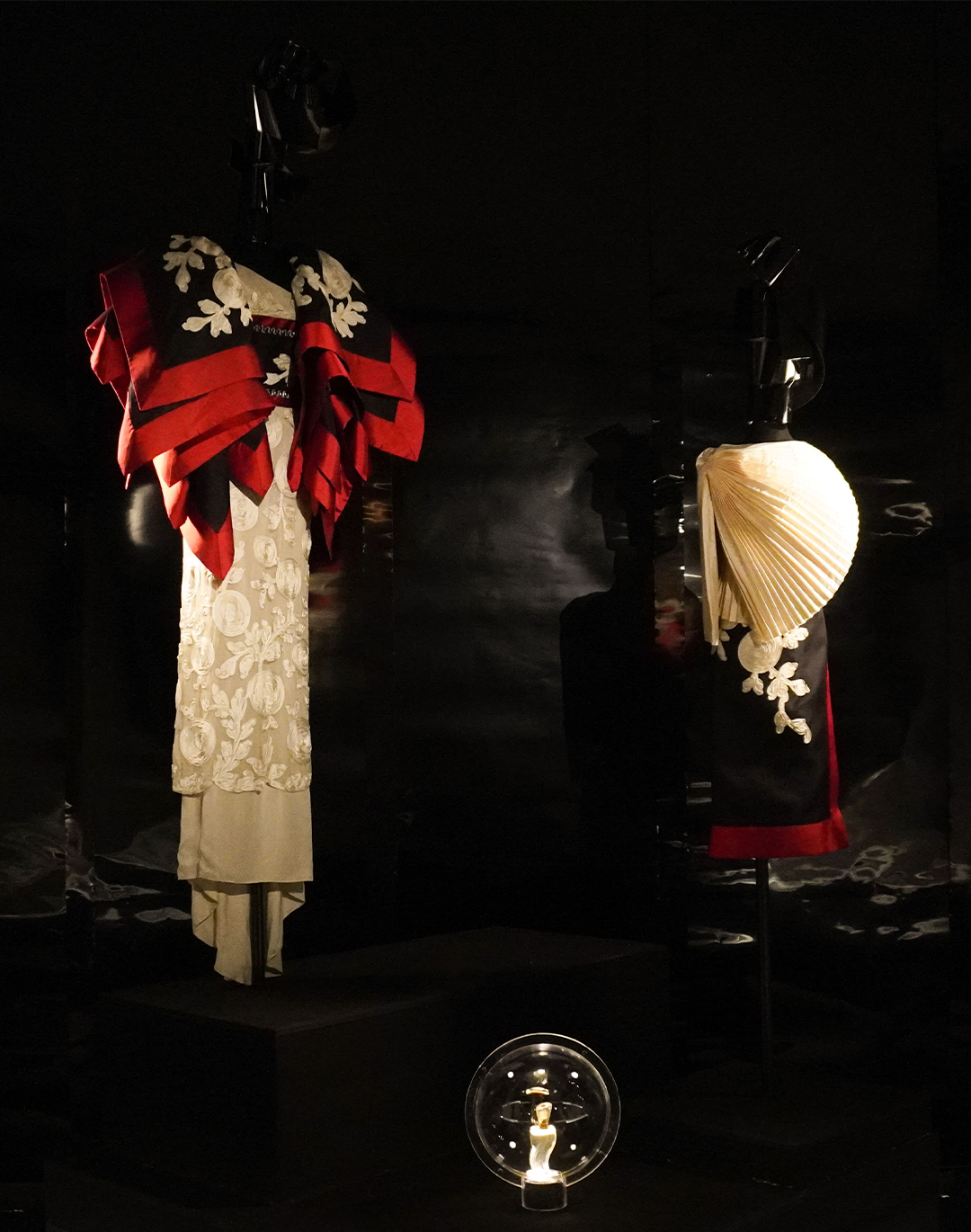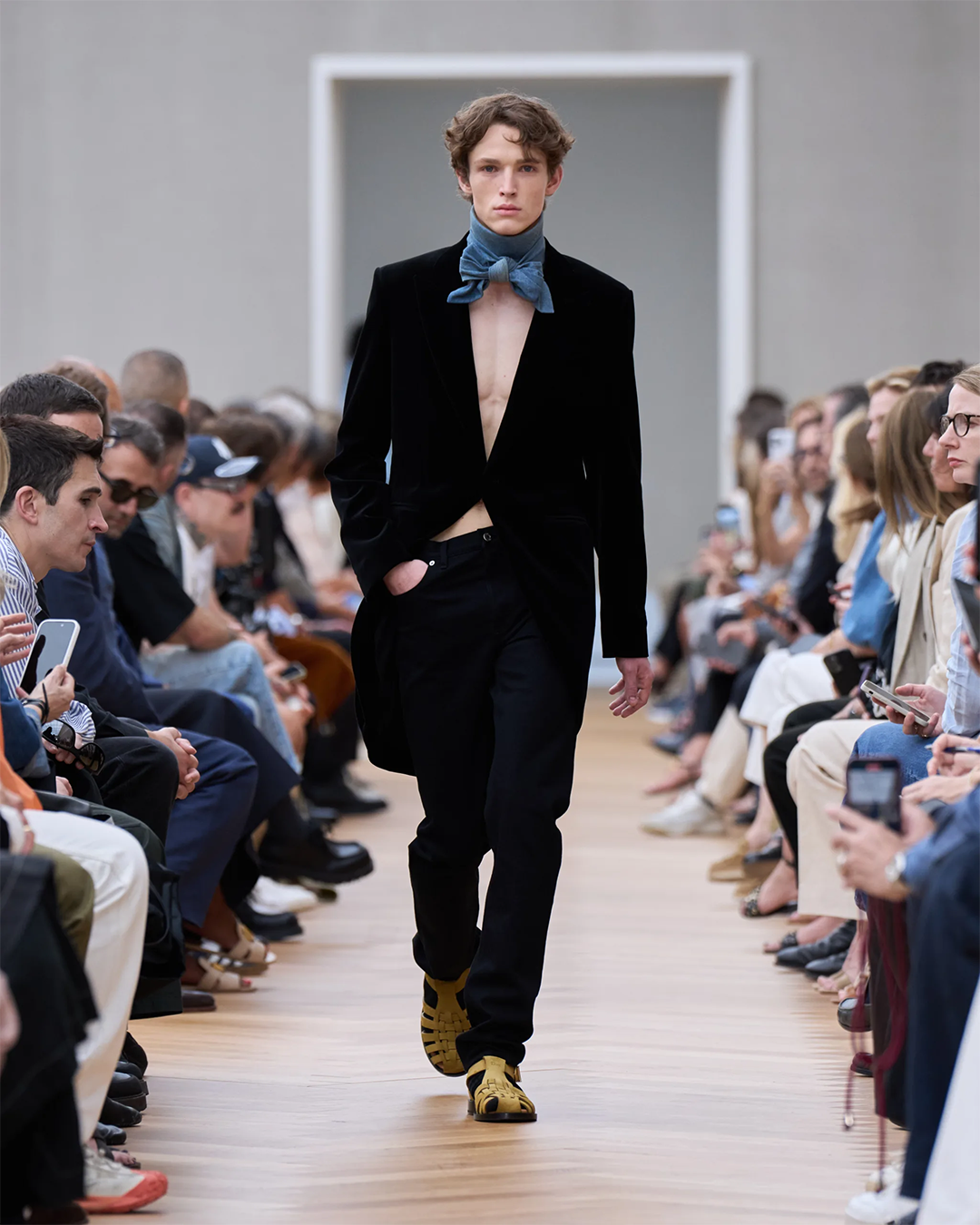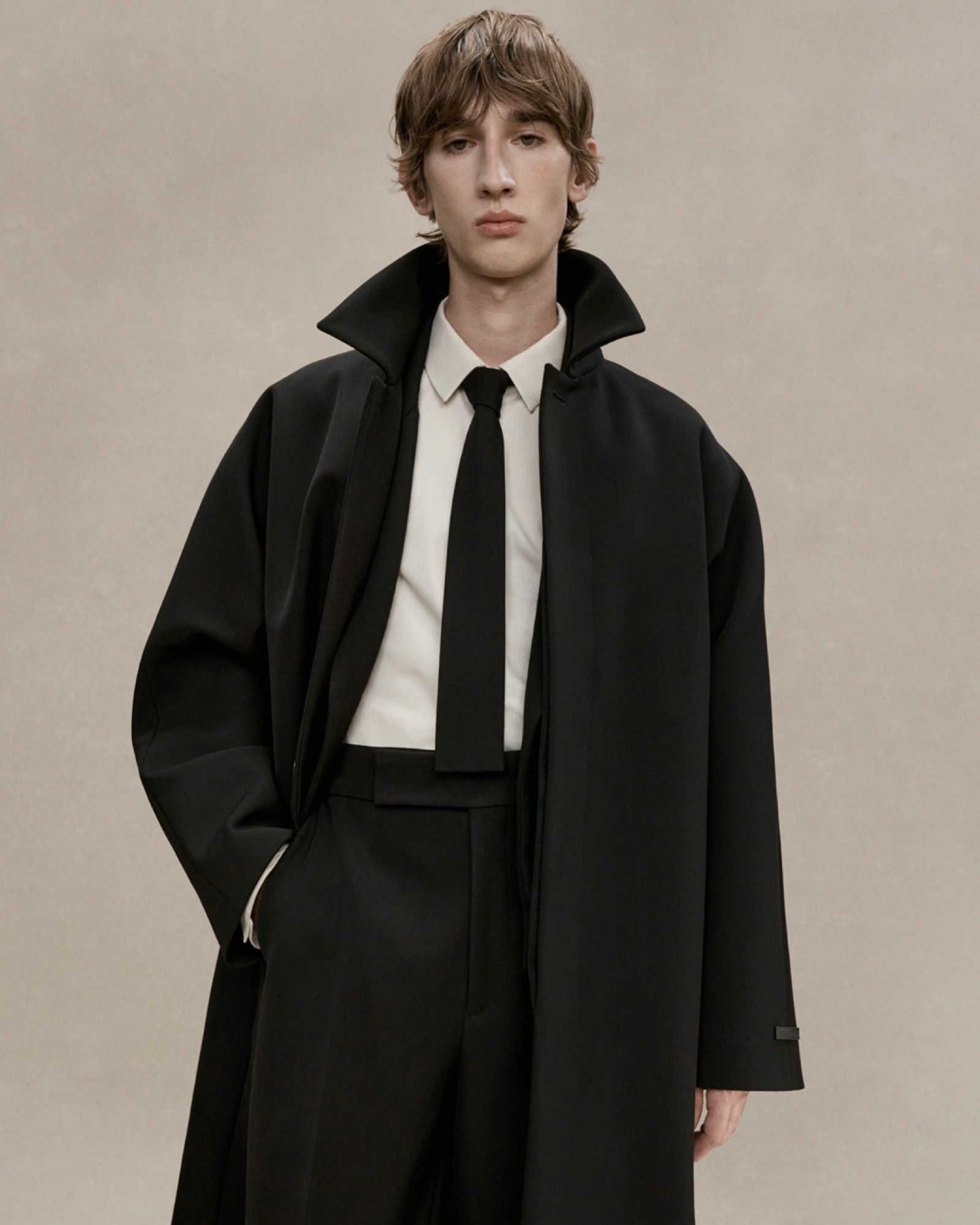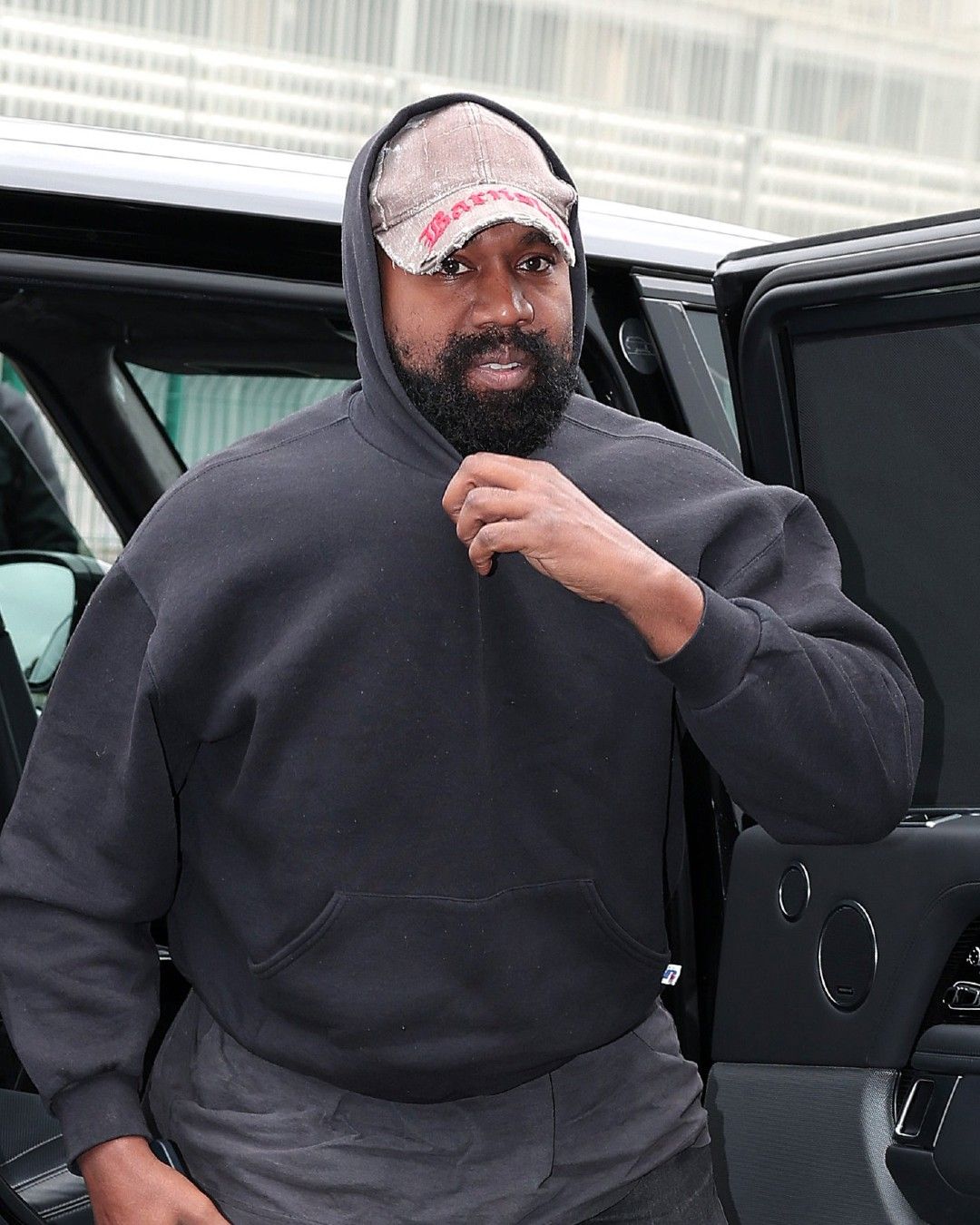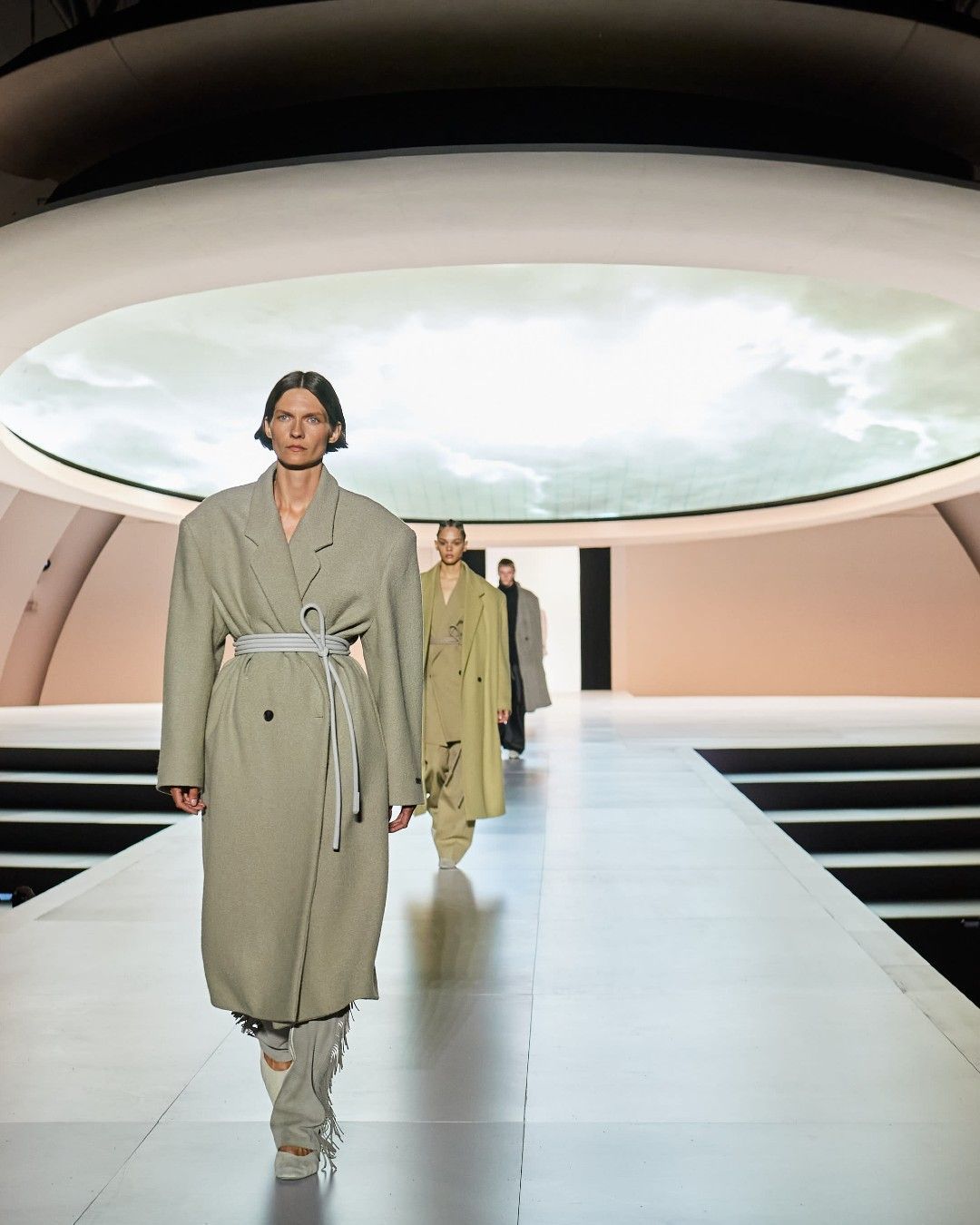
Fear of God and the renaissance of American tailoring Jerry Lorenzo's show was the culmination of a season rethinking the tradition of tailoring
In the night between Wednesday and Thursday, at the Hollywood Bowl in Los Angeles, Fear of God presented its SS23 collection with its first live runway show - a show that brought to final fruition that slow sartorial turn that began with the brand's collaboration with Zegna and then continued during the successful post-Covid years to the tune of monumental coats, neutral tones and generous draping. A vision elaborated for a long time by Jerry Lorenzo that, over the years, has come to encompass and sublimate the different facets of an American mythology made of traditional luxury mixed with elevated sportswear, of gentlemen in double-breasted suits, cowboys in jeans and suede jackets, and athletes in gray sweatpants - an operation similar to that done by Ralph Lauren, L.L. Bean and J.Crew in the 1980s and 1990s but adapted to modern times and audiences. The popularity Lorenzo enjoys in America and abroad, his ability to gather around him a milieu of celebrities who revolve around hip-hop, music, and film by creating a stylistic koine based on the idea of "essentials," the way he manages to bring sartorial inspiration, bags, and heels into dialogue with pop collaborations such as the one with adidas or Birkenstock make Fear of God one of the very few brands that survived the streetwear era after being born into it.
But the phenomenon that FoG's expansion is not isolated: in recent seasons there have been many star-studded brands pushing toward a redefinition of the scope and purpose of classic tailoring, from arcane brands to insiders such as The Row, Bode, Peter Do, Thom Browne, and Rowing Blazers, to cult or emerging brands such as Todd Snyder, Stoffa, WINNIE New York, The Academy, Teddy Vonranson, Willy Chavarria but also the loafer brand Blackstock & Weber. If in recent years, popular American fashion (we are certainly not talking about De La Renta, Vera Wang or Donna Karan) was defined by its flashiness, eccentricity, its obsession with an informal and sporty wardrobe, succeeding little in seducing the more "adult" European public and perhaps tied to its own sartorial traditions (such as Italian, English or French) today things are changing. Oddly enough, however, the very success of recent, more recognizably classic collections is linked precisely to the designers' attachment to the streetwear language that has led them to focus on ample and enveloping proportions, bright colors, and comfortable reinterpretations of outdated formal codes. An update of the classic men's uniforms midway between prep and leisurewerar that has also arrived in Europe in the guise of a quiet luxury spread almost everywhere today that mixes the rigor and exquisite detailing of great tailoring with the practicality and wearability of workwear and streetwear.
If today, for example, the chore jacket is replacing the blazer for sportier looks, it is due precisely to the popularity that, historically, workwear has enjoyed in the 1990s hip-hop scene and to a passion for military vintage that, before the explosion of archival fashion, was confined in Europe to a small community of admirers who found expression, until a few years ago, only among the peacocks who populate Pitti Immagine. But this is no longer the case today: if on TikTok a singer like Tony Effe sings today «I wear a Loro Piana suit to go to my trial» and if Jerry Lorenzo has gone from patron saint of hypebeasts to relaxed dandy of the green hills of Los Feliz, something must have changed and what was old yesterday has become relevant again while the novelty and rupture brought by streetwear belong to a language that exists but, in its most immediately contemporary form, is already passé.
One of the main culprits of this repositioning can be pointed to Teddy Santis who, with Aimè Leon Dore, has built a bridge between the world of the hoodie and that of the blazer, between the herringbone wool coat and the sneaker, between the striped trouser and the baseball cap, between university prep and city sportswear. Perhaps a matter of cultural zeitgeist that, in any case, seems to respond to a need for authenticity, historical depth, and originality that an overly standardized or programmatically vulgar fashion was no longer able to satisfy.


